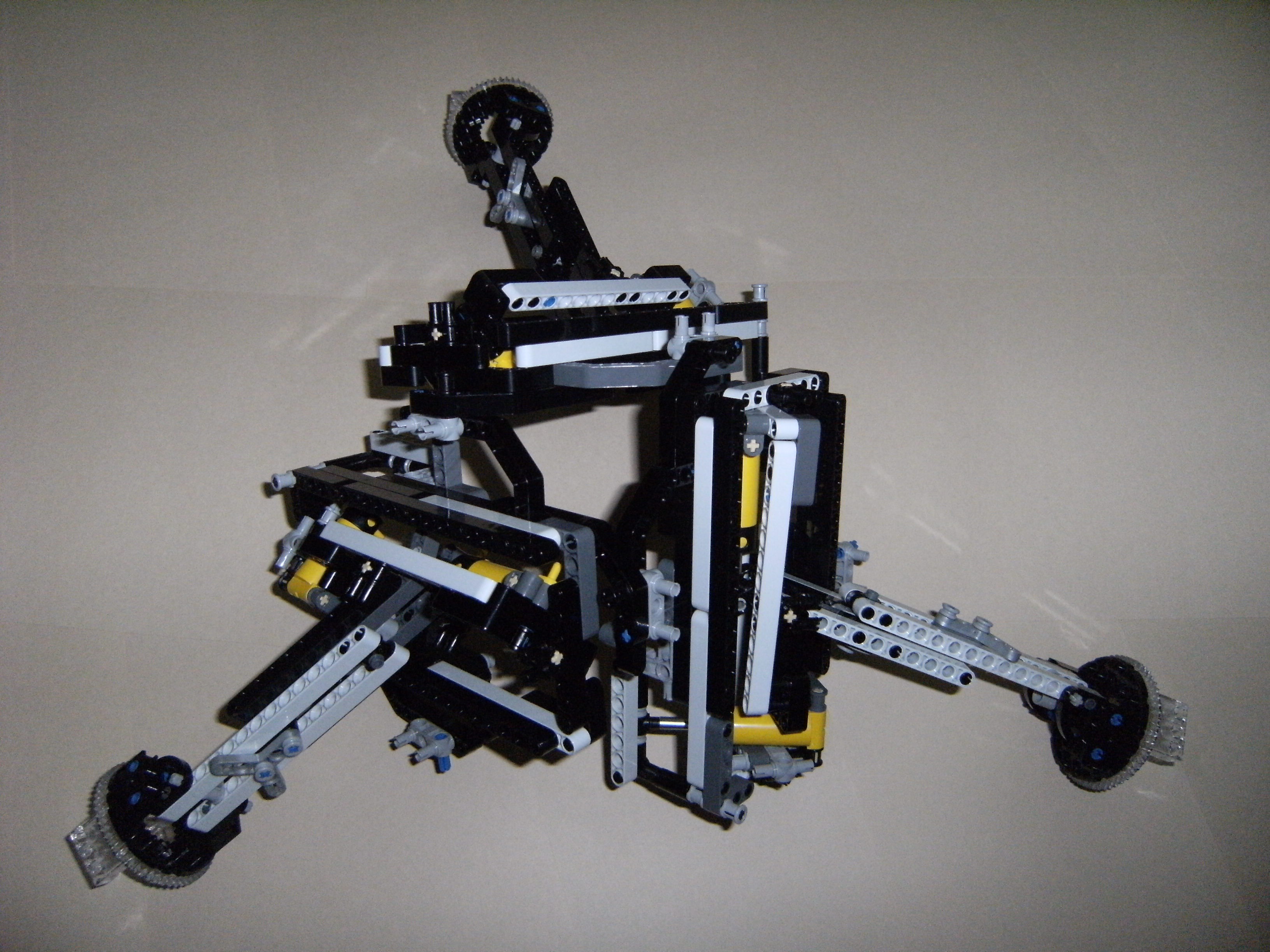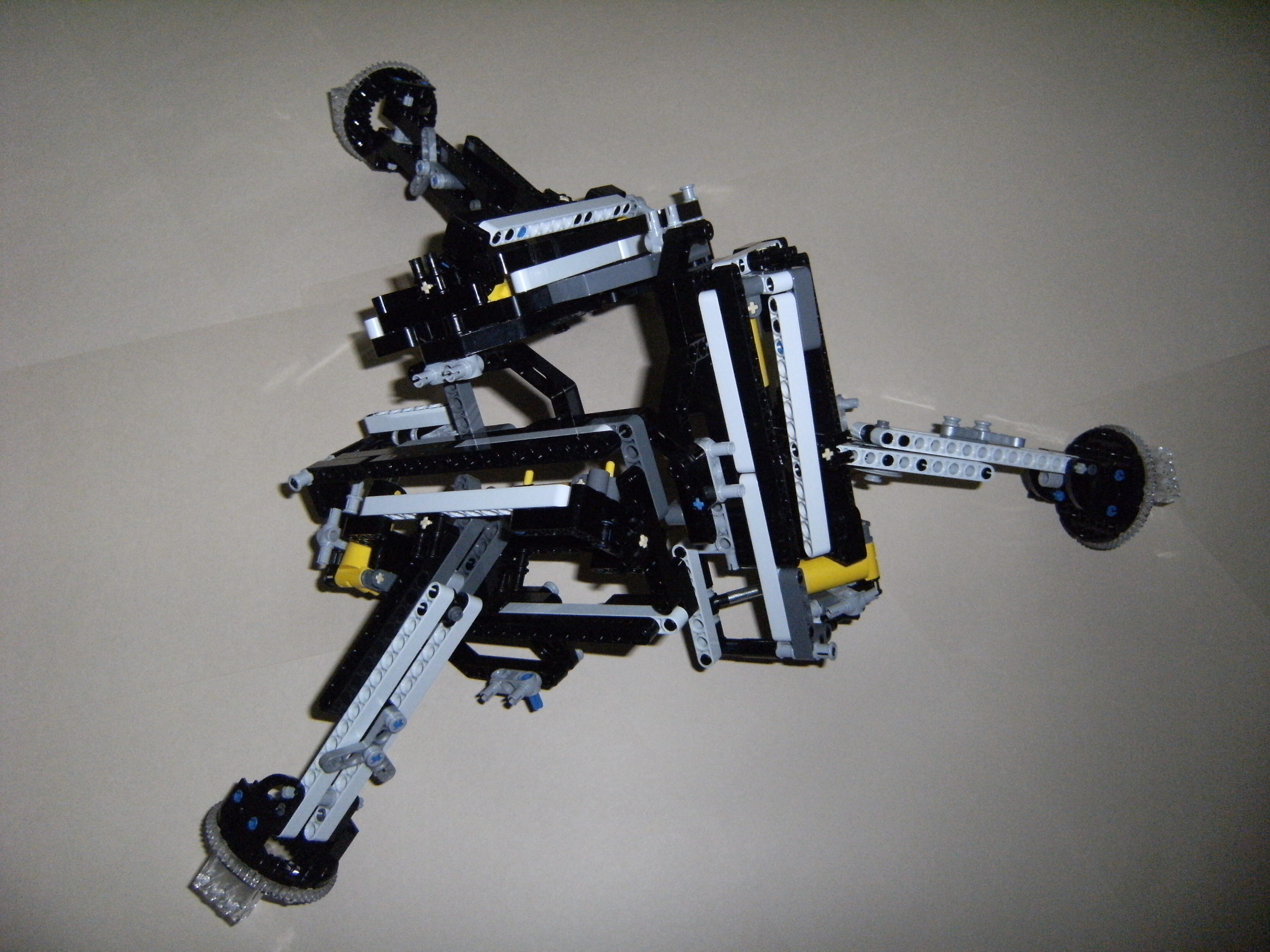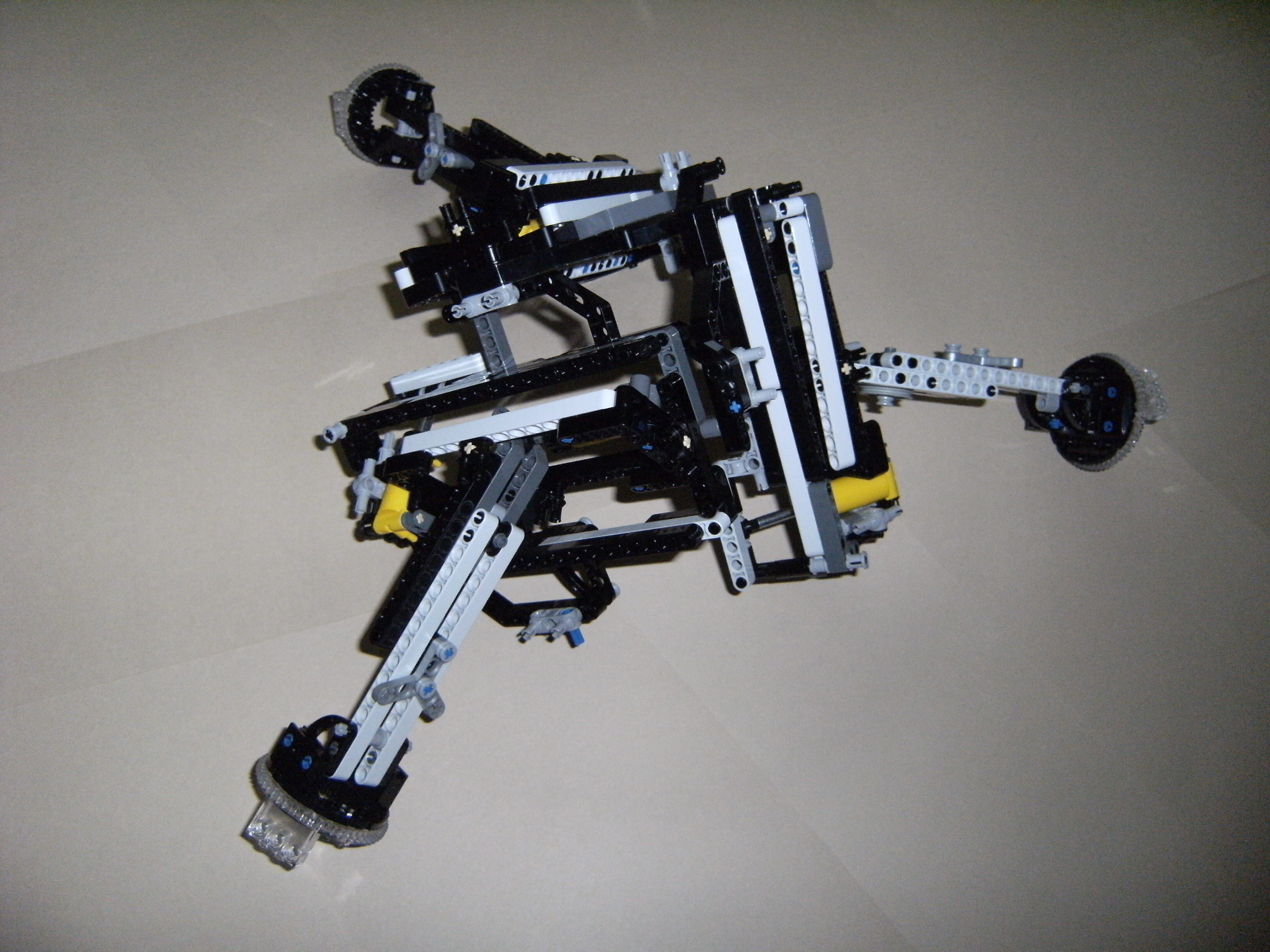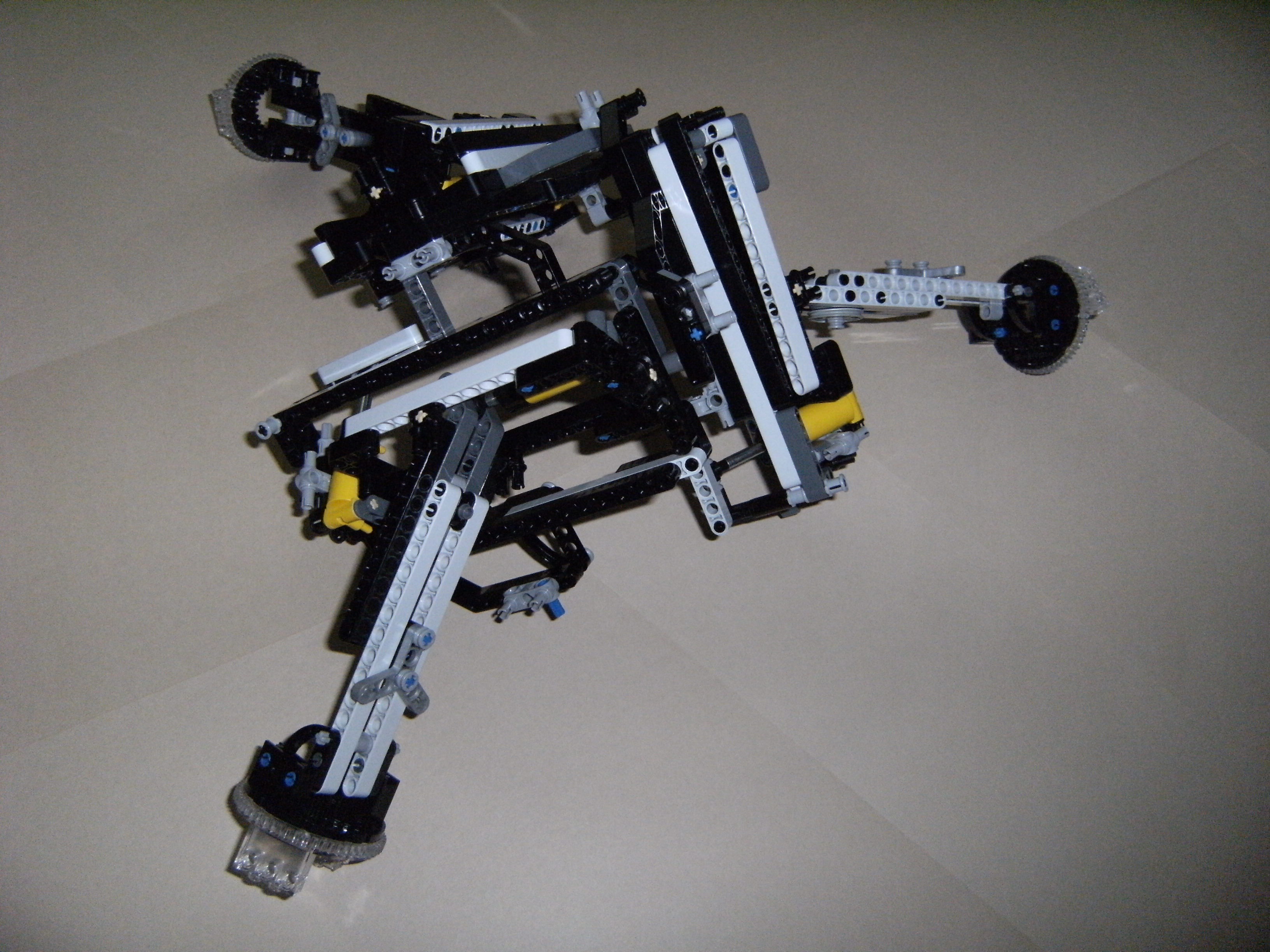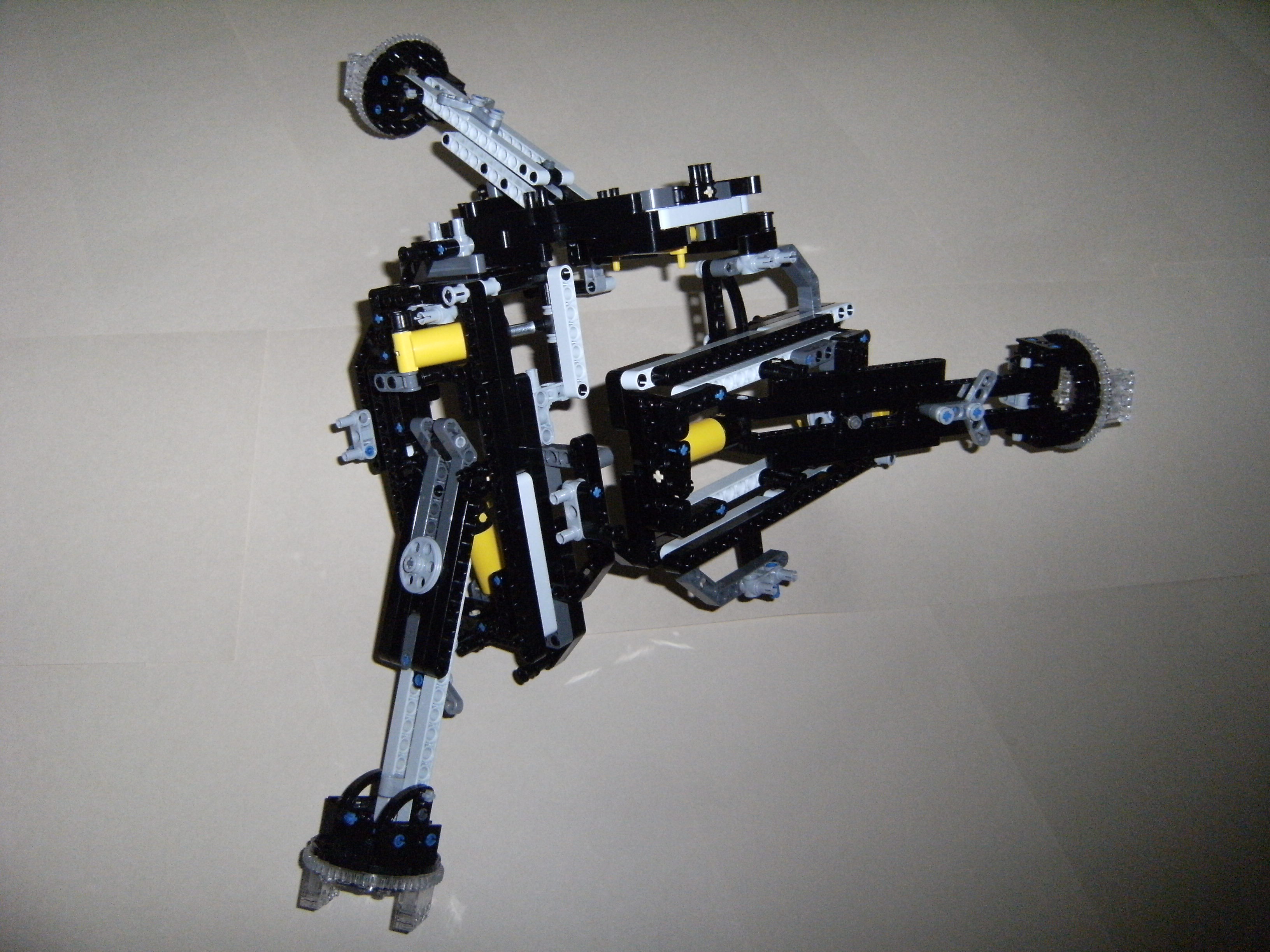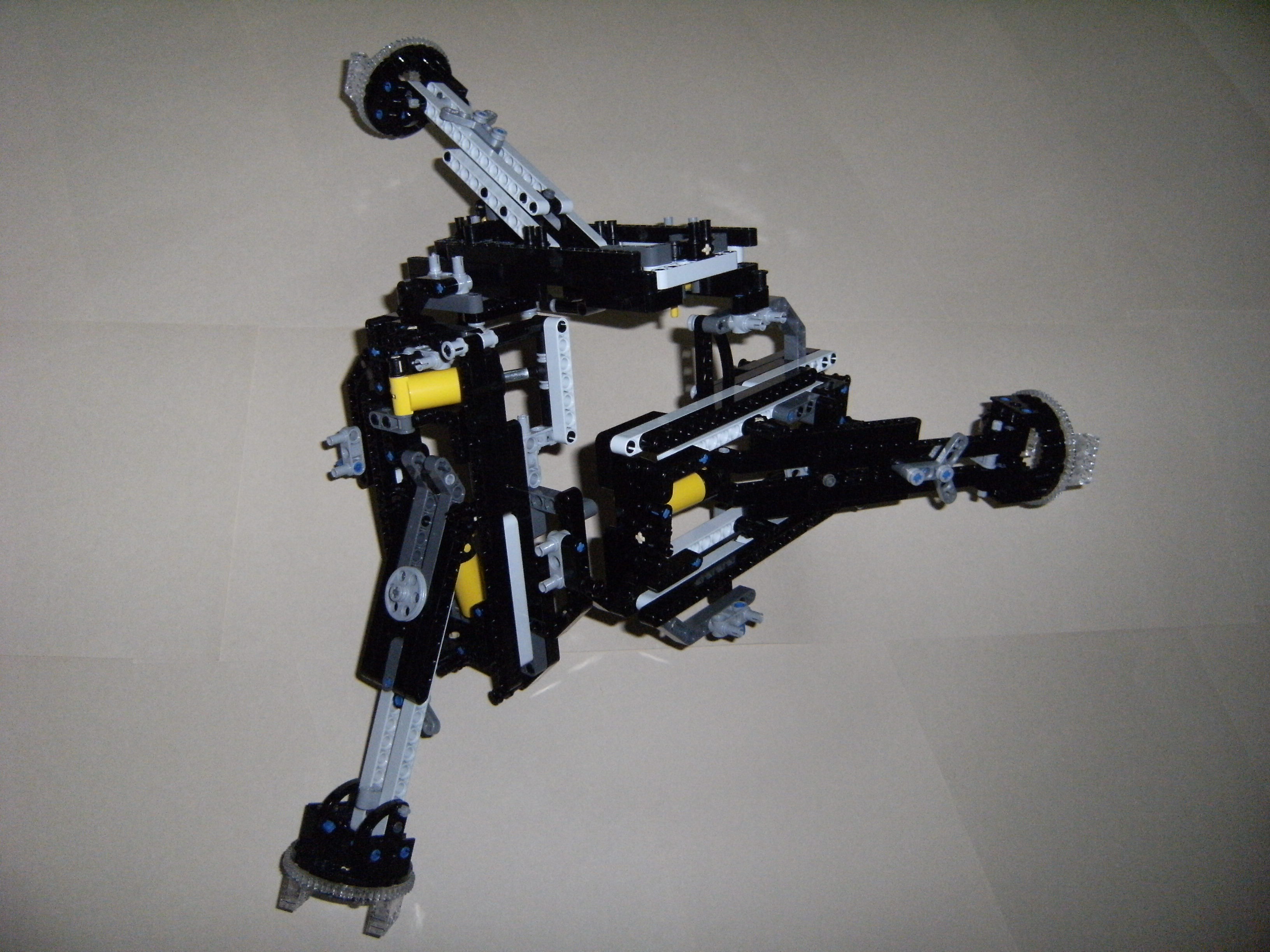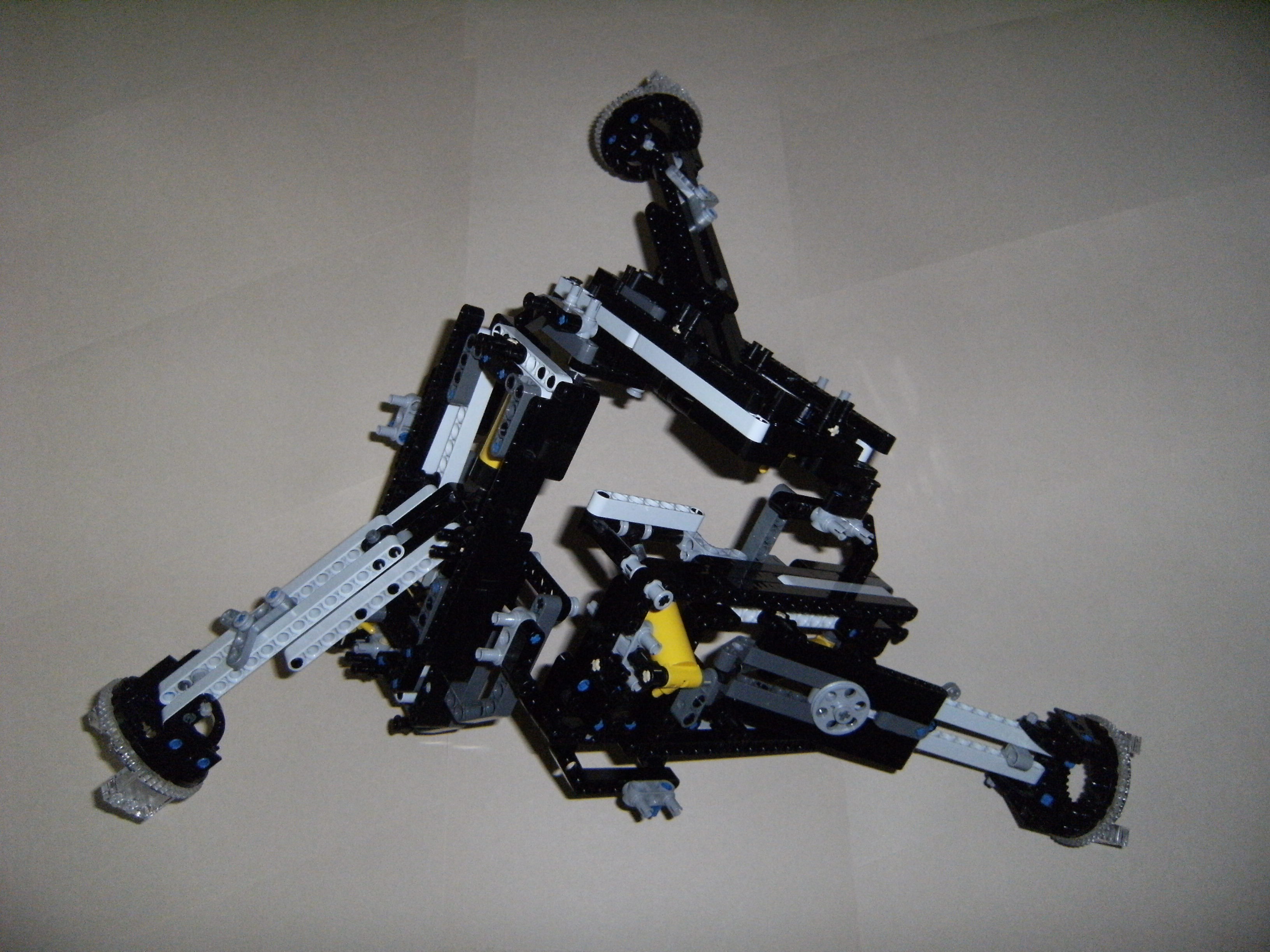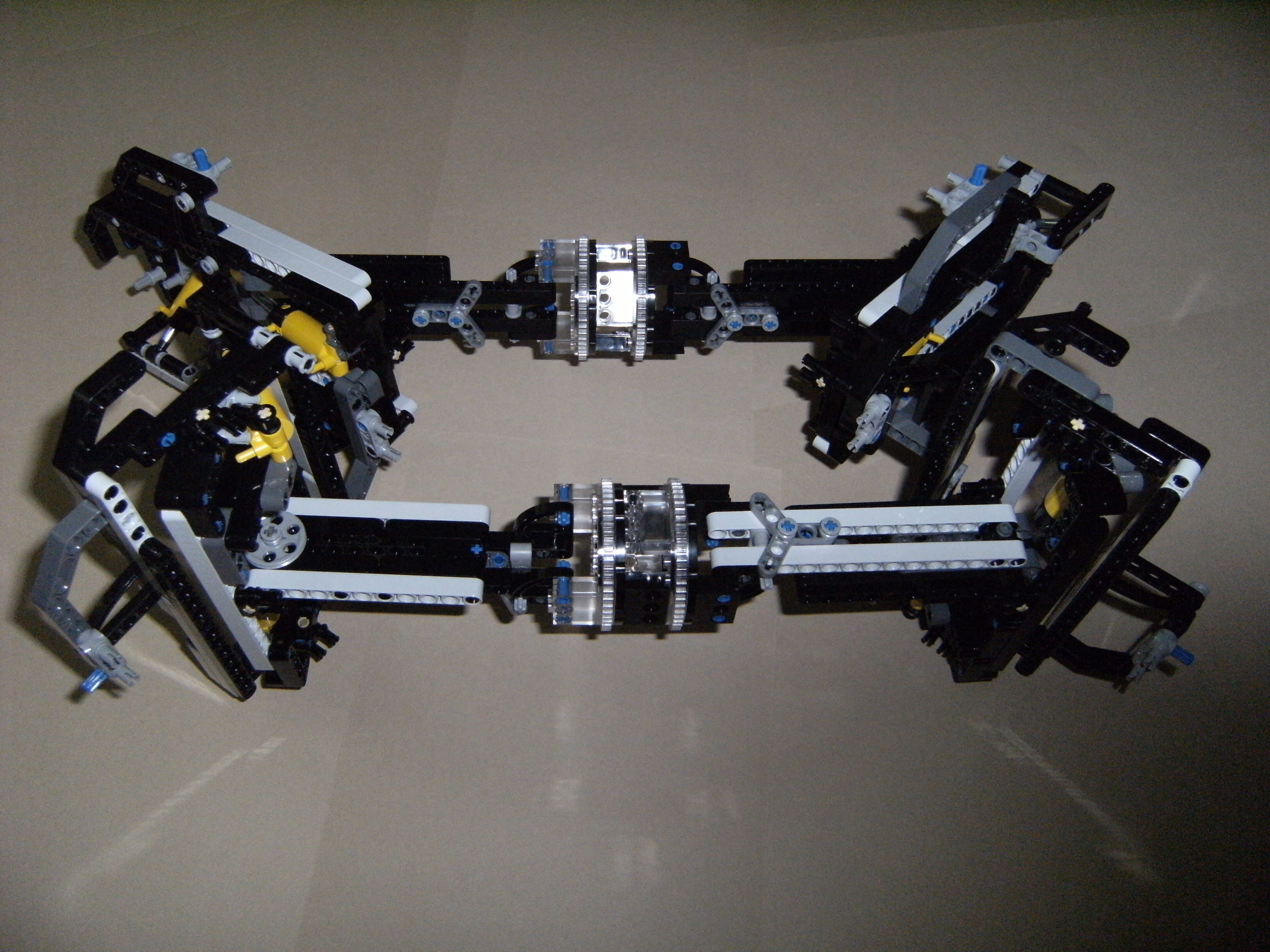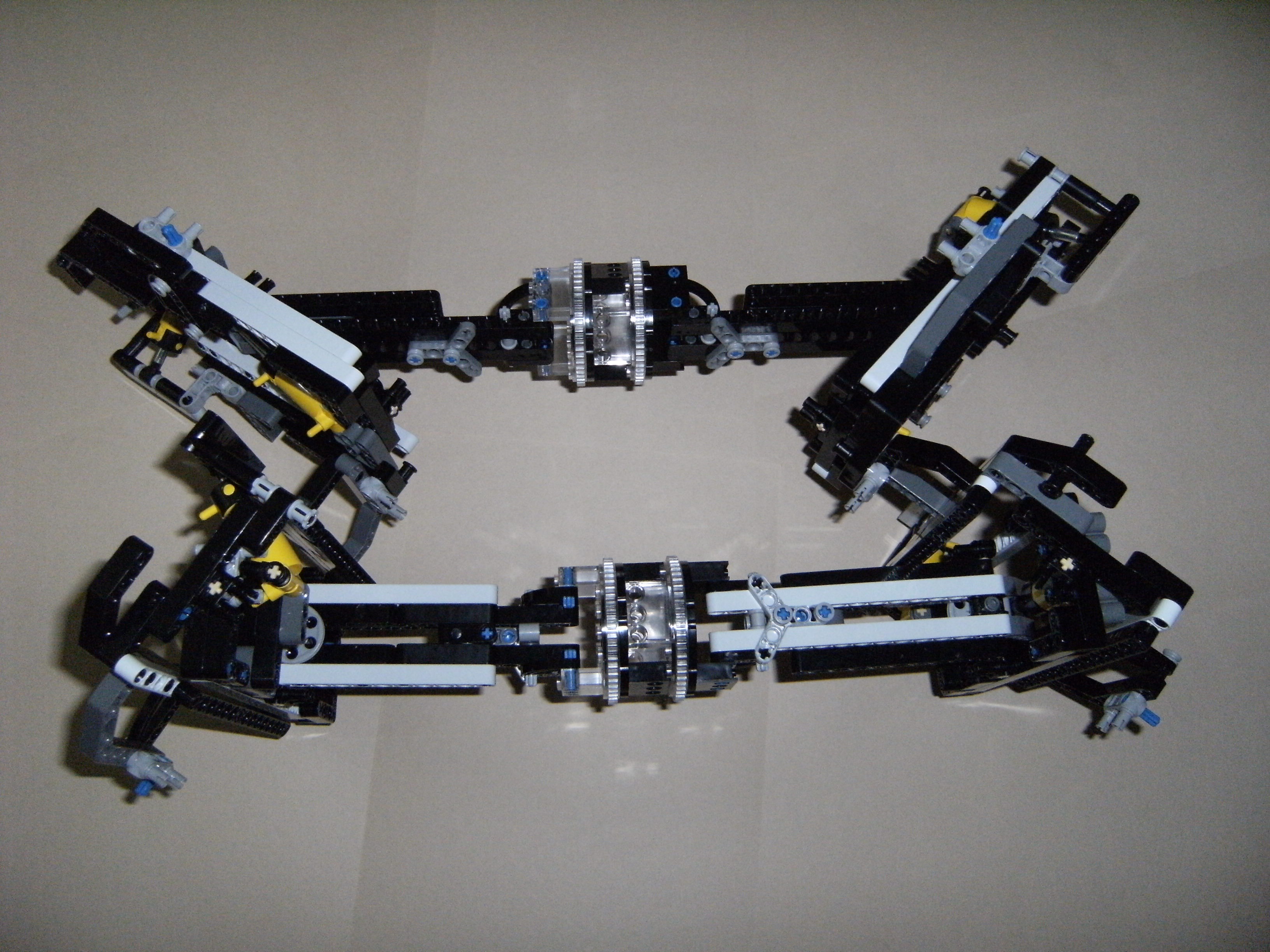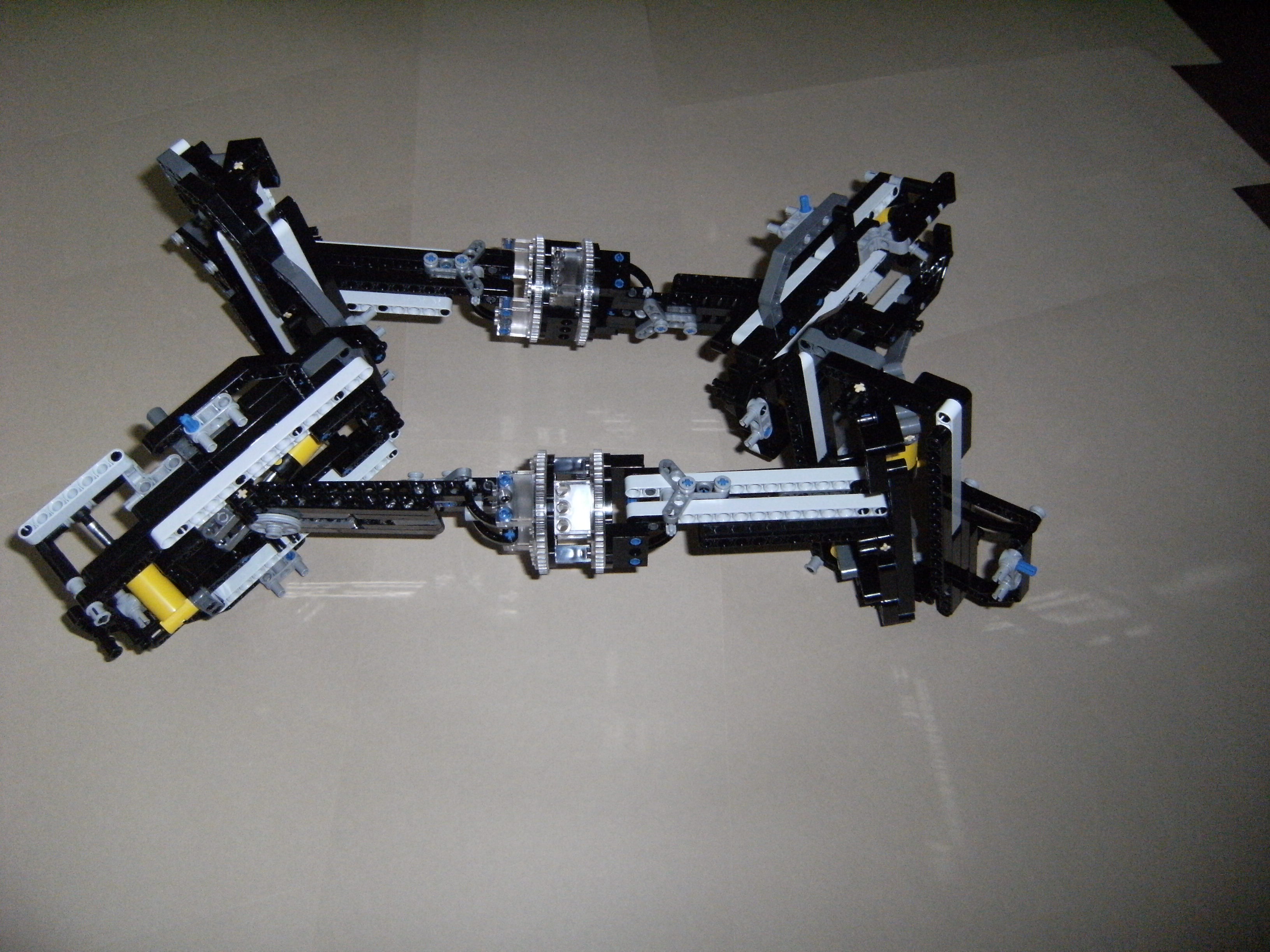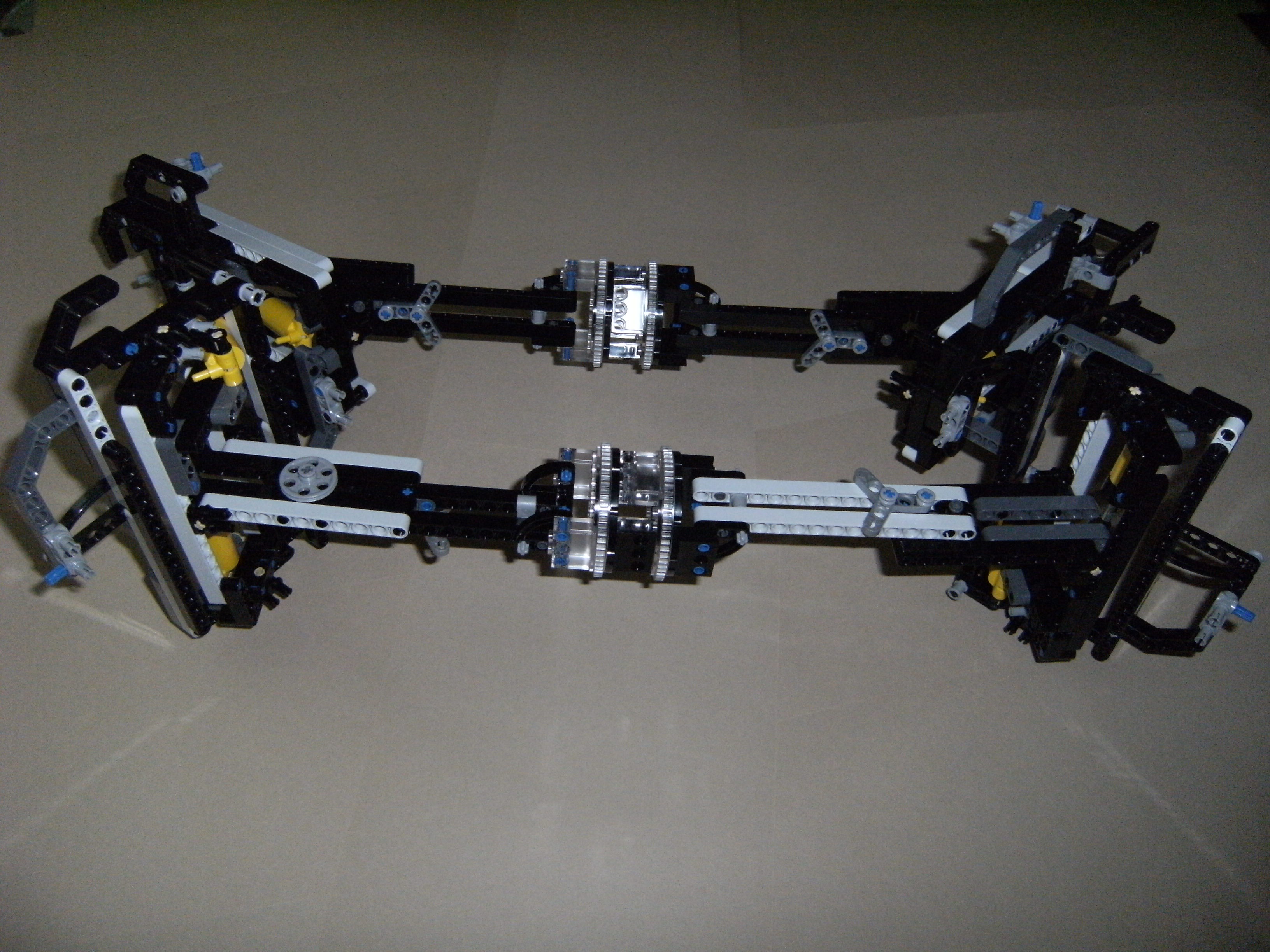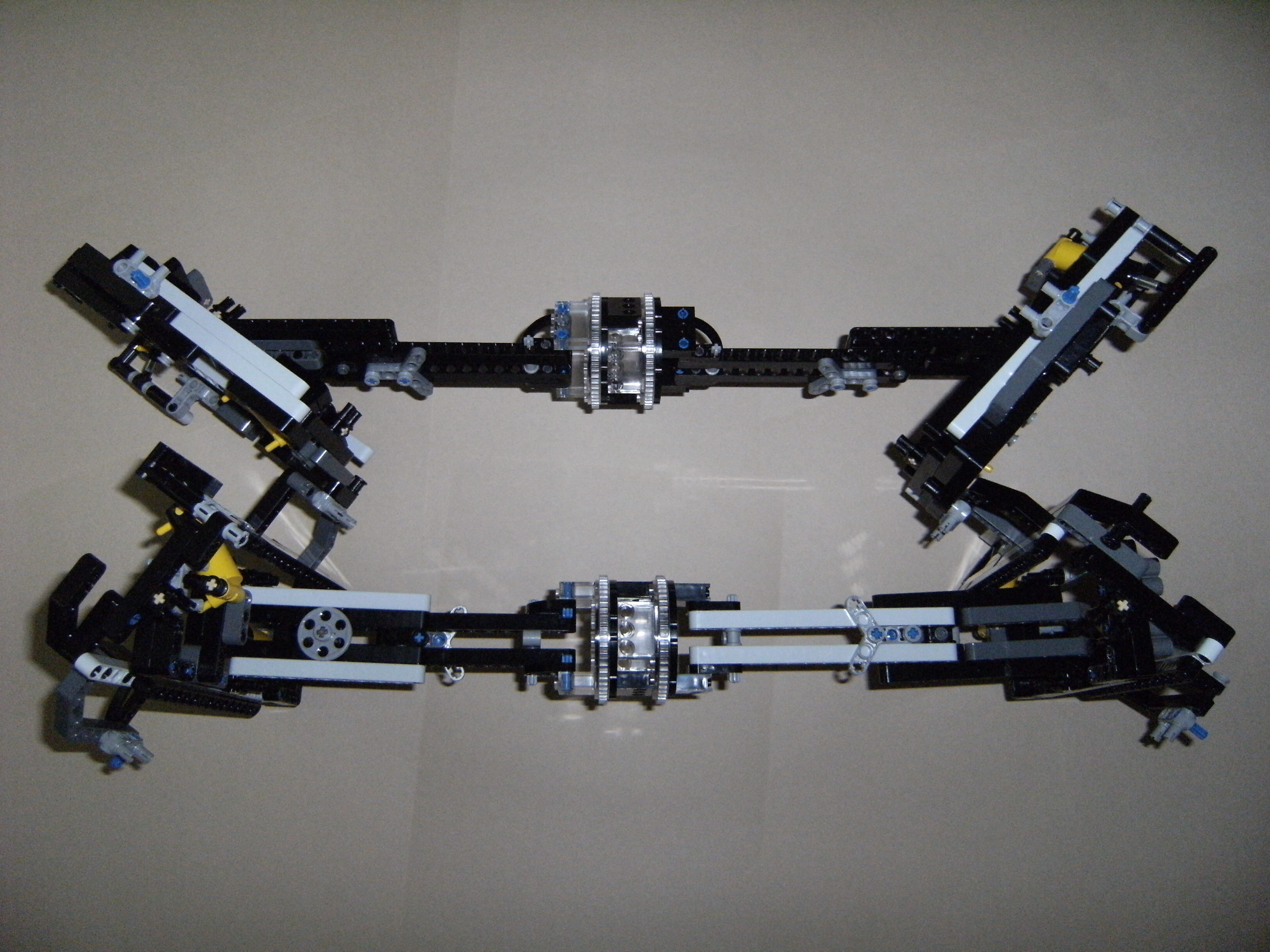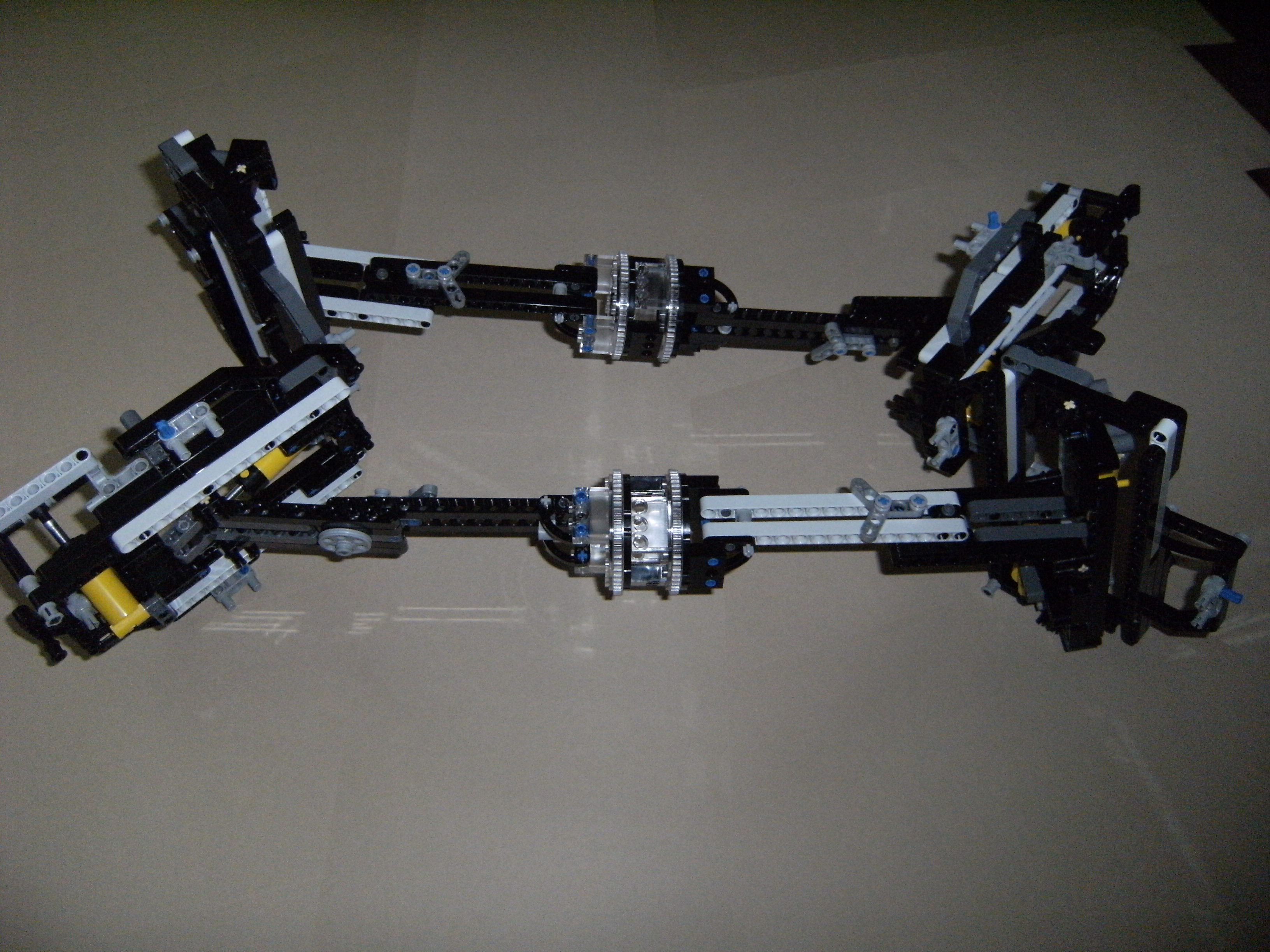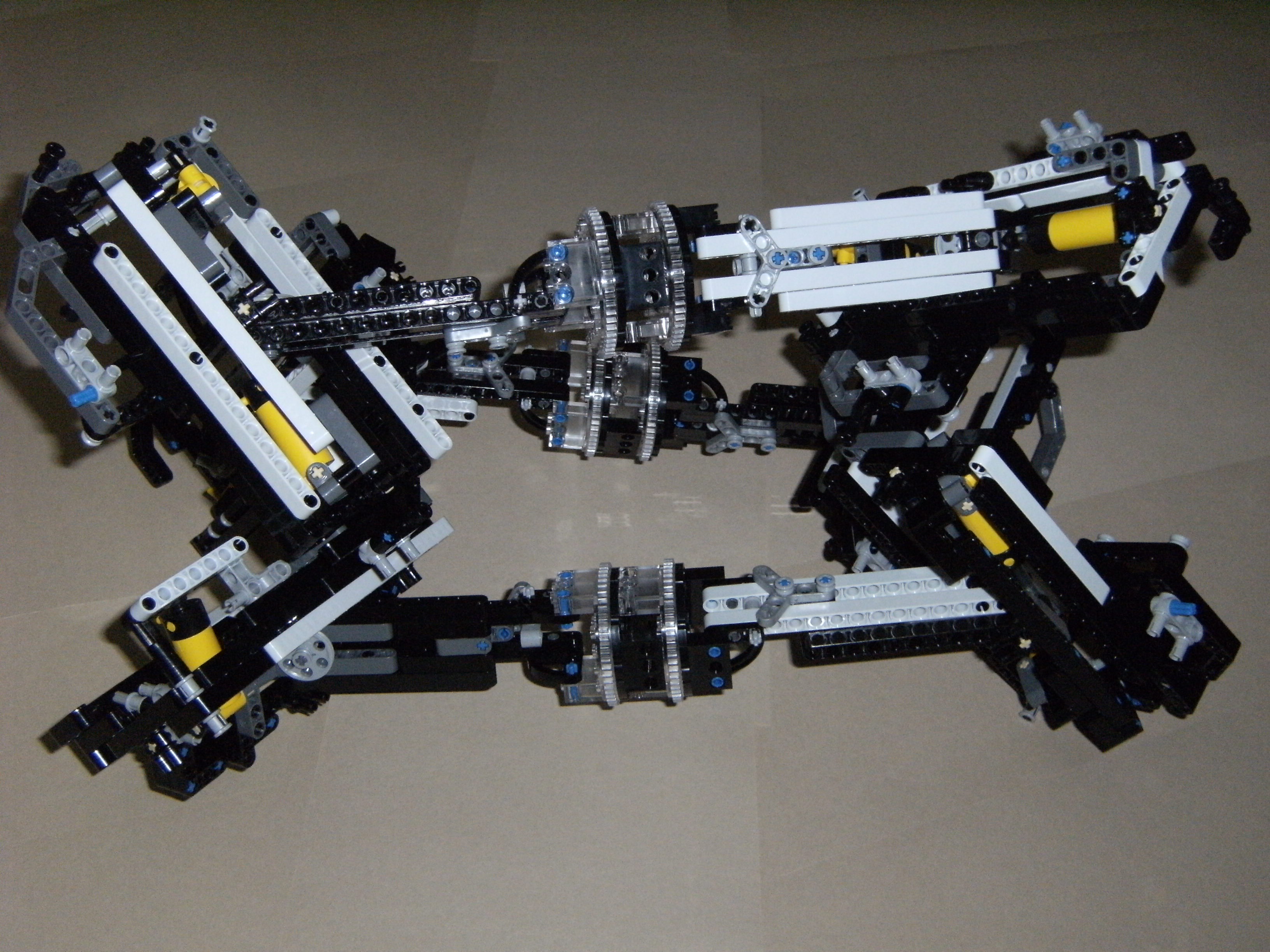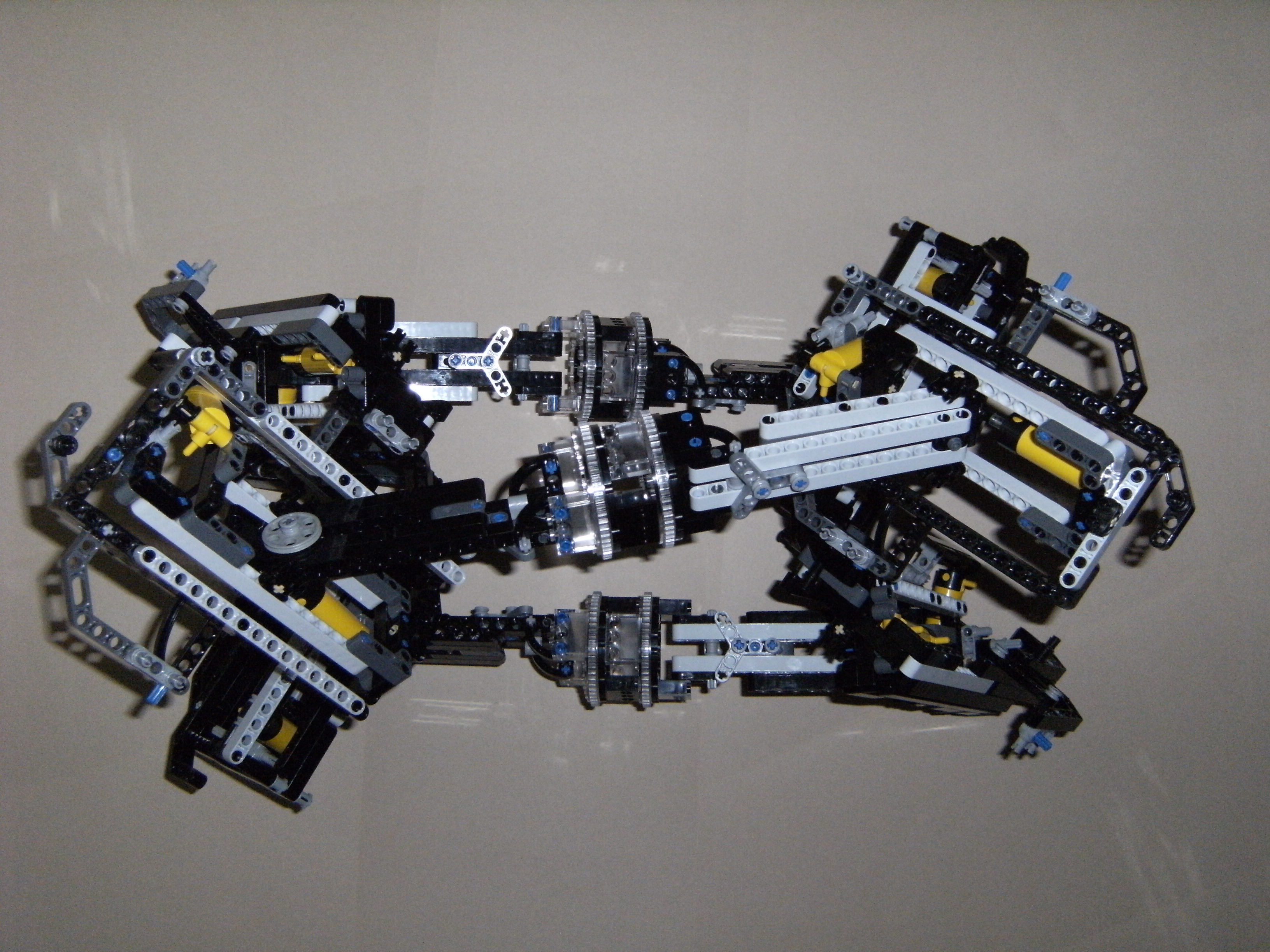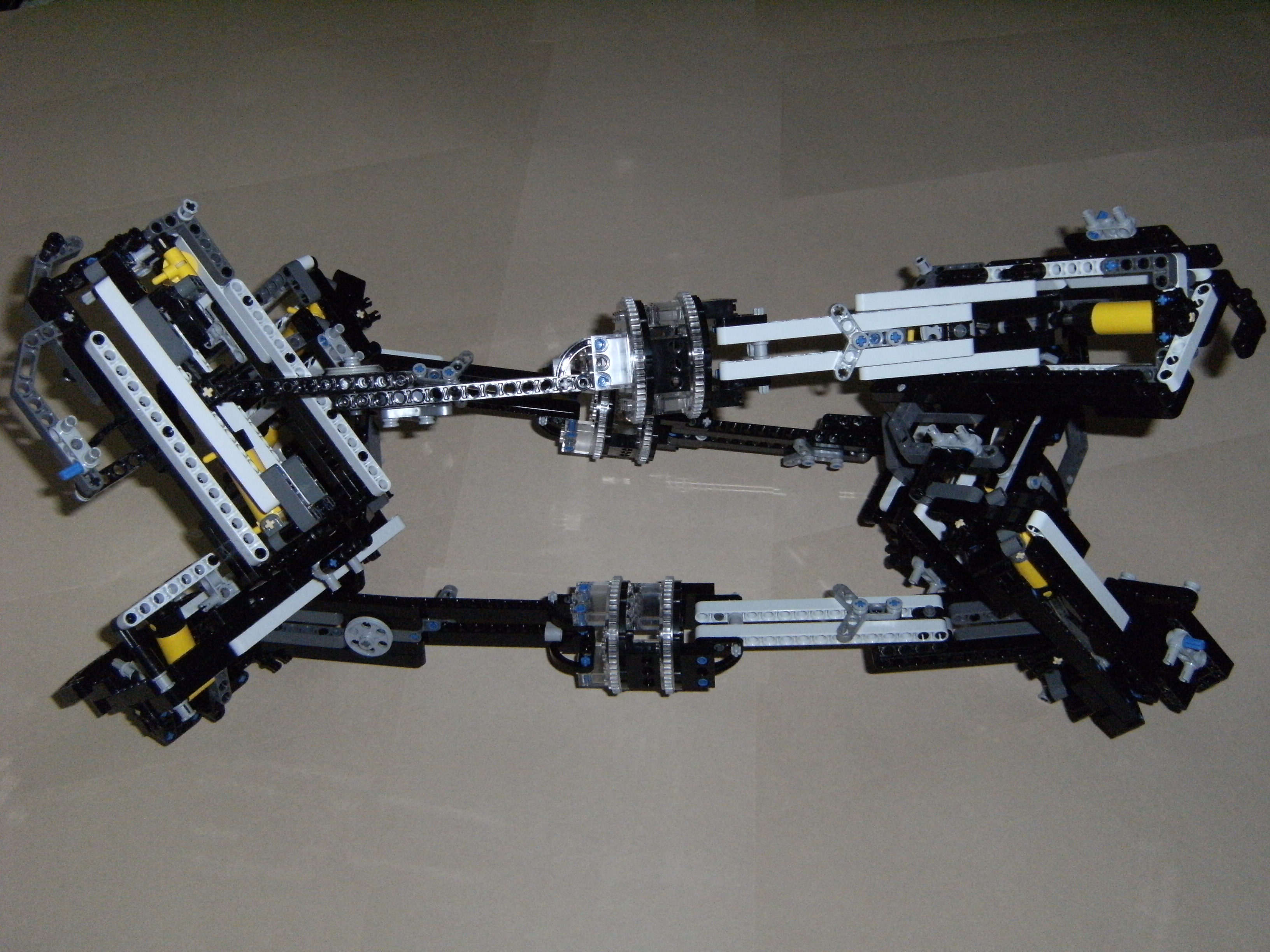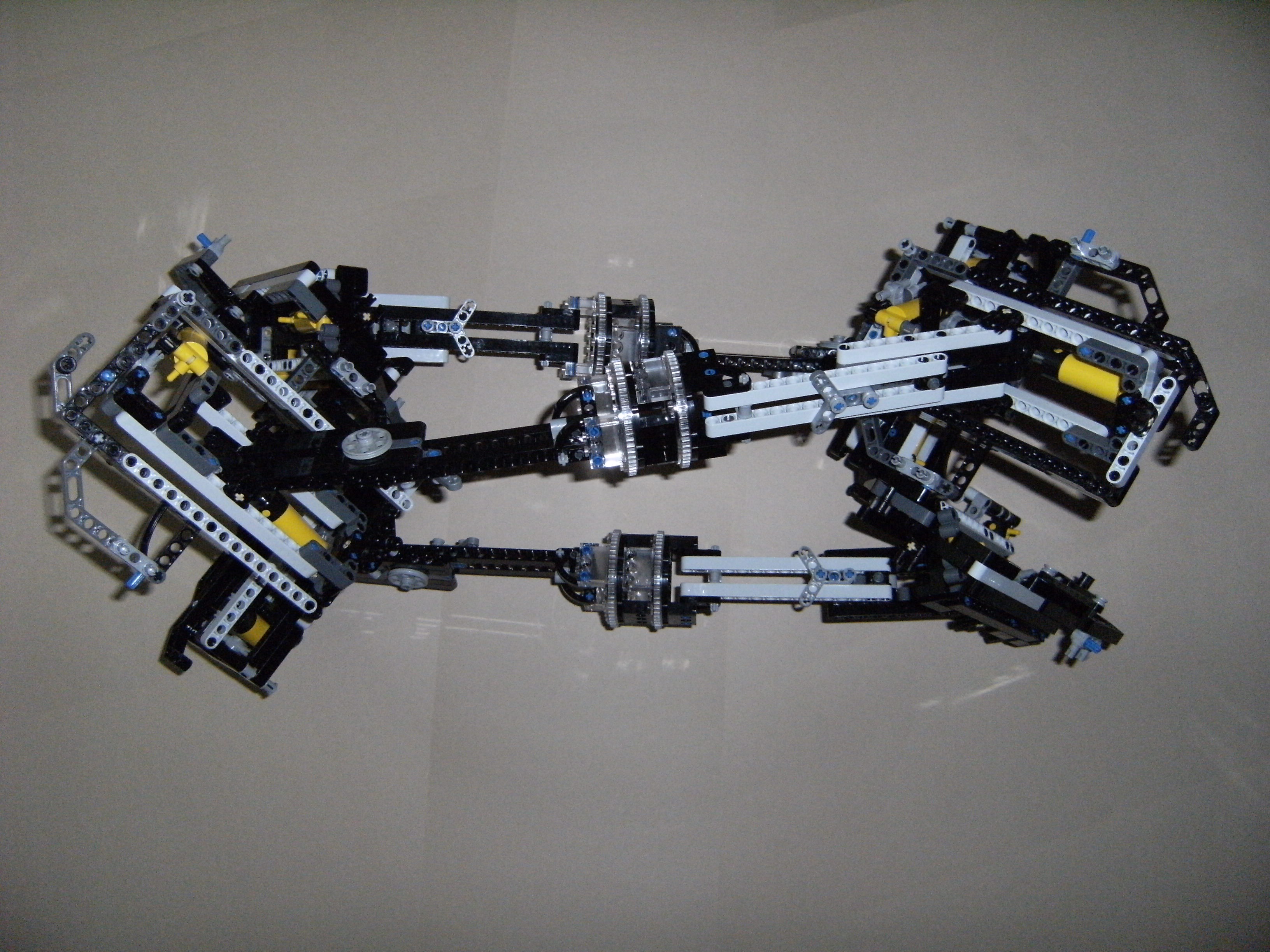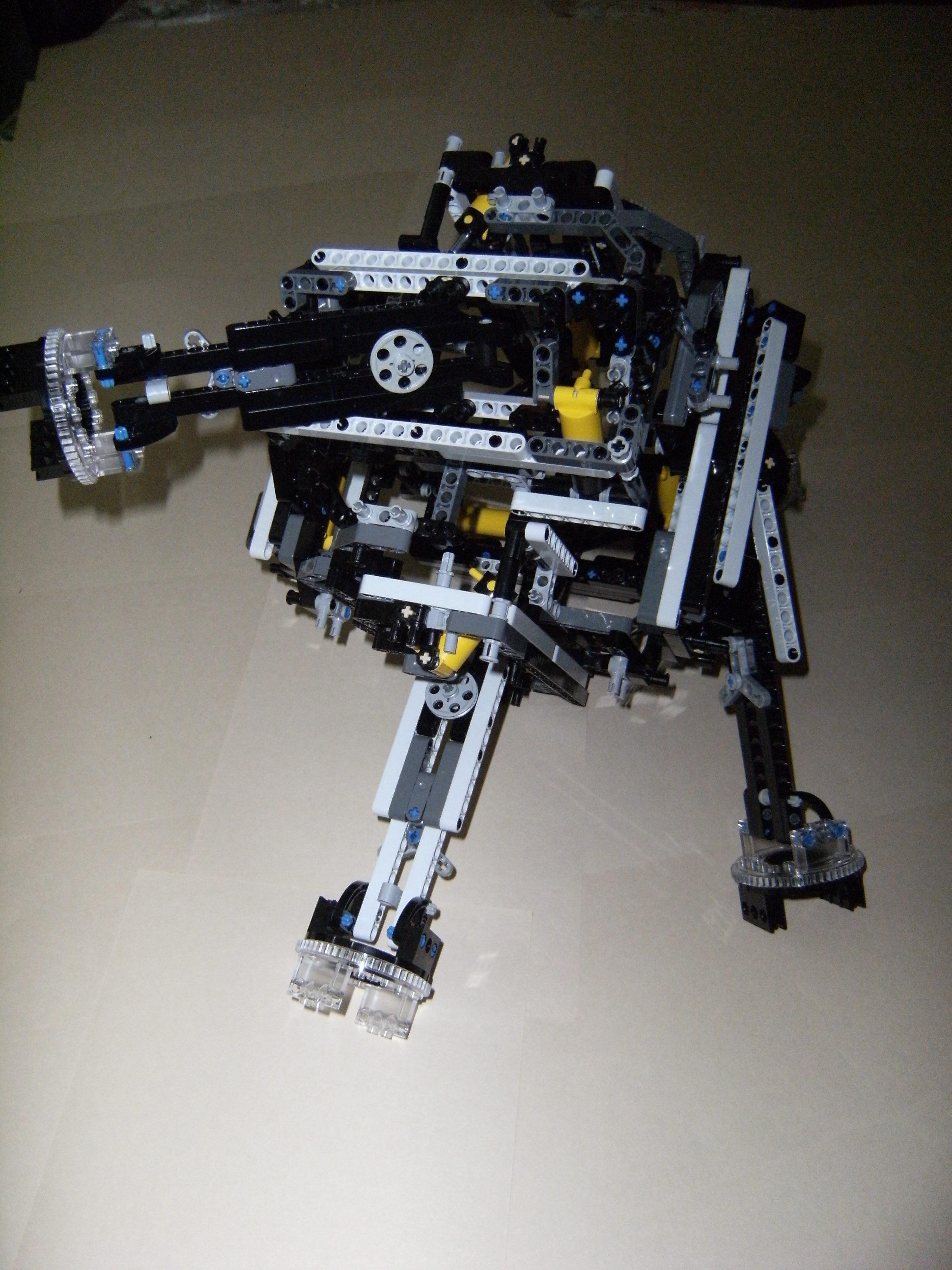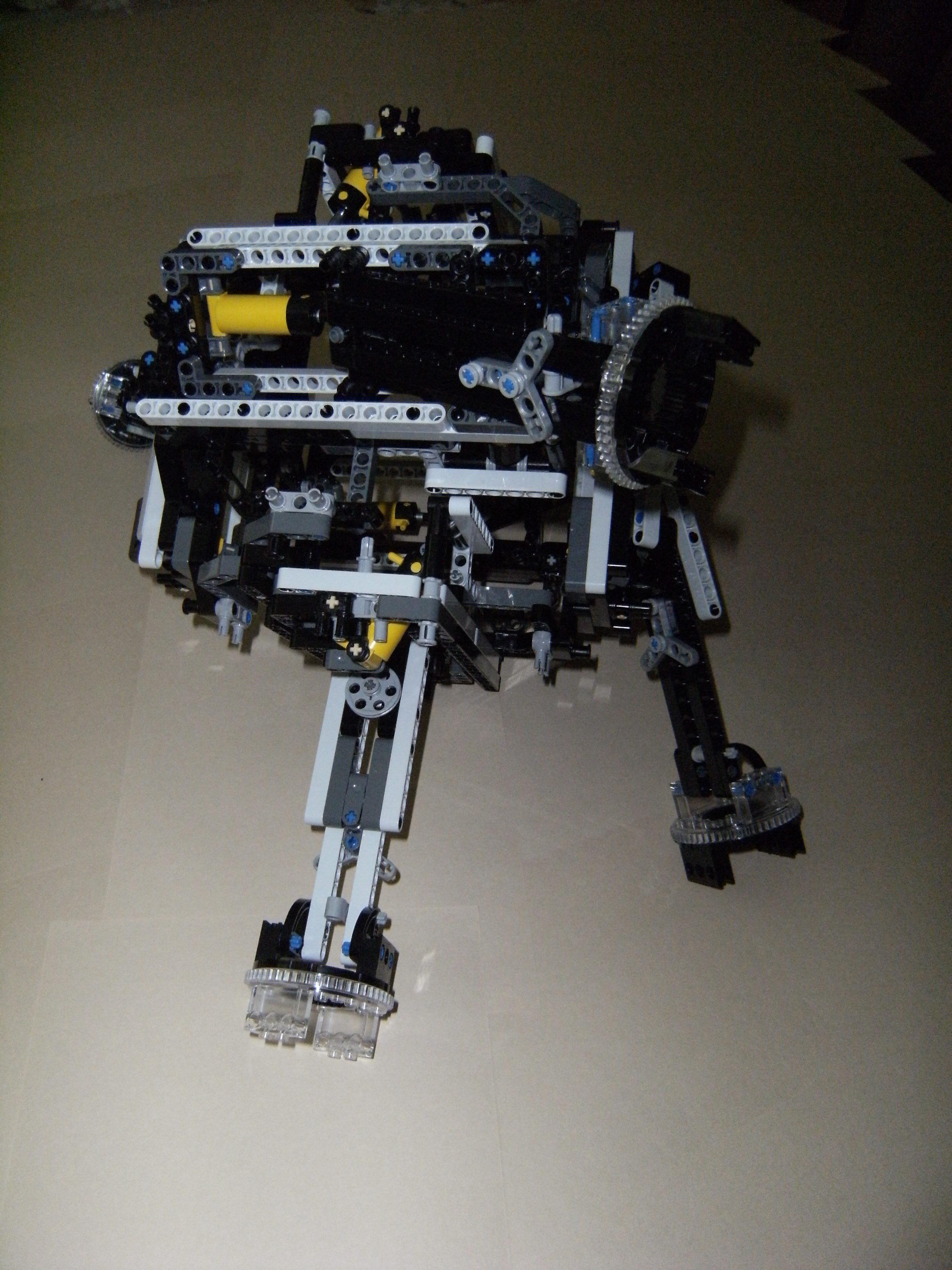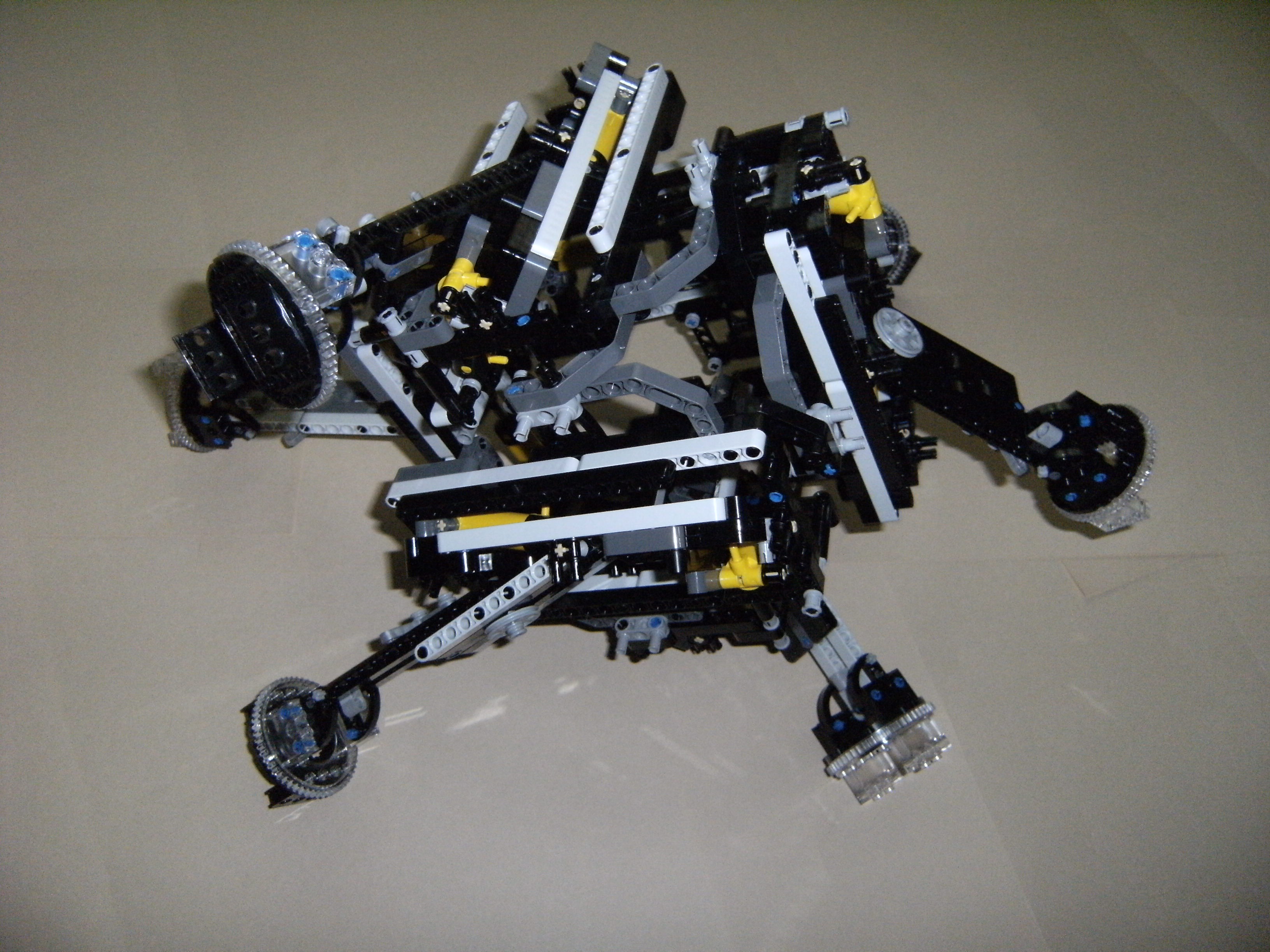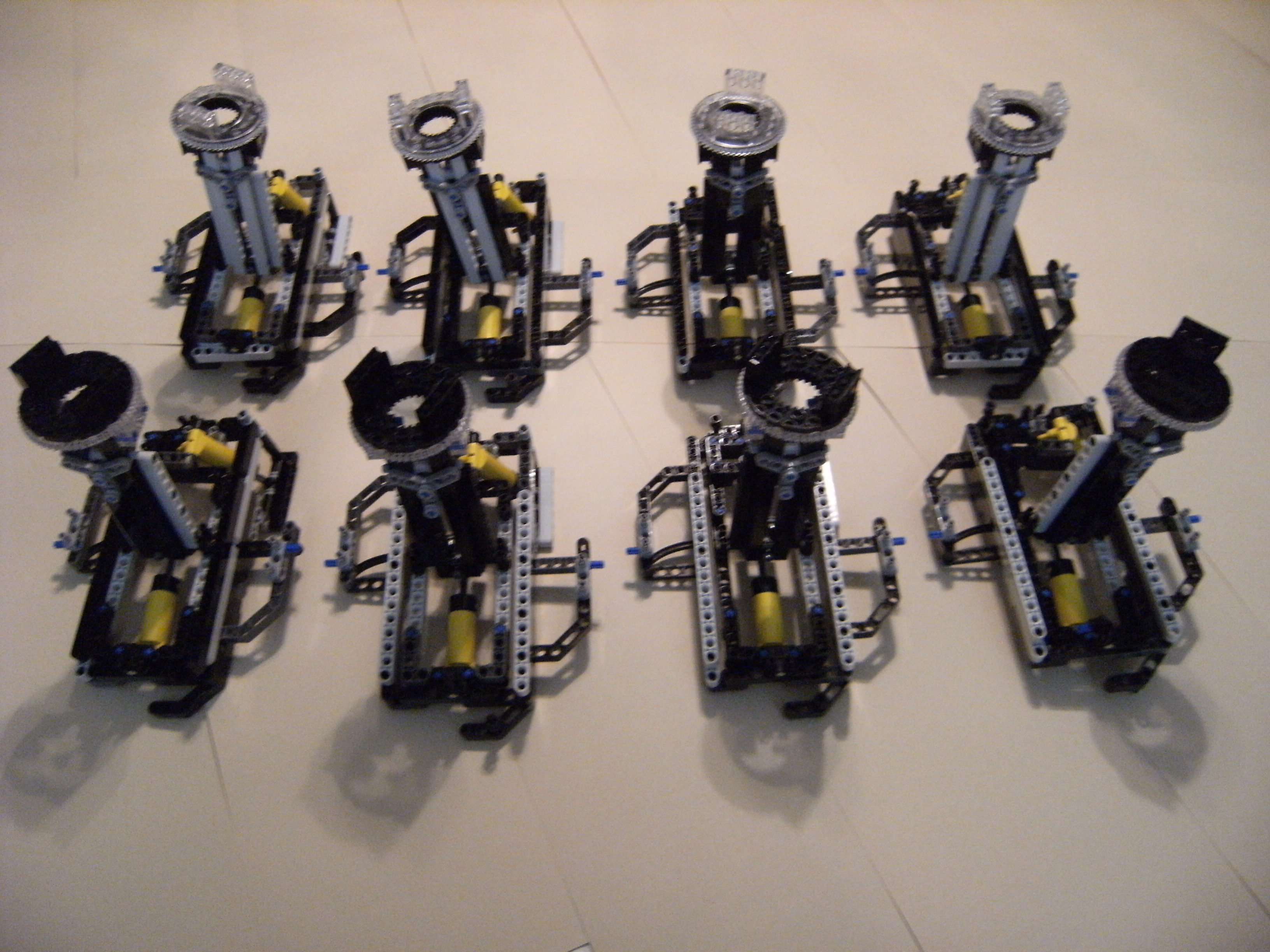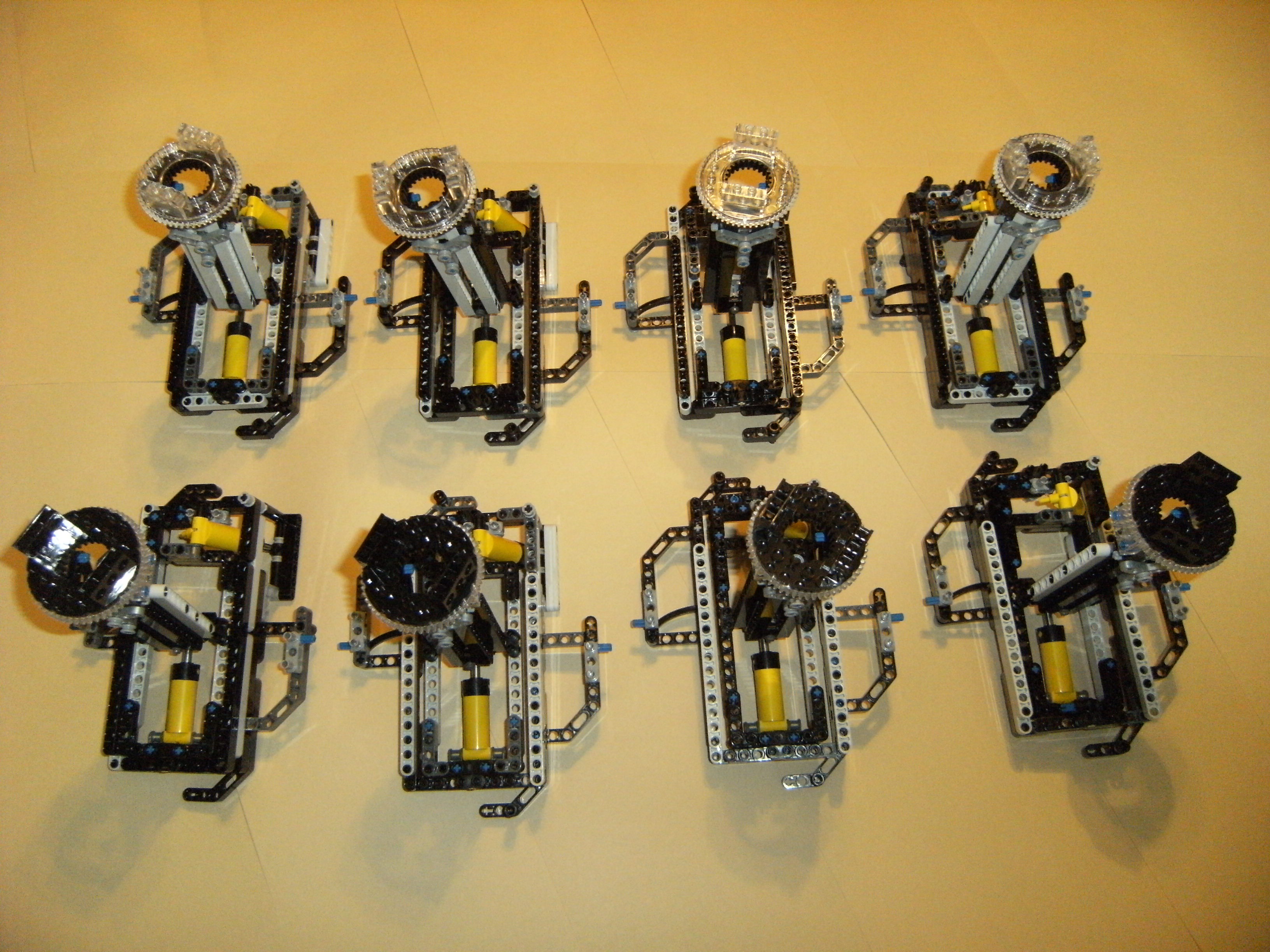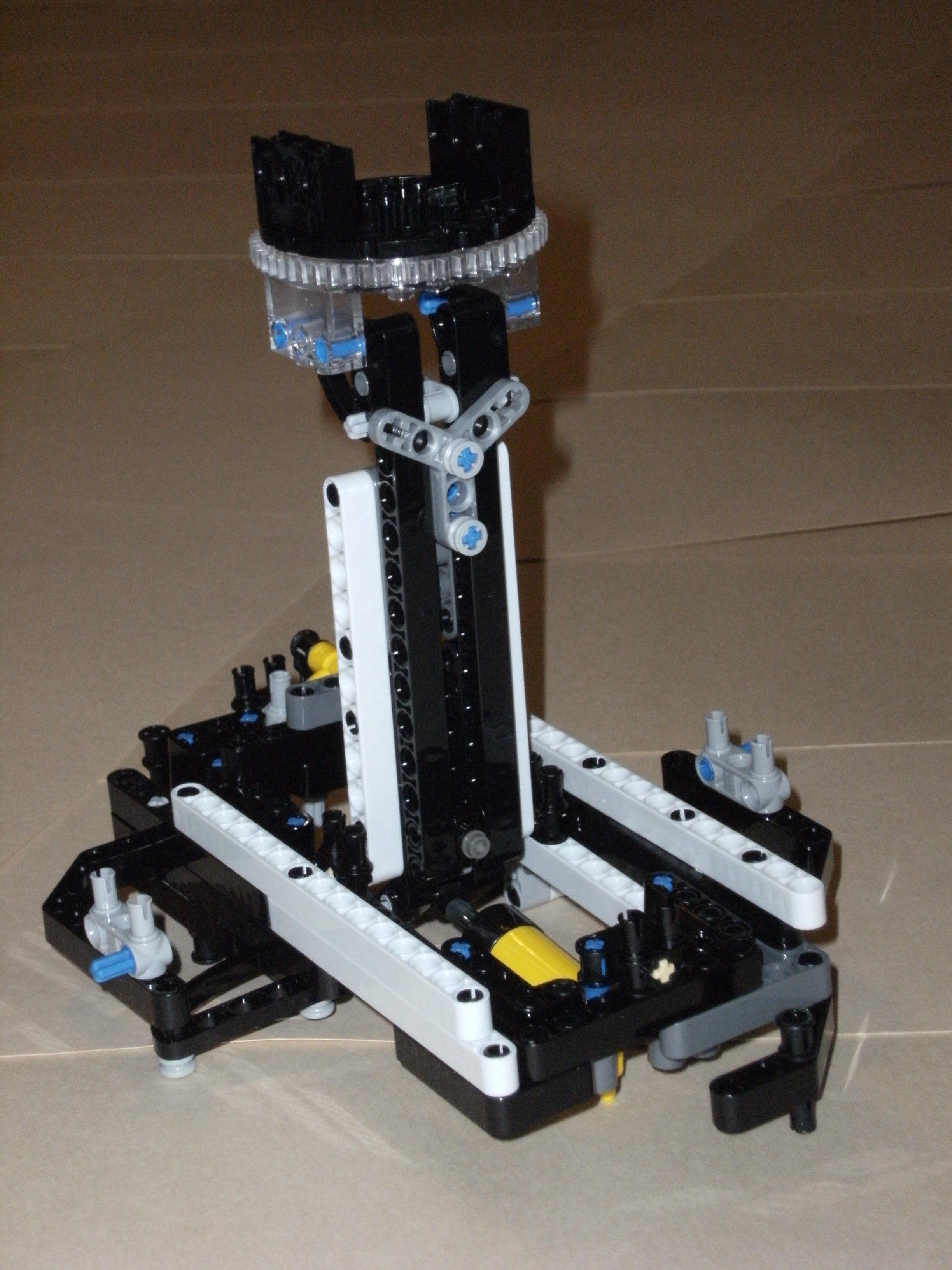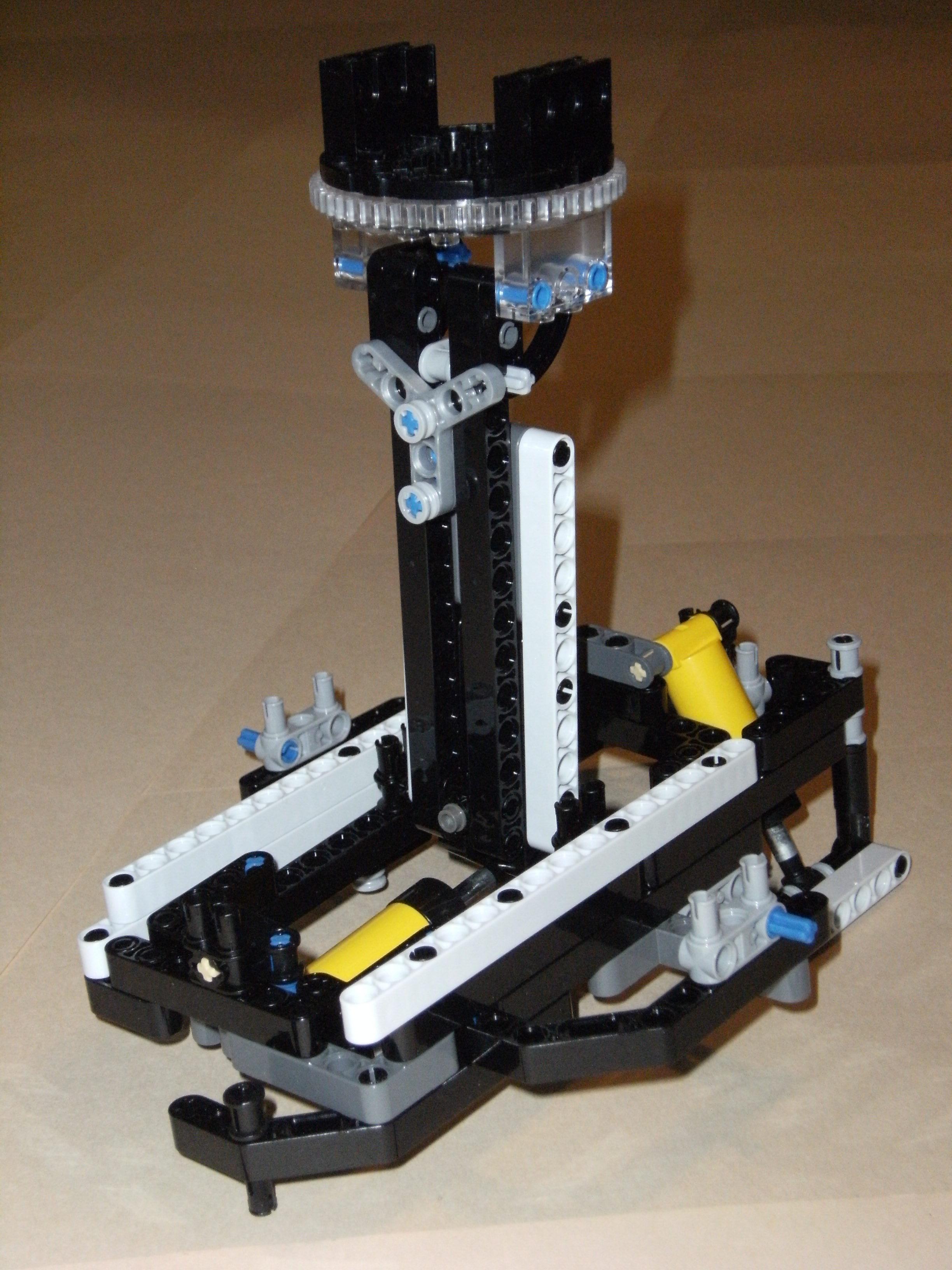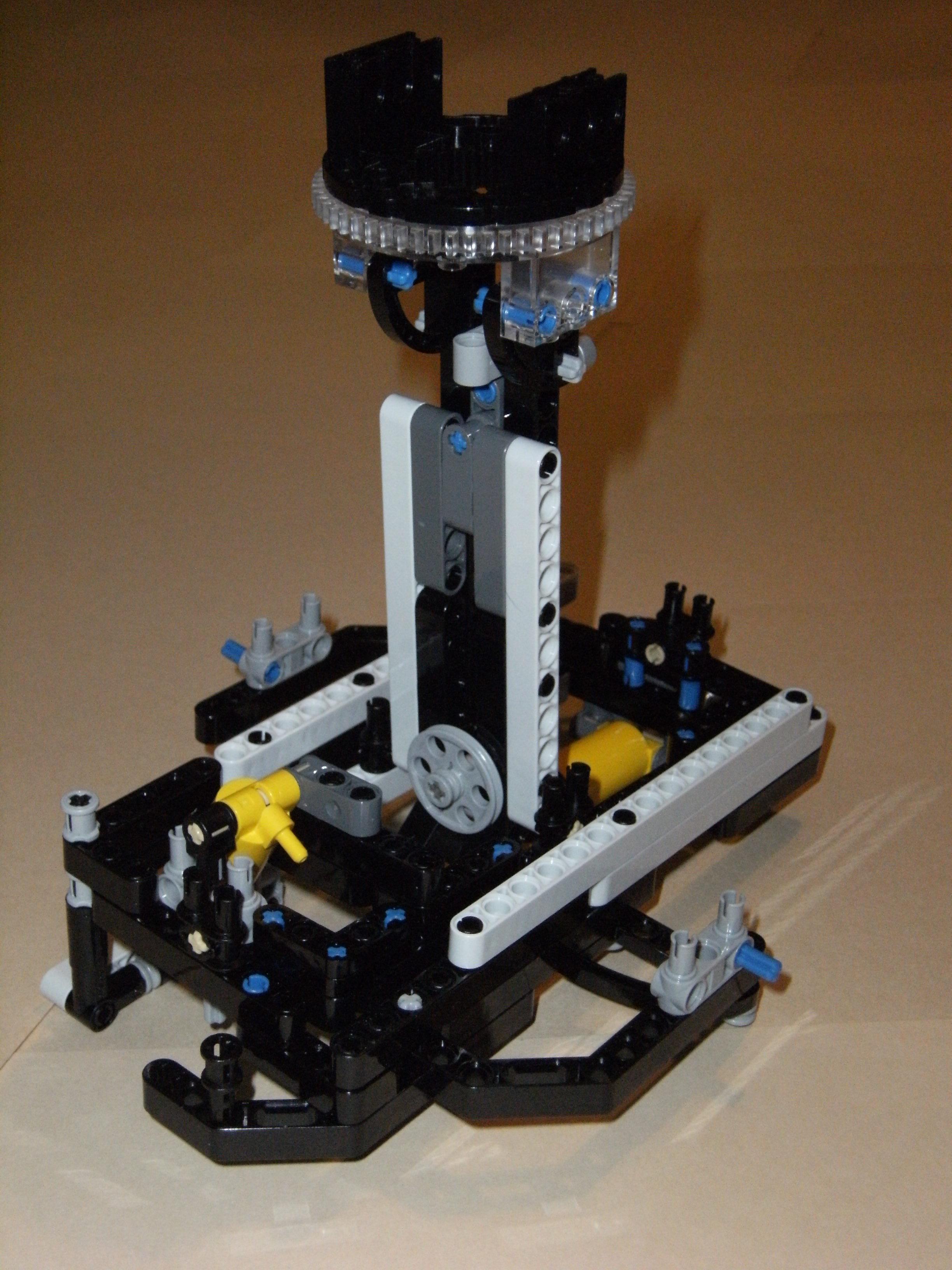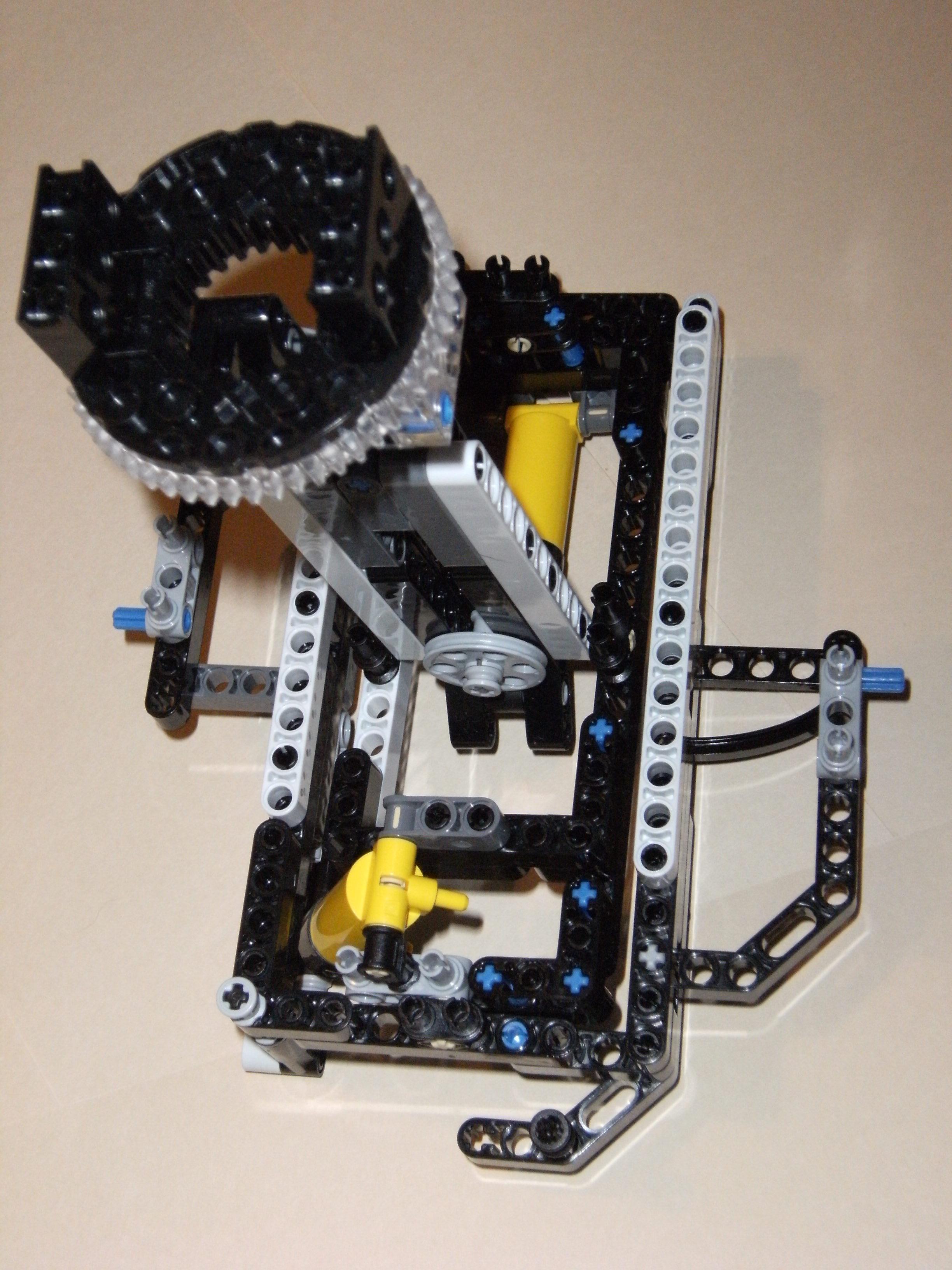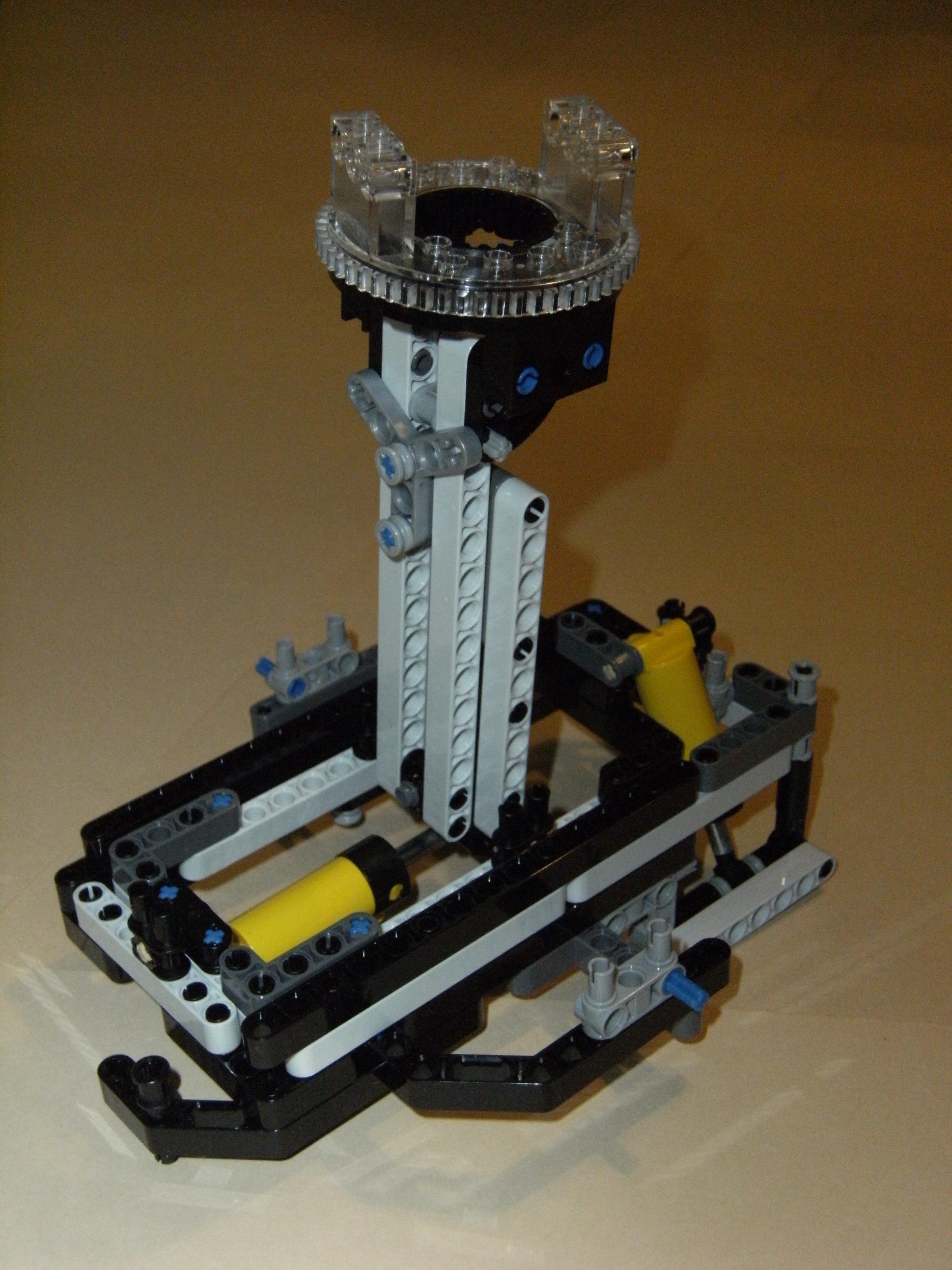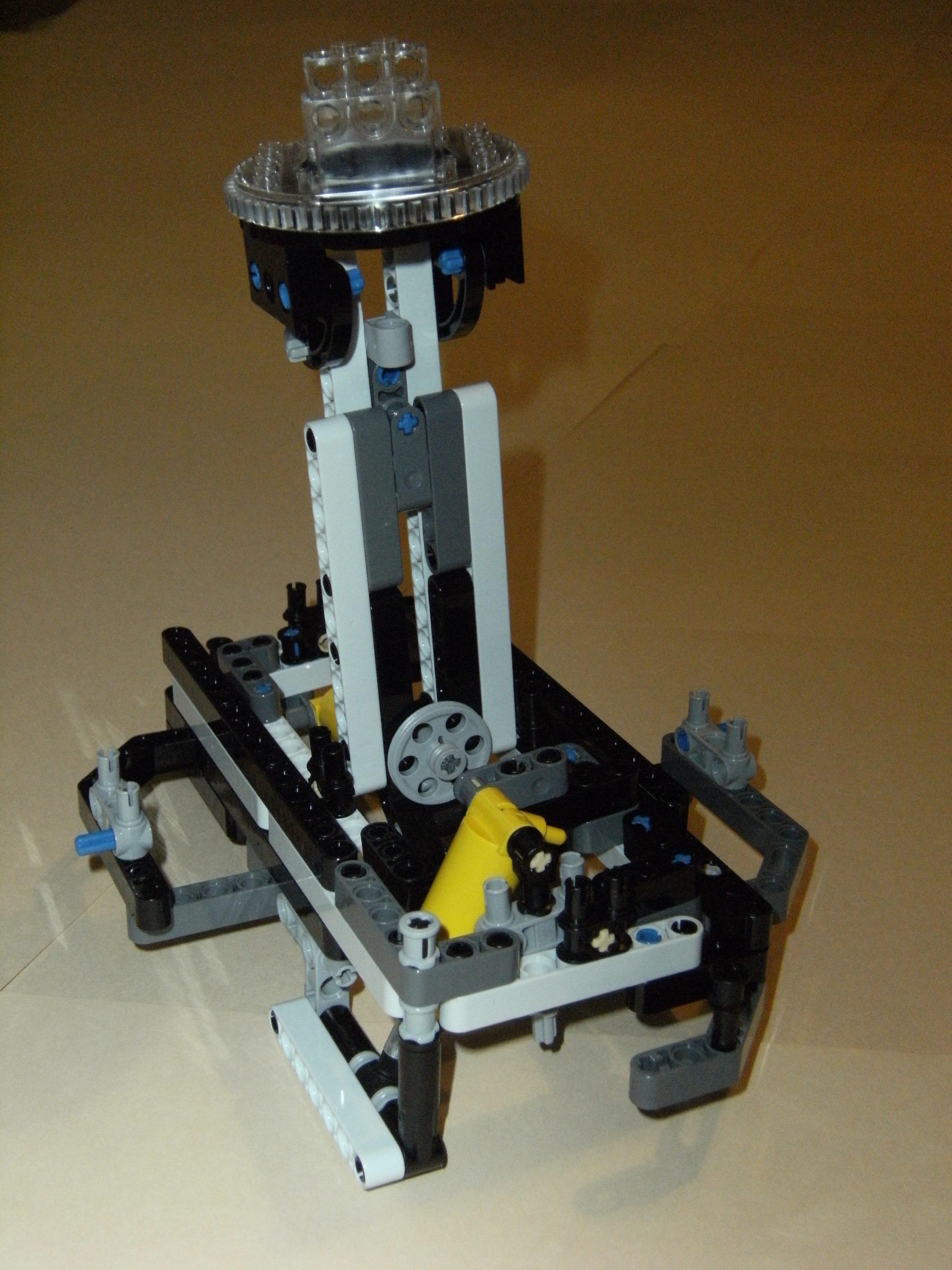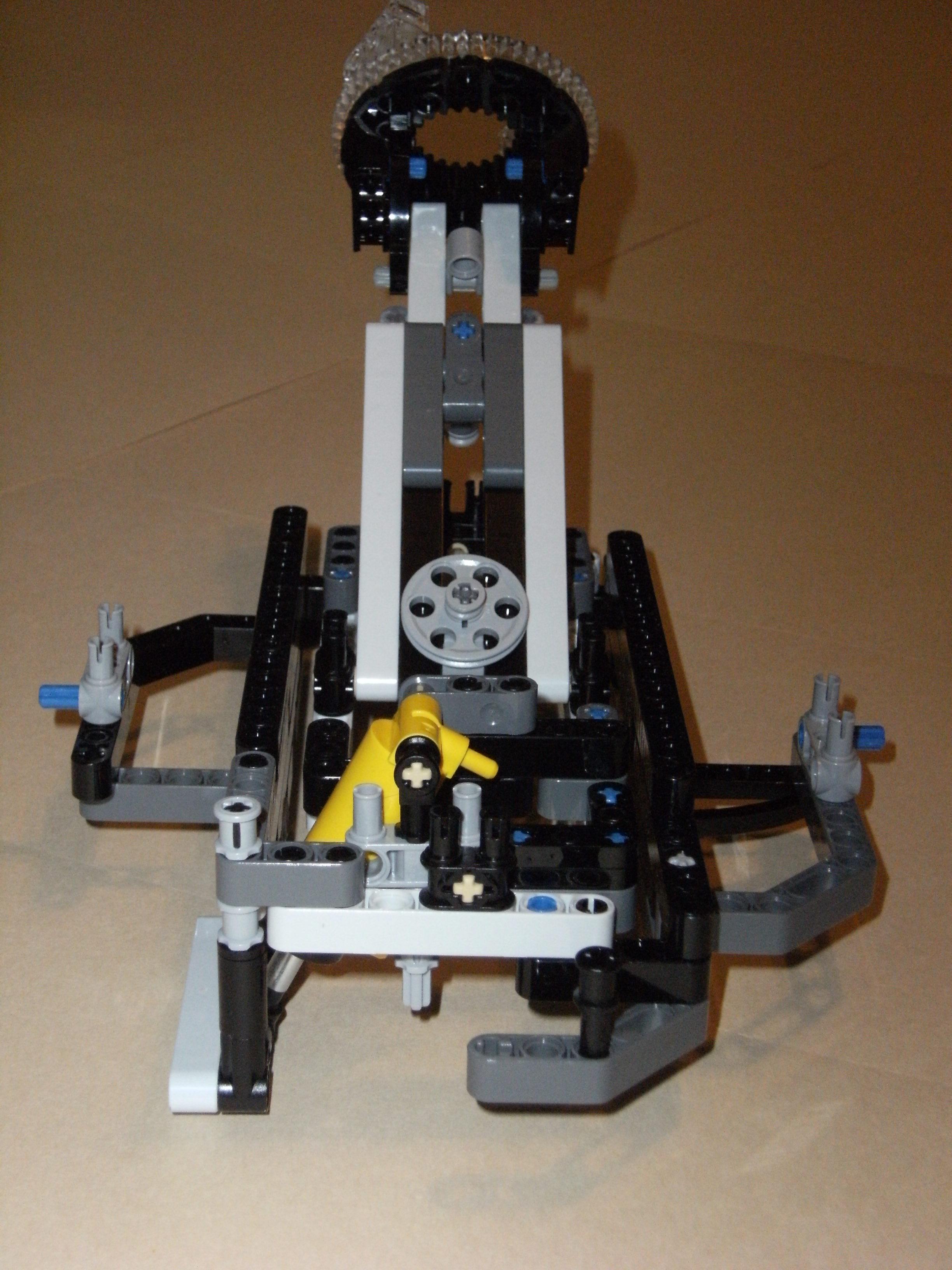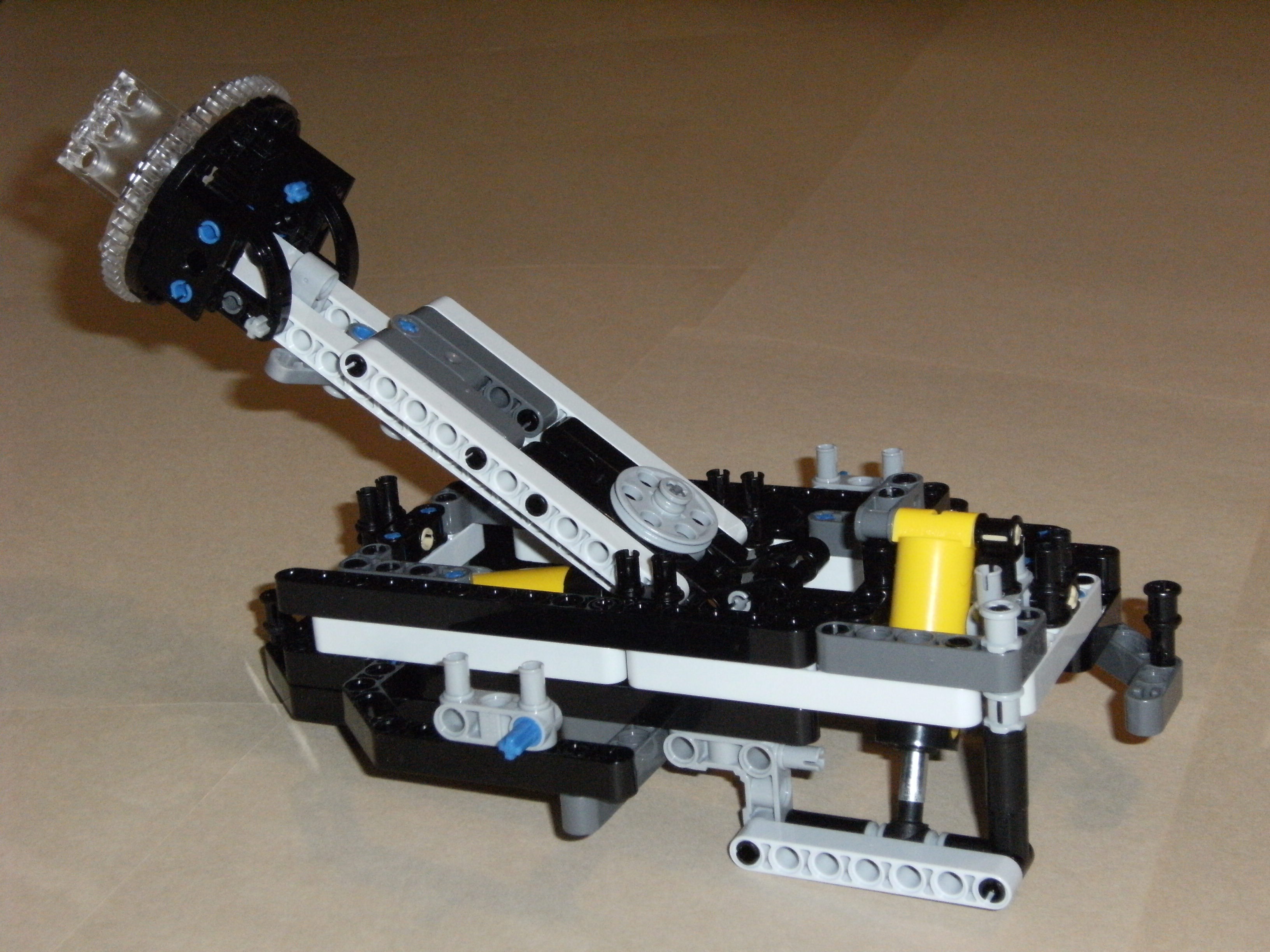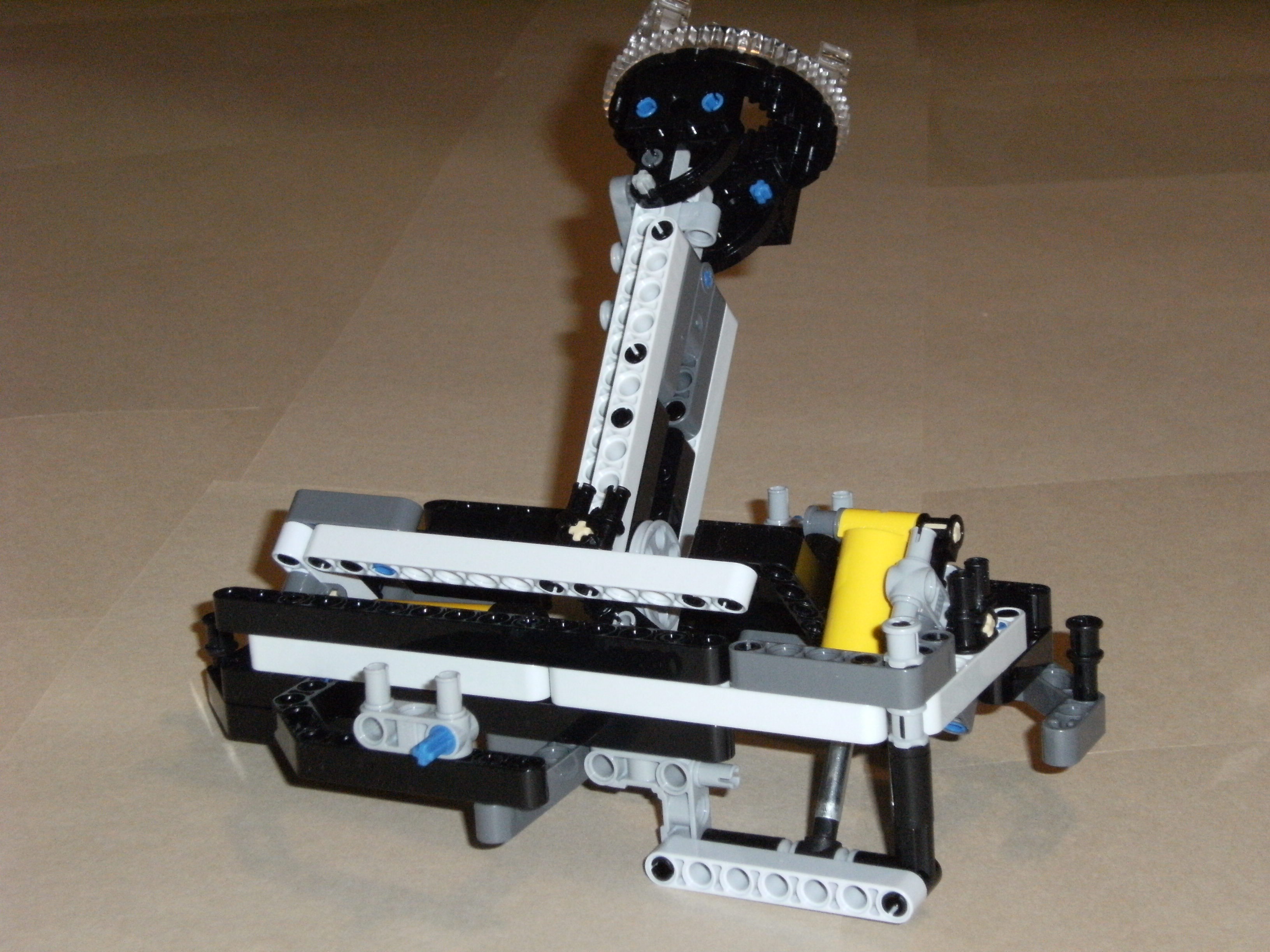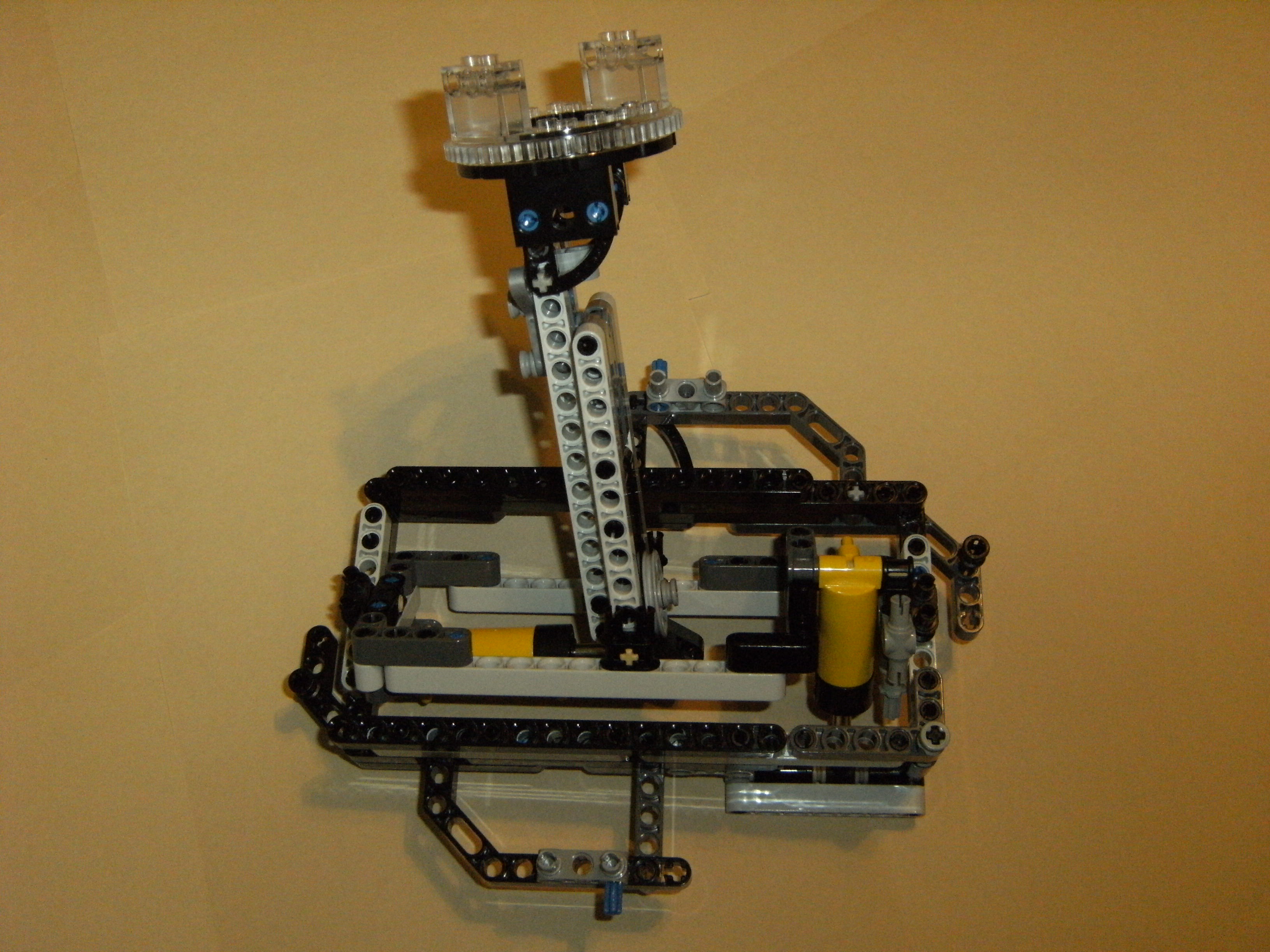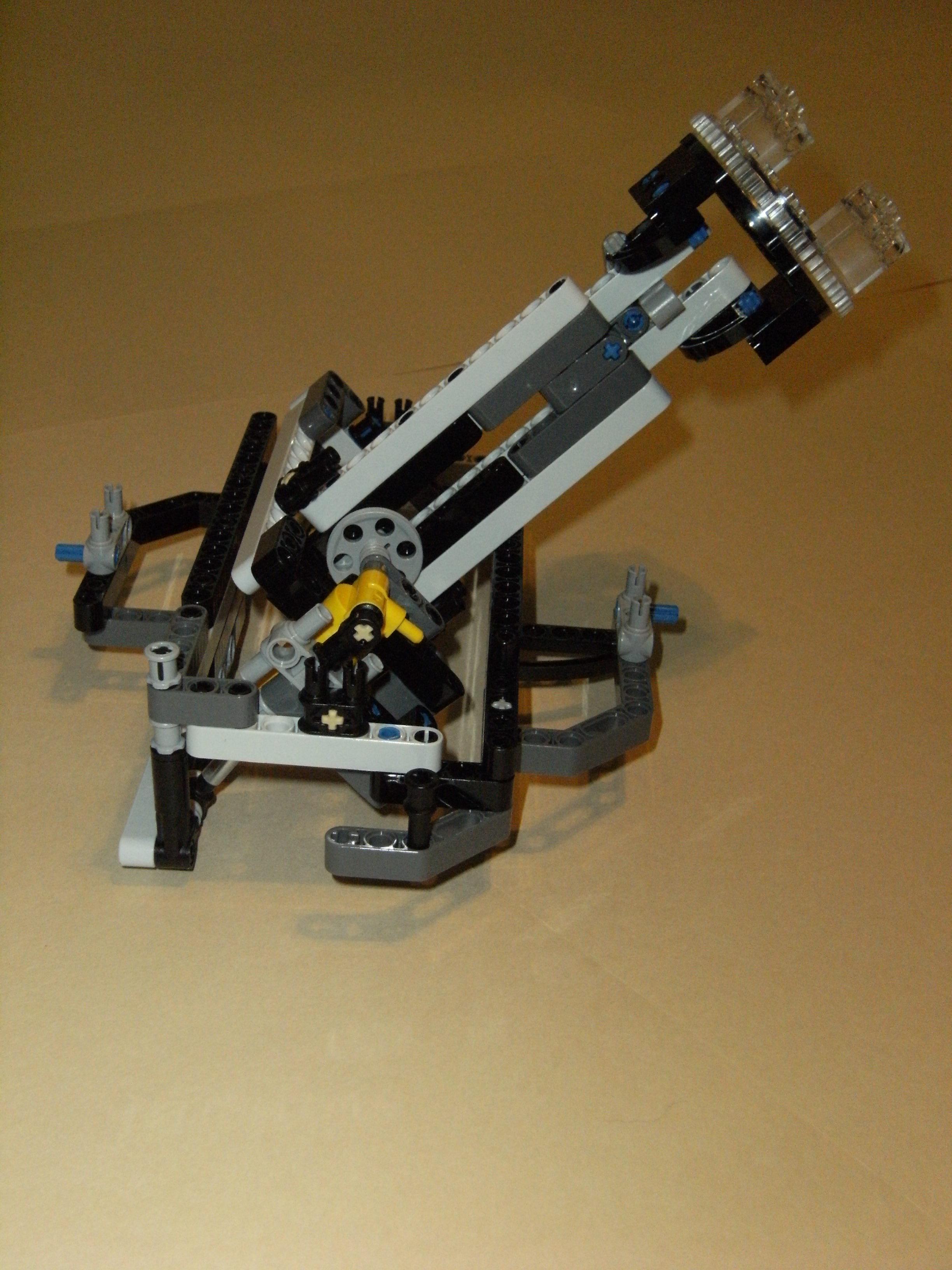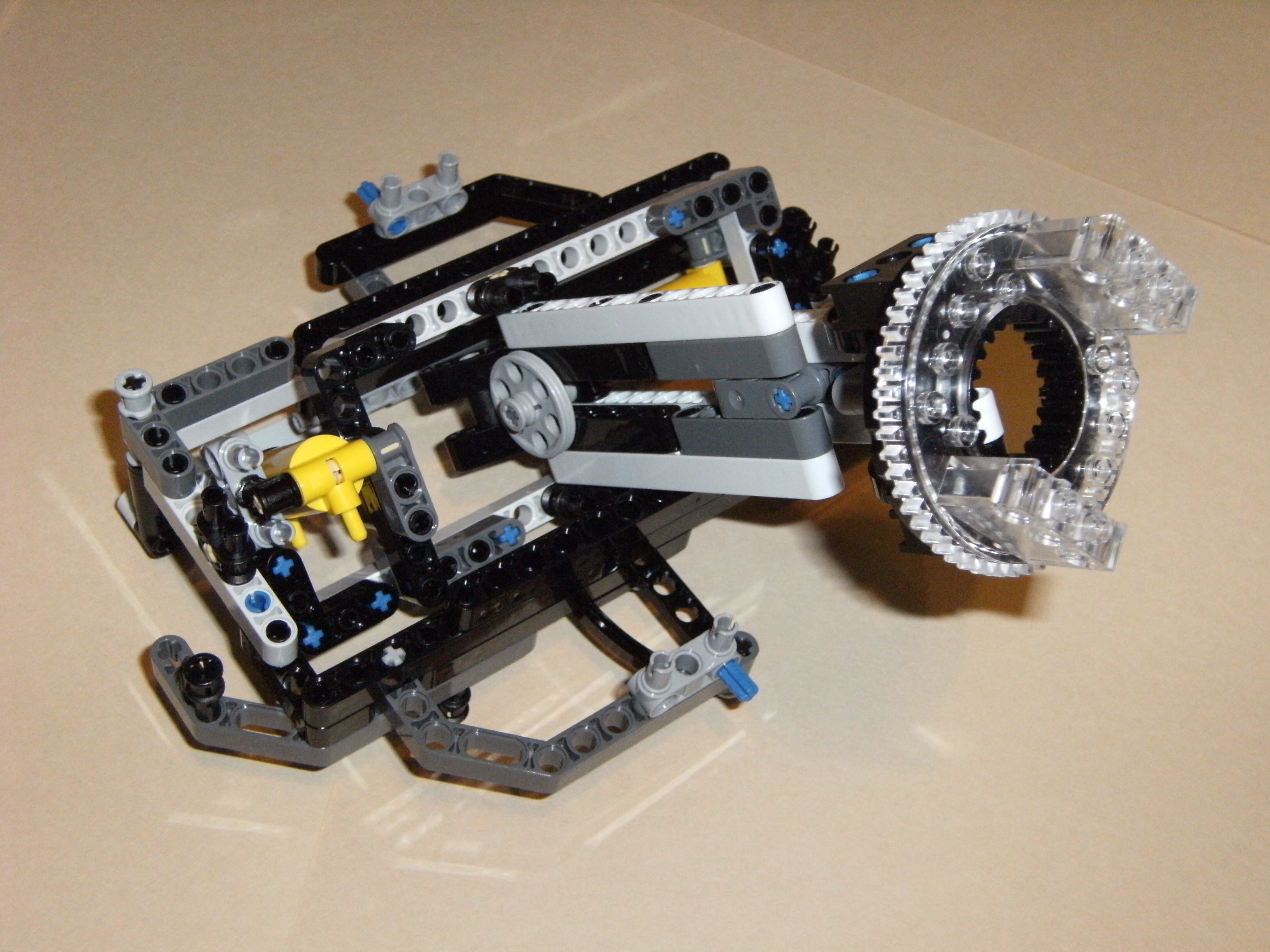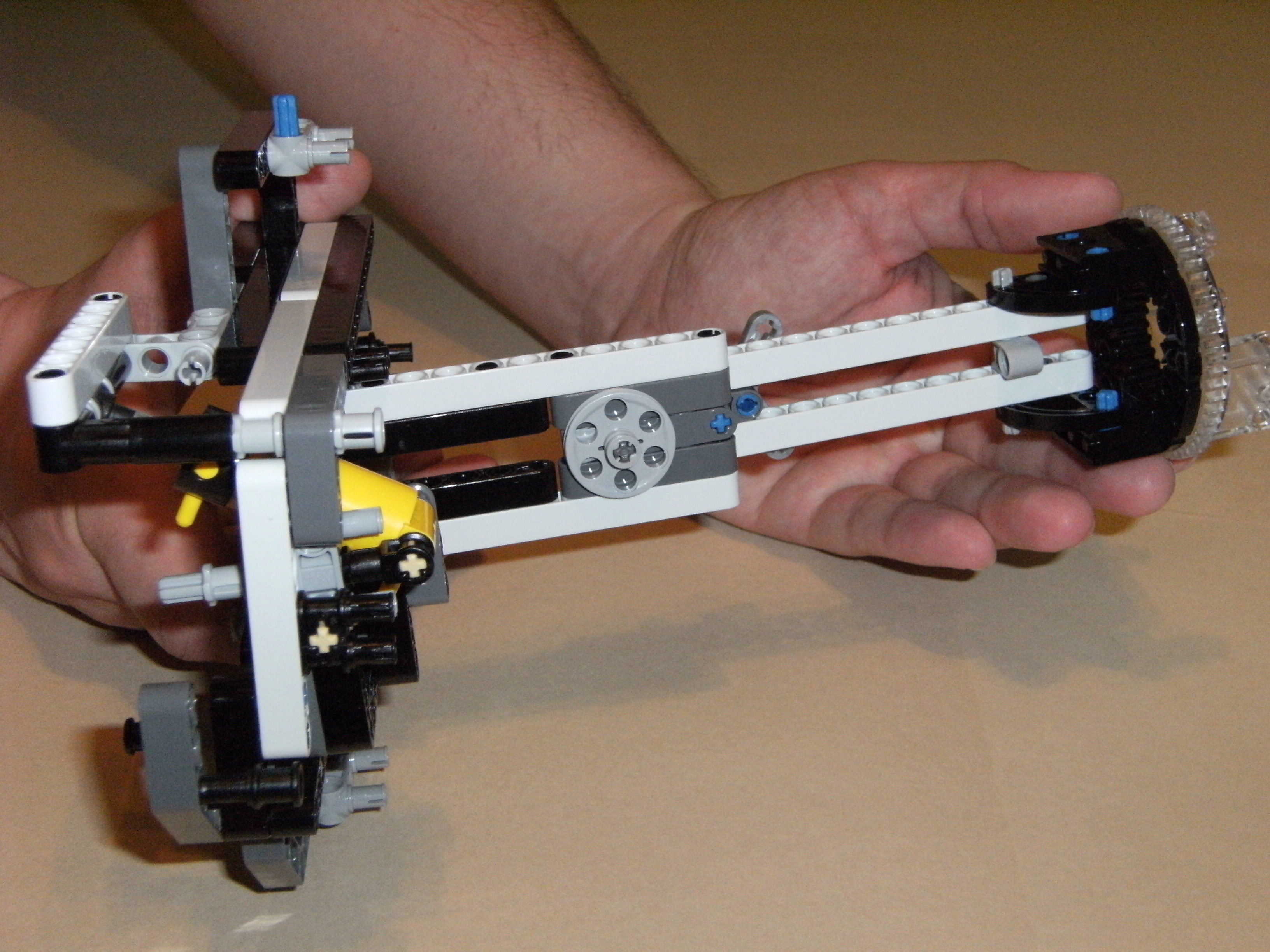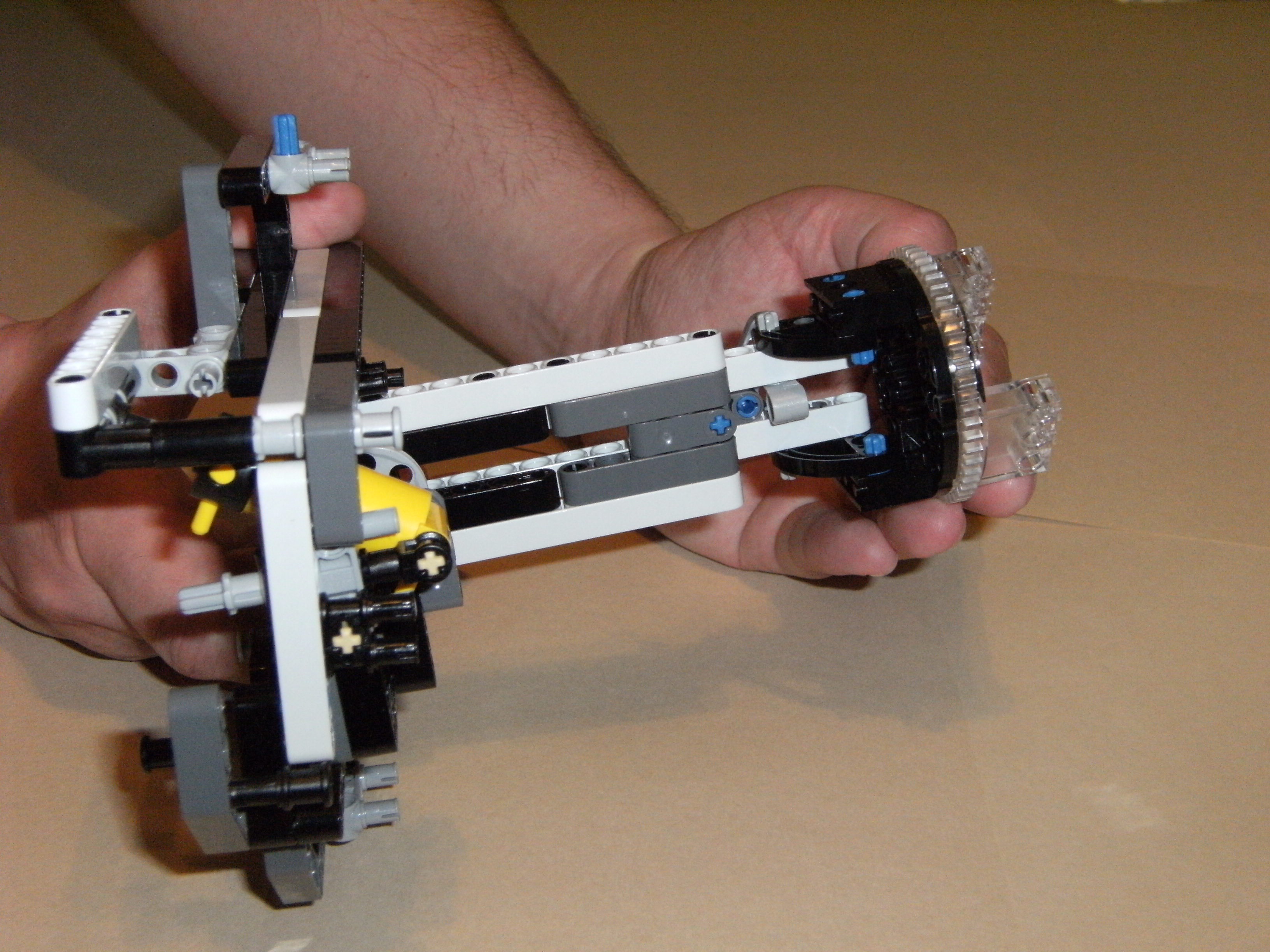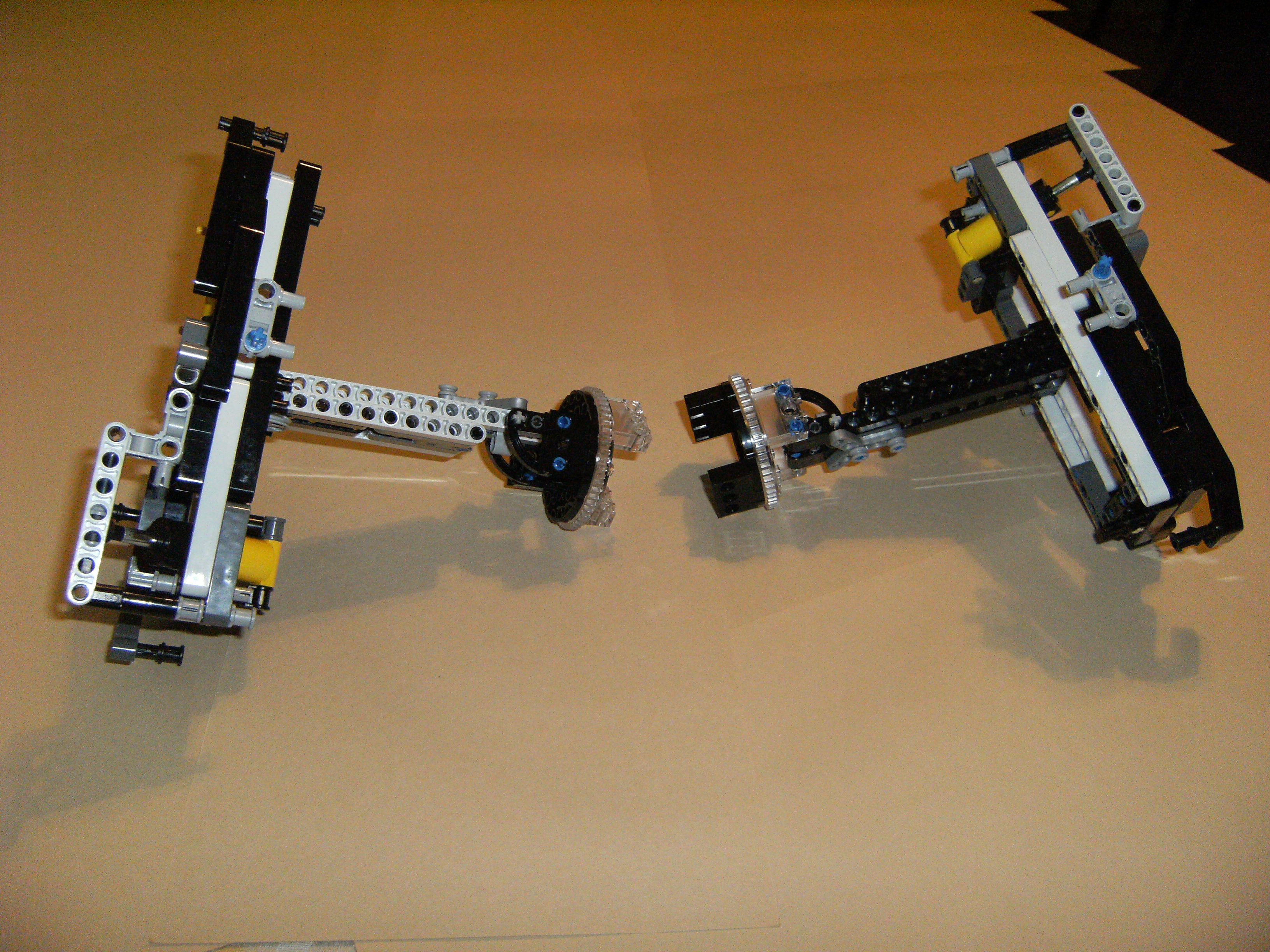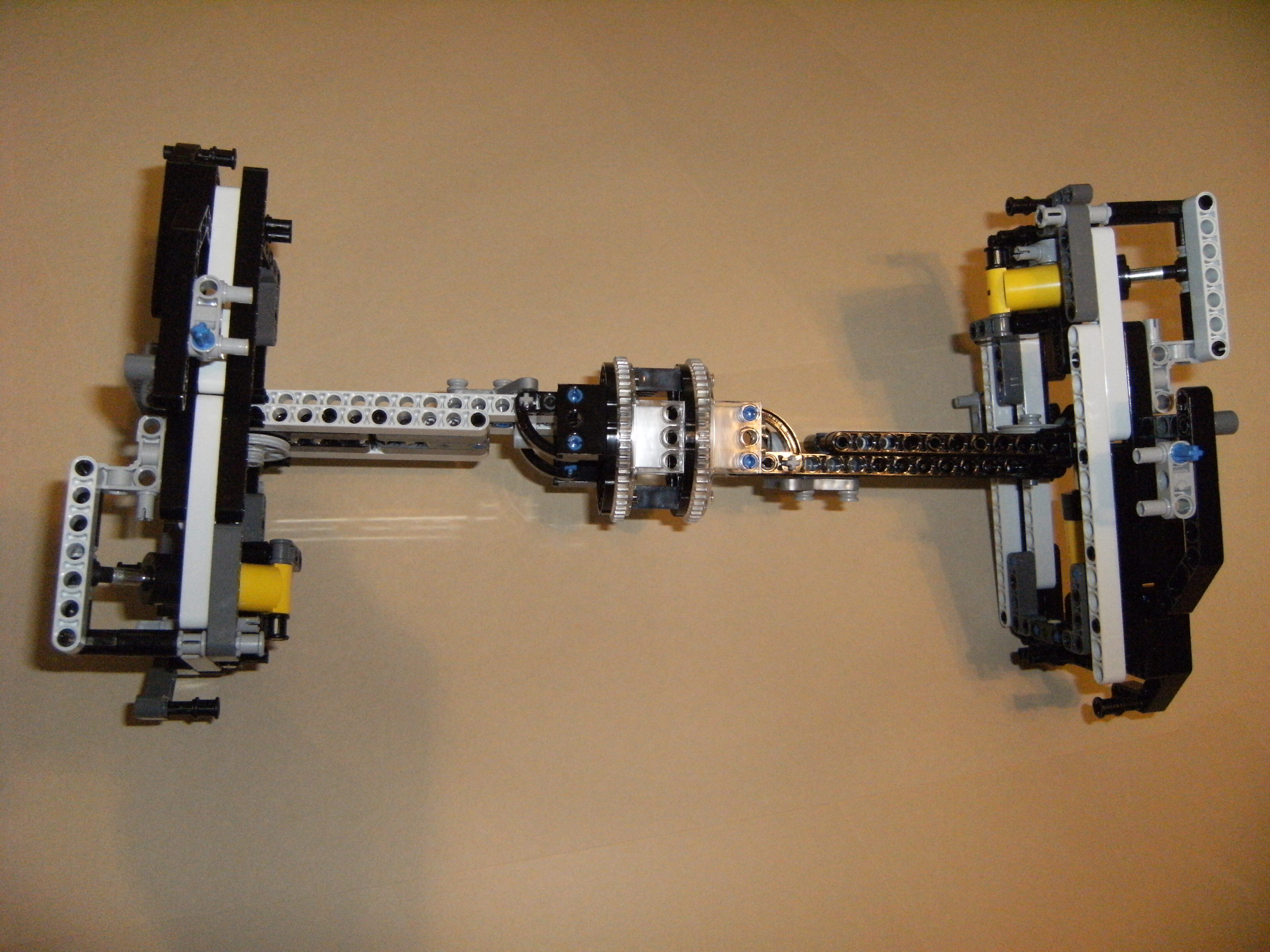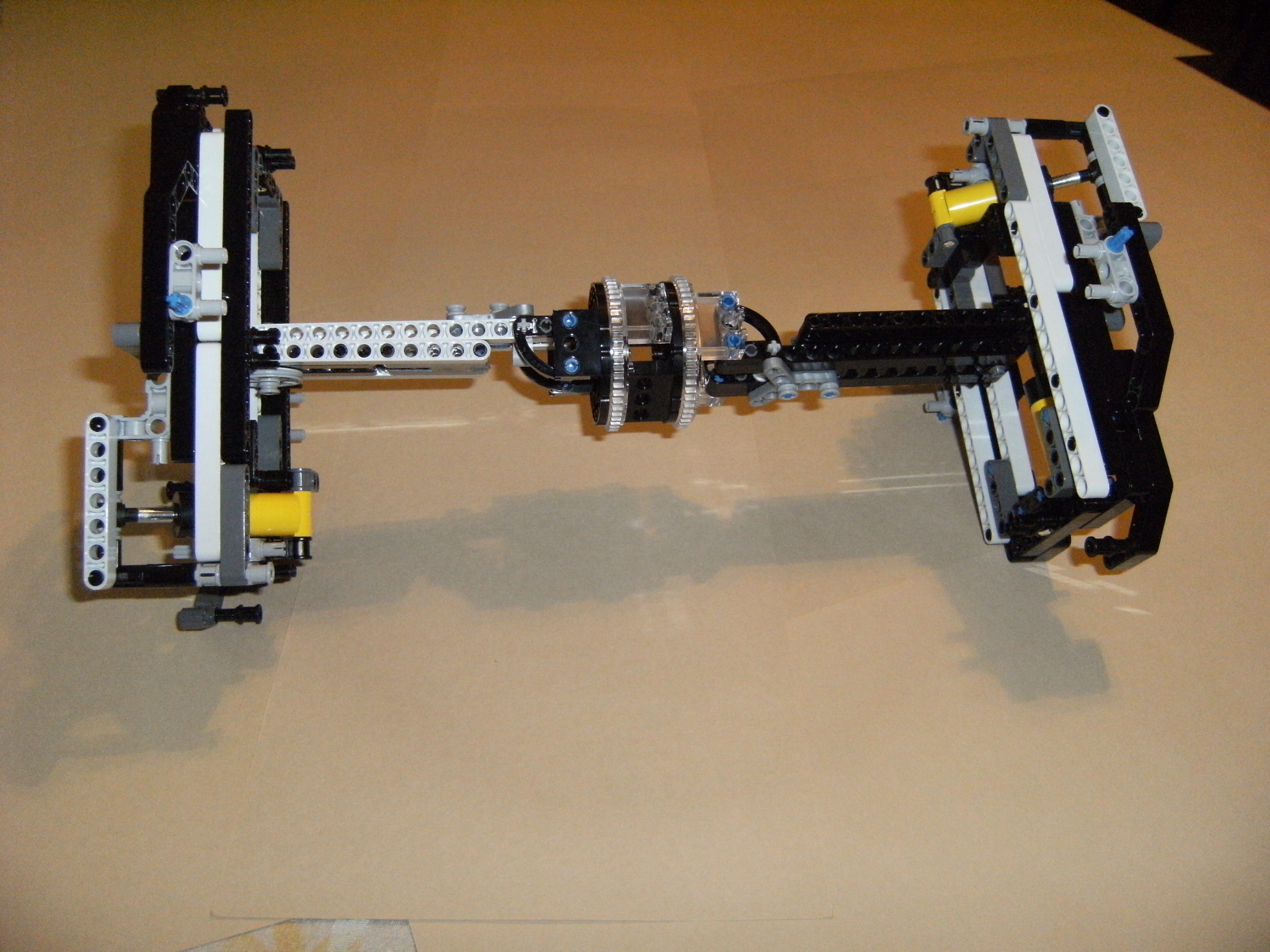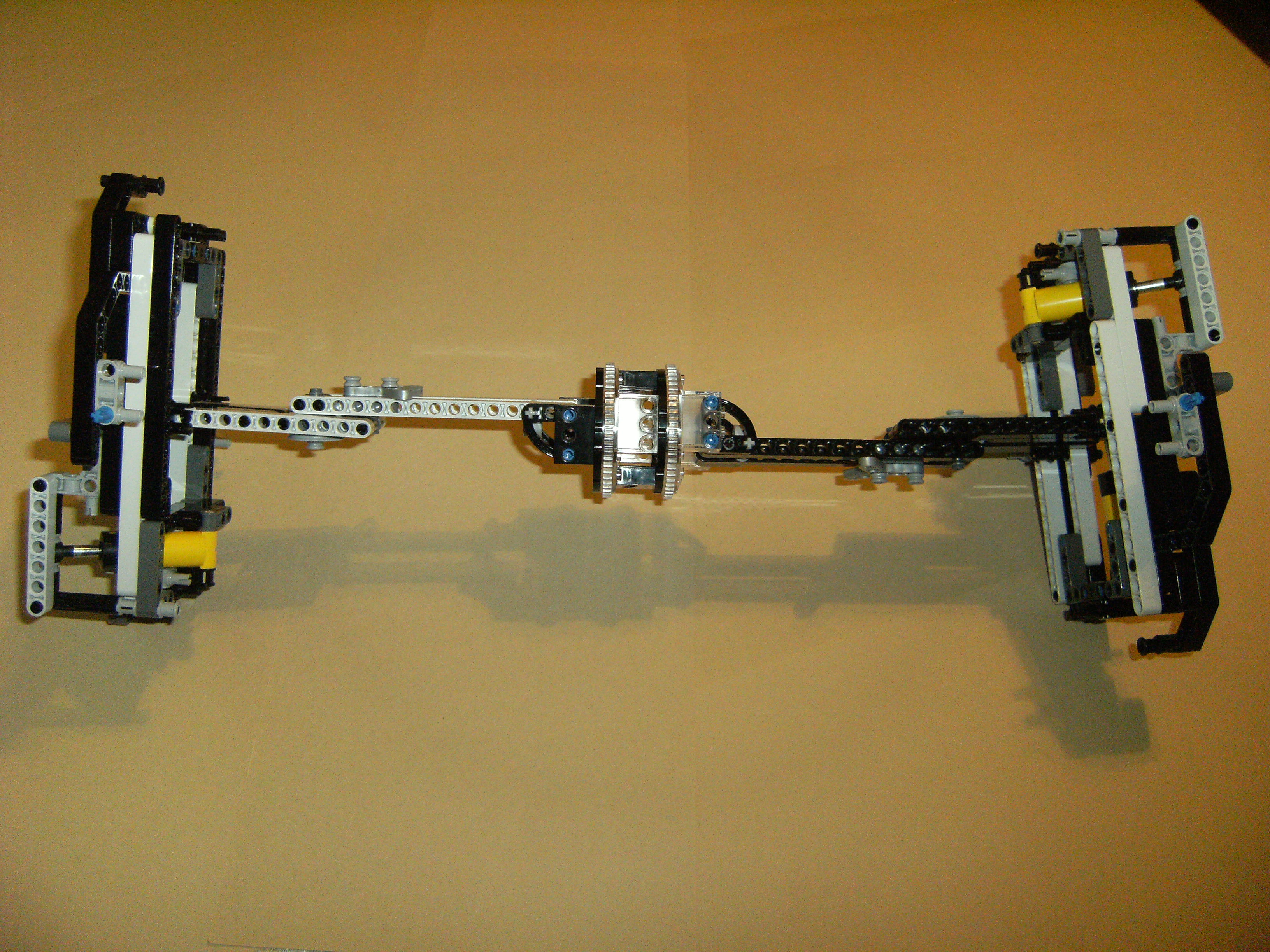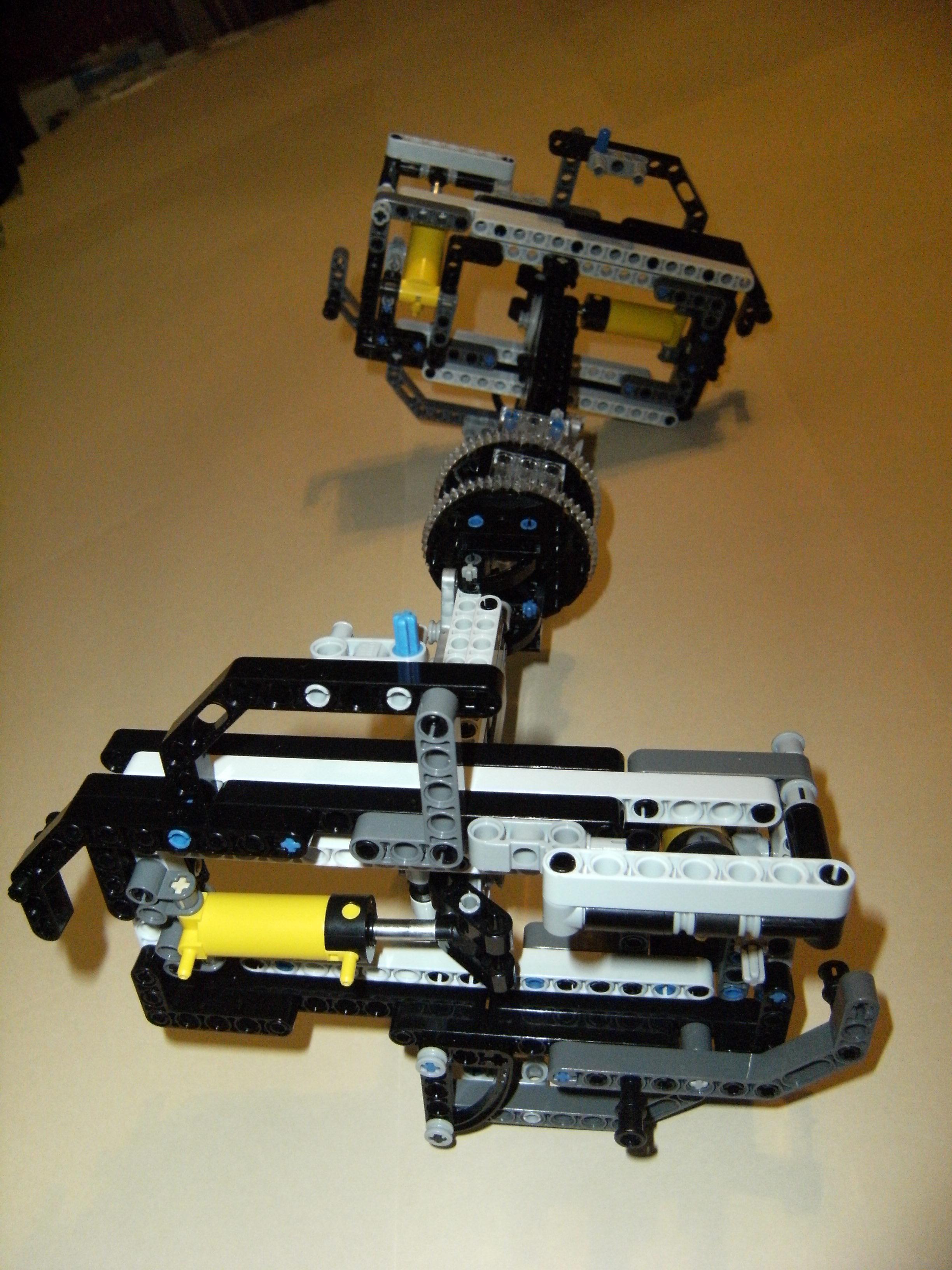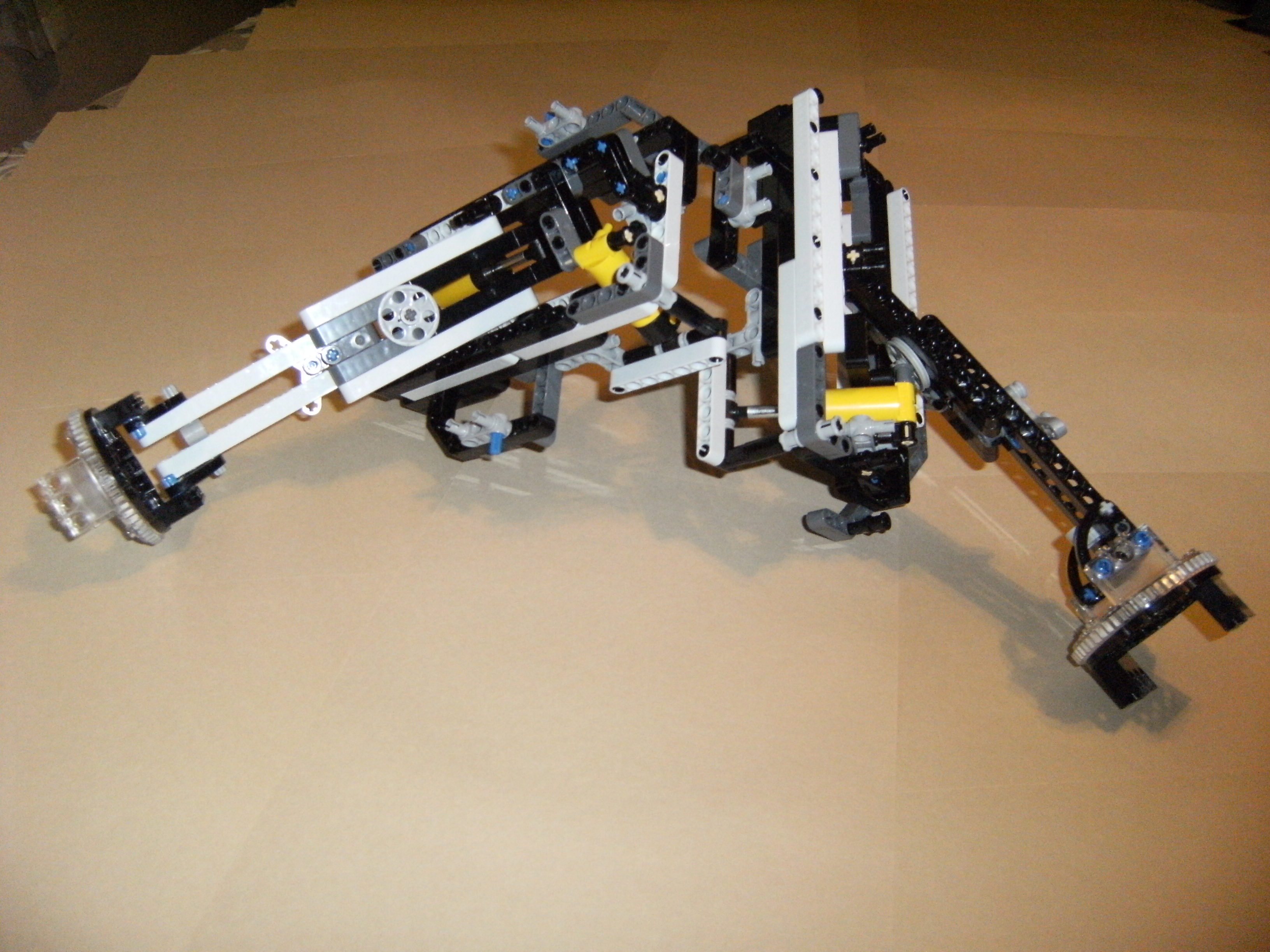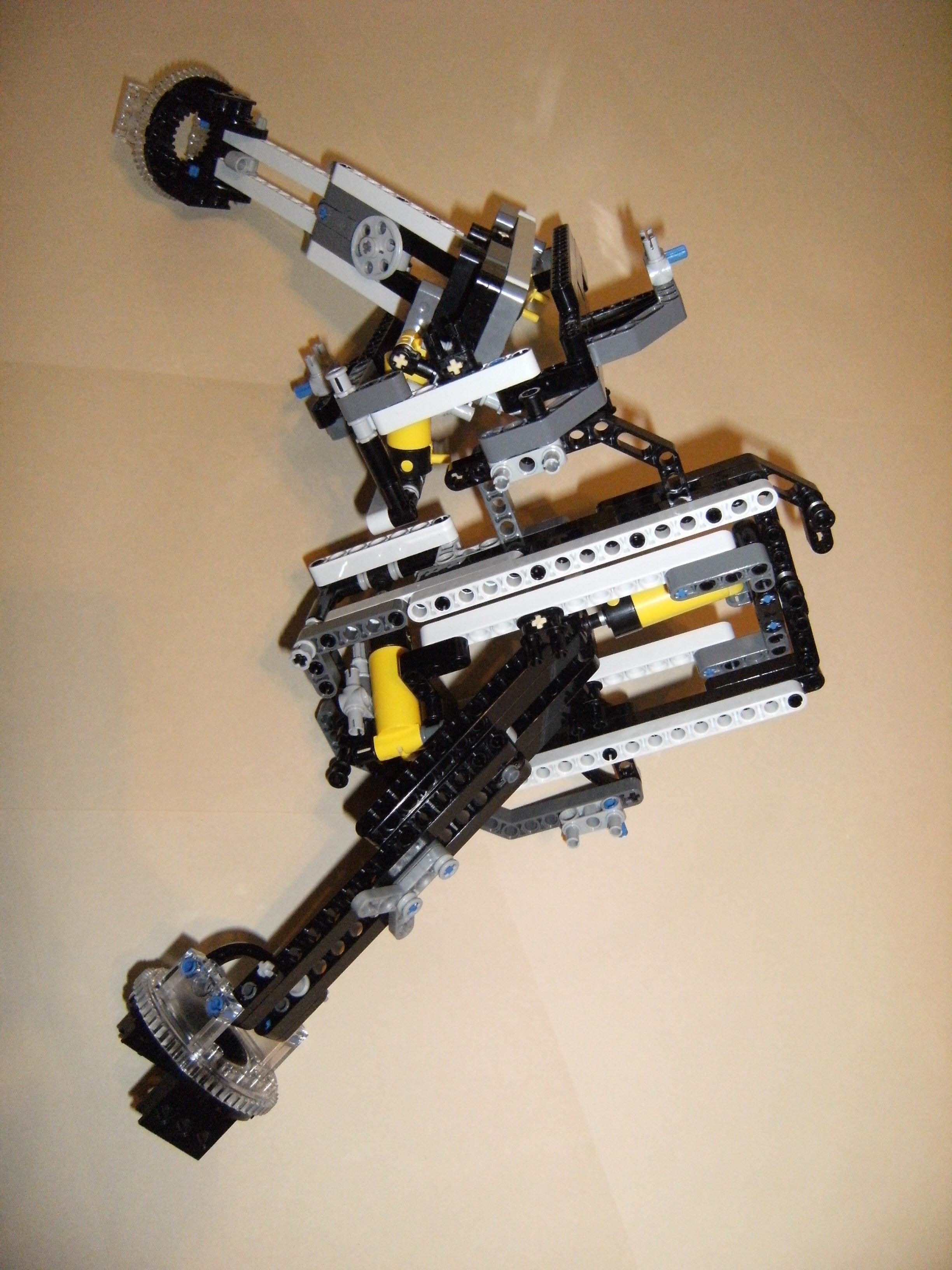PROTOTYPES MADE FROM LEGOS (Page 3 of 3)
These photos show prototype modules connected in triangular and rectangular loop patterns.
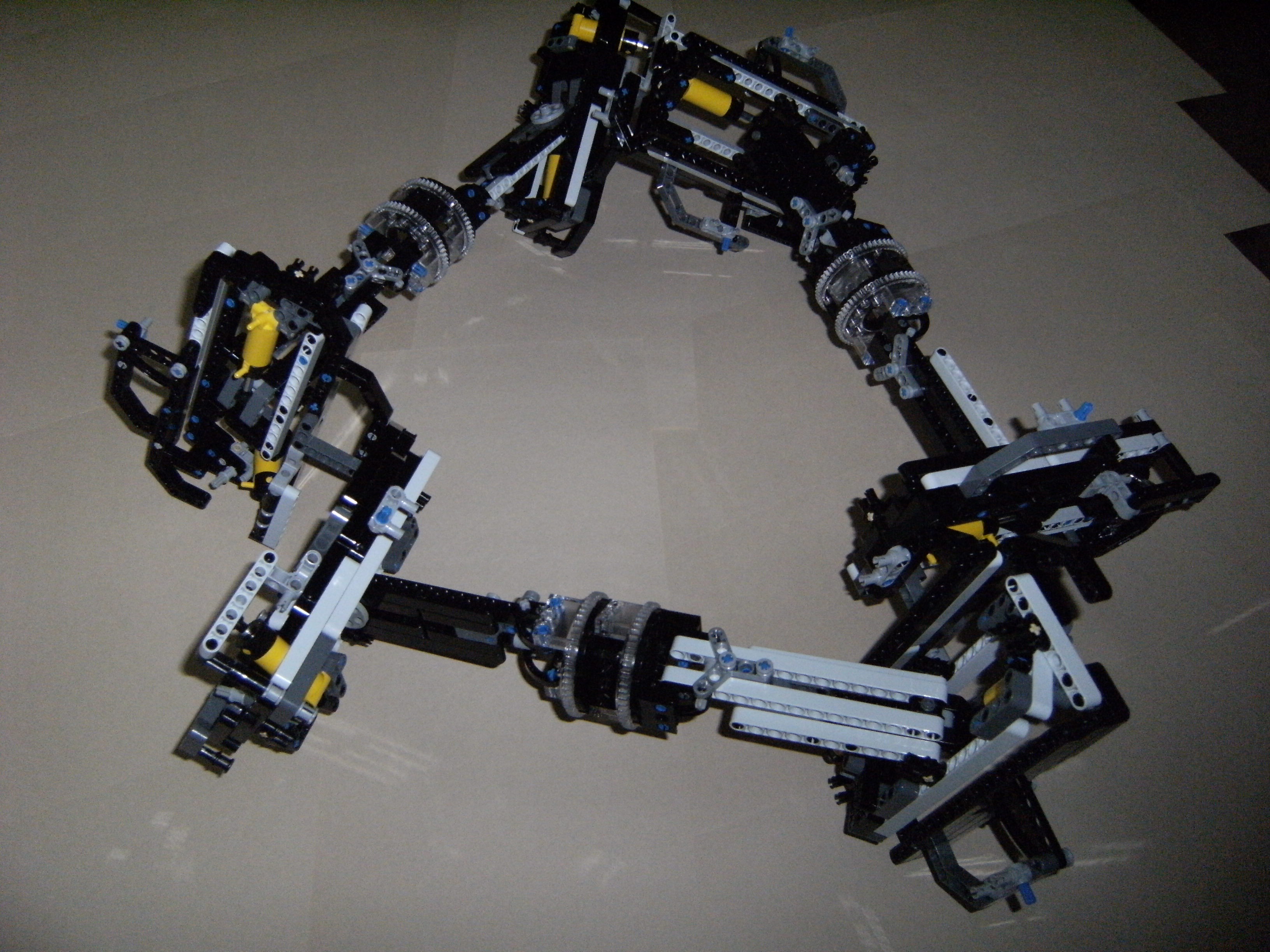 Set of six modules connected in a triangular loop pattern, with all legs fully retracted.
Set of six modules connected in a triangular loop pattern, with all legs fully retracted.
Figure 50. View 1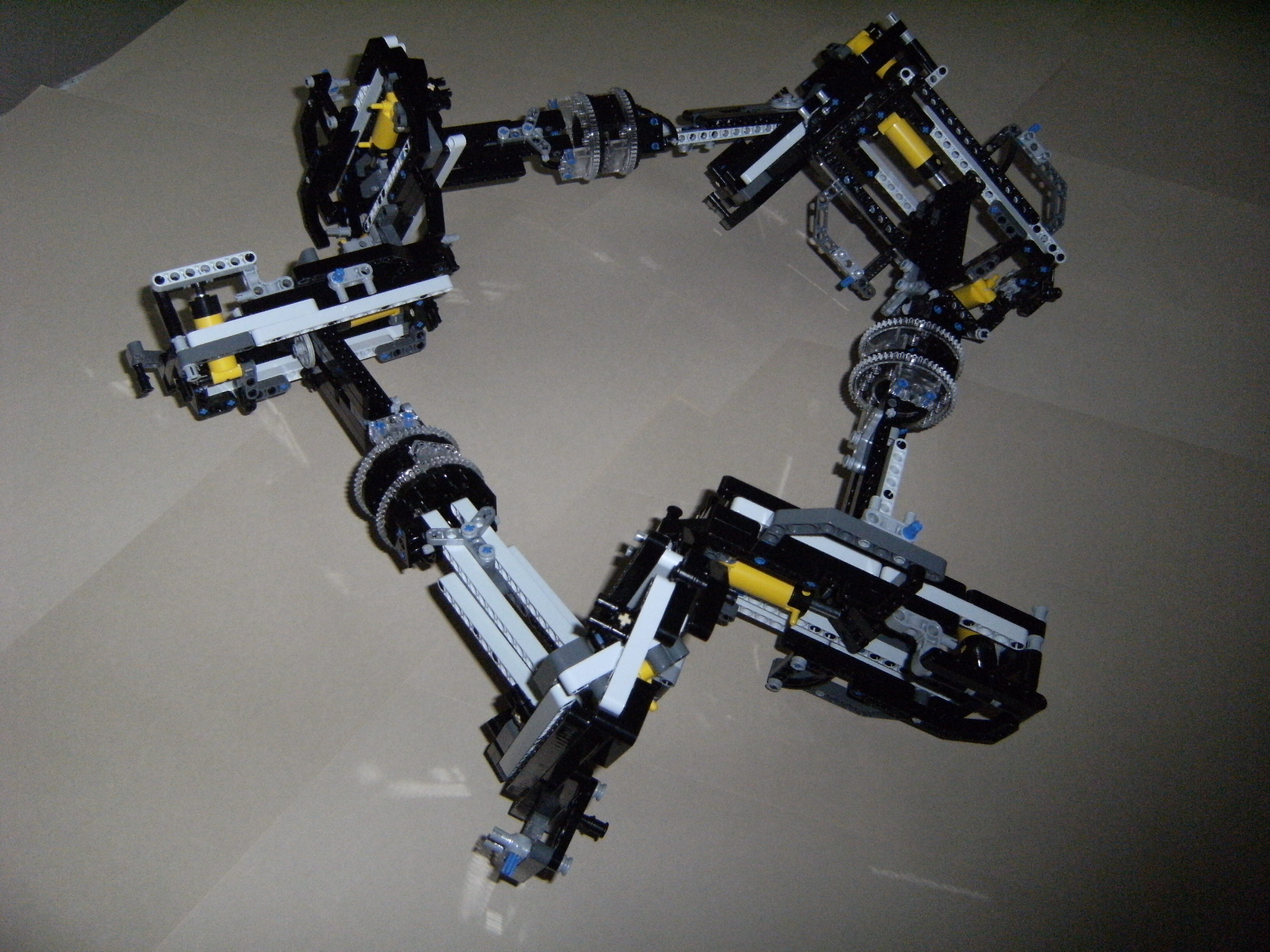 Set of six modules connected in a triangular loop pattern, with all legs fully retracted.
Set of six modules connected in a triangular loop pattern, with all legs fully retracted.
Figure 51. View 2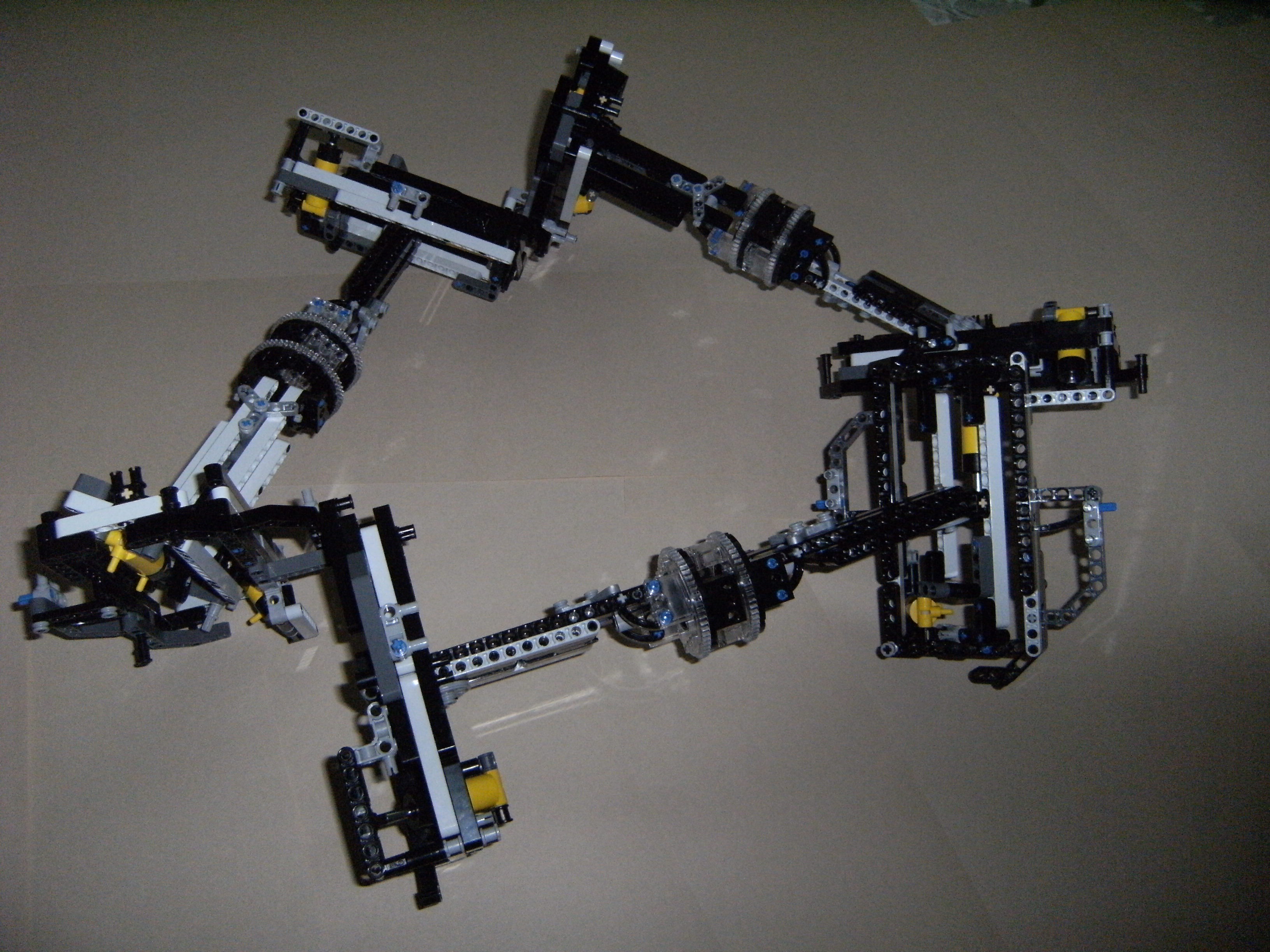 Set of six modules connected in a triangular loop pattern, with all legs fully retracted.
Set of six modules connected in a triangular loop pattern, with all legs fully retracted.
Figure 52. View 3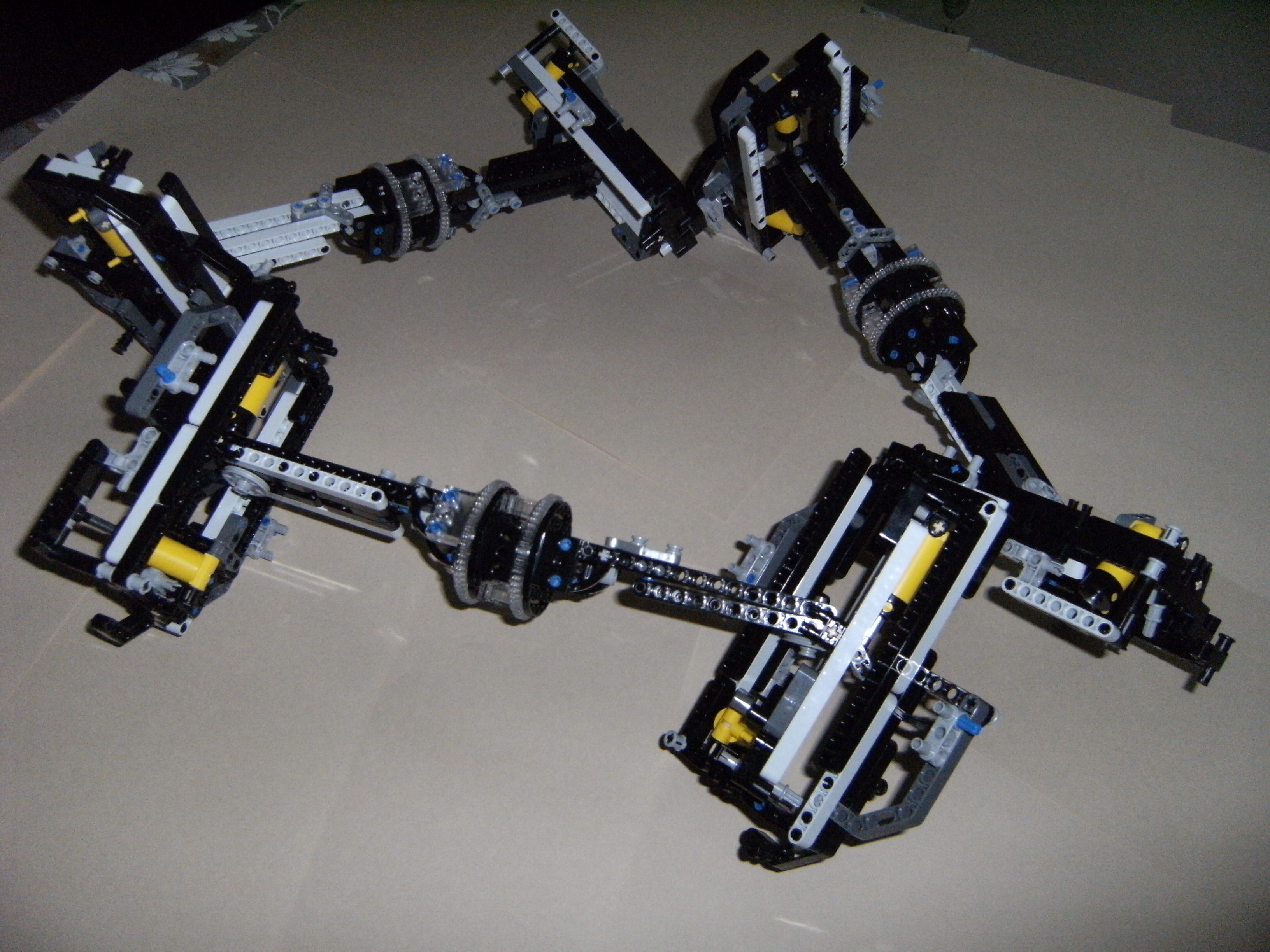 Set of six modules connected in a triangular loop pattern, with all legs fully retracted.
Set of six modules connected in a triangular loop pattern, with all legs fully retracted.
Figure 53. View 4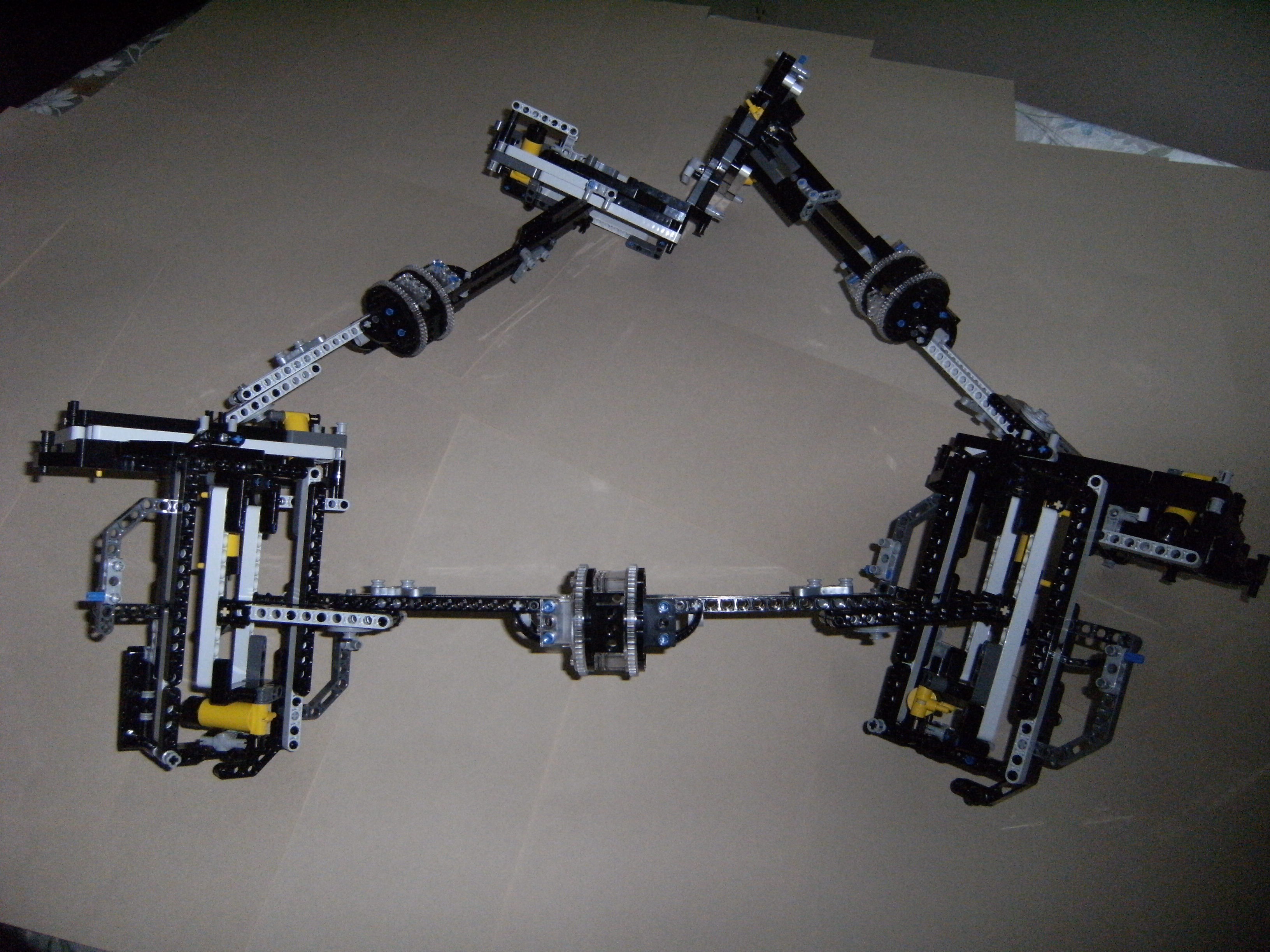 Set of six modules connected in a triangular loop pattern, with all legs fully extended.
Set of six modules connected in a triangular loop pattern, with all legs fully extended.
Figure 54. View 1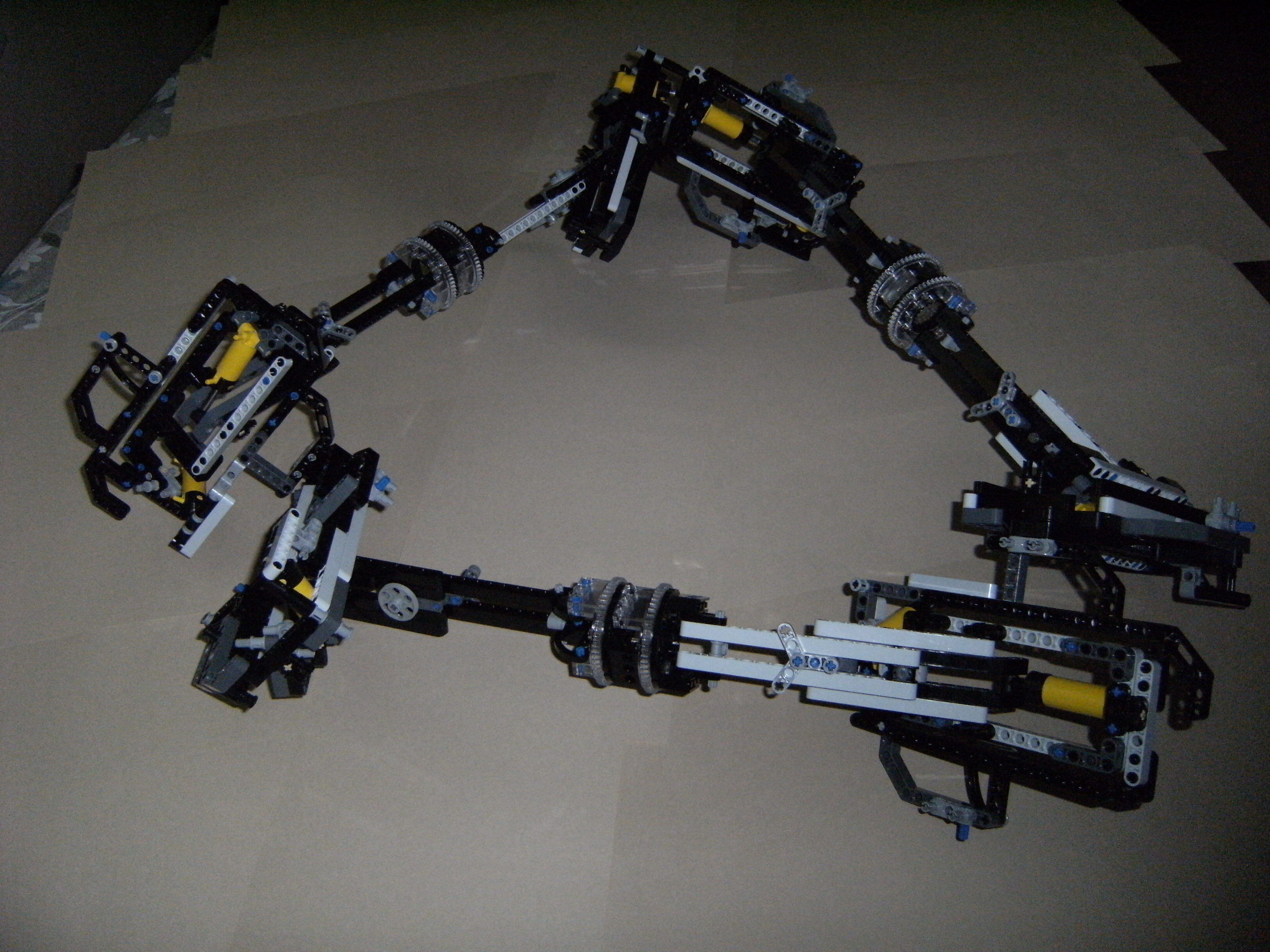 Set of six modules connected in a triangular loop pattern, with all legs fully extended.
Set of six modules connected in a triangular loop pattern, with all legs fully extended.
Figure 55. View 2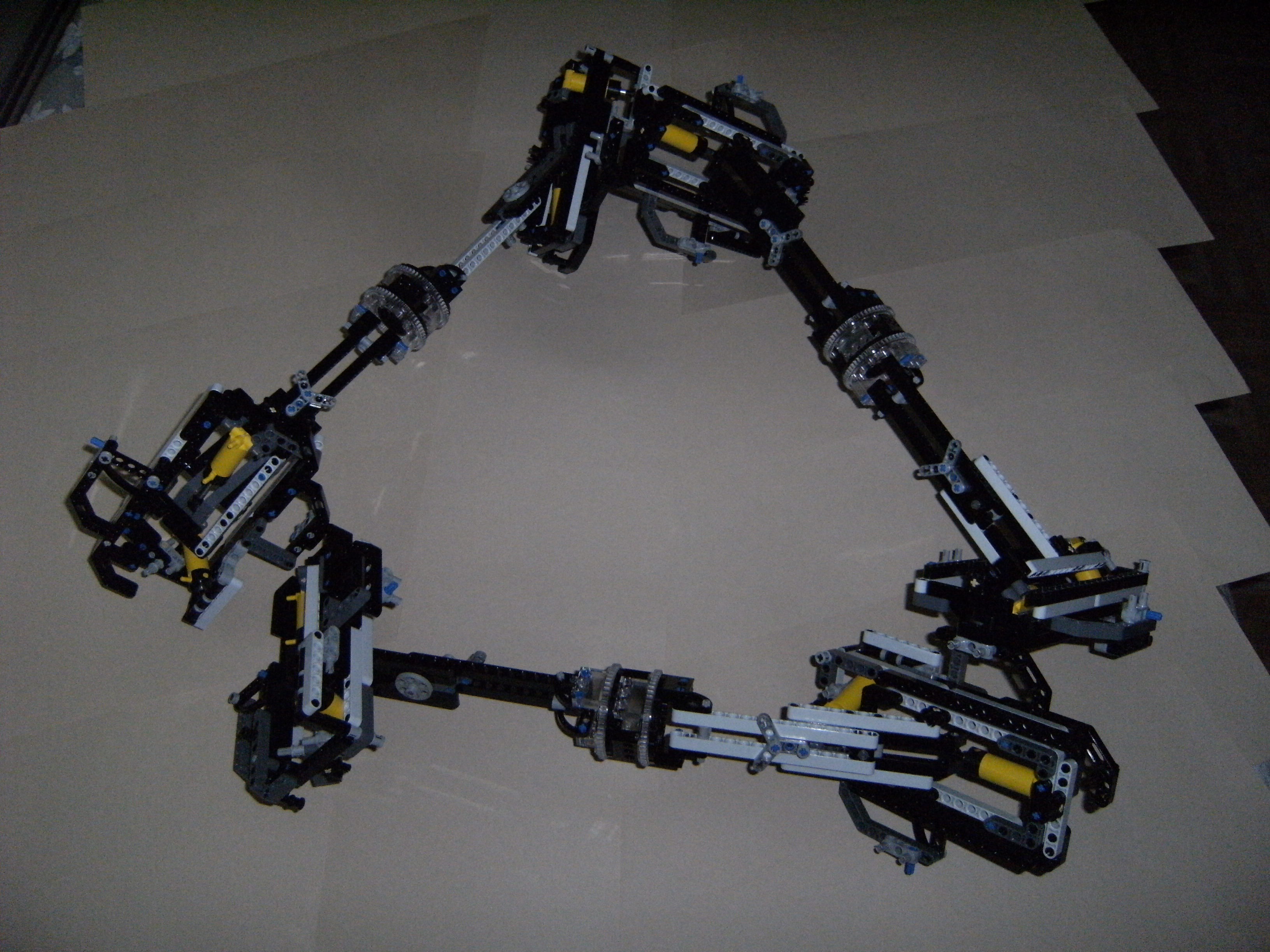 Set of six modules connected in a triangular loop pattern, with all legs fully extended.
Set of six modules connected in a triangular loop pattern, with all legs fully extended.
Figure 56. View 3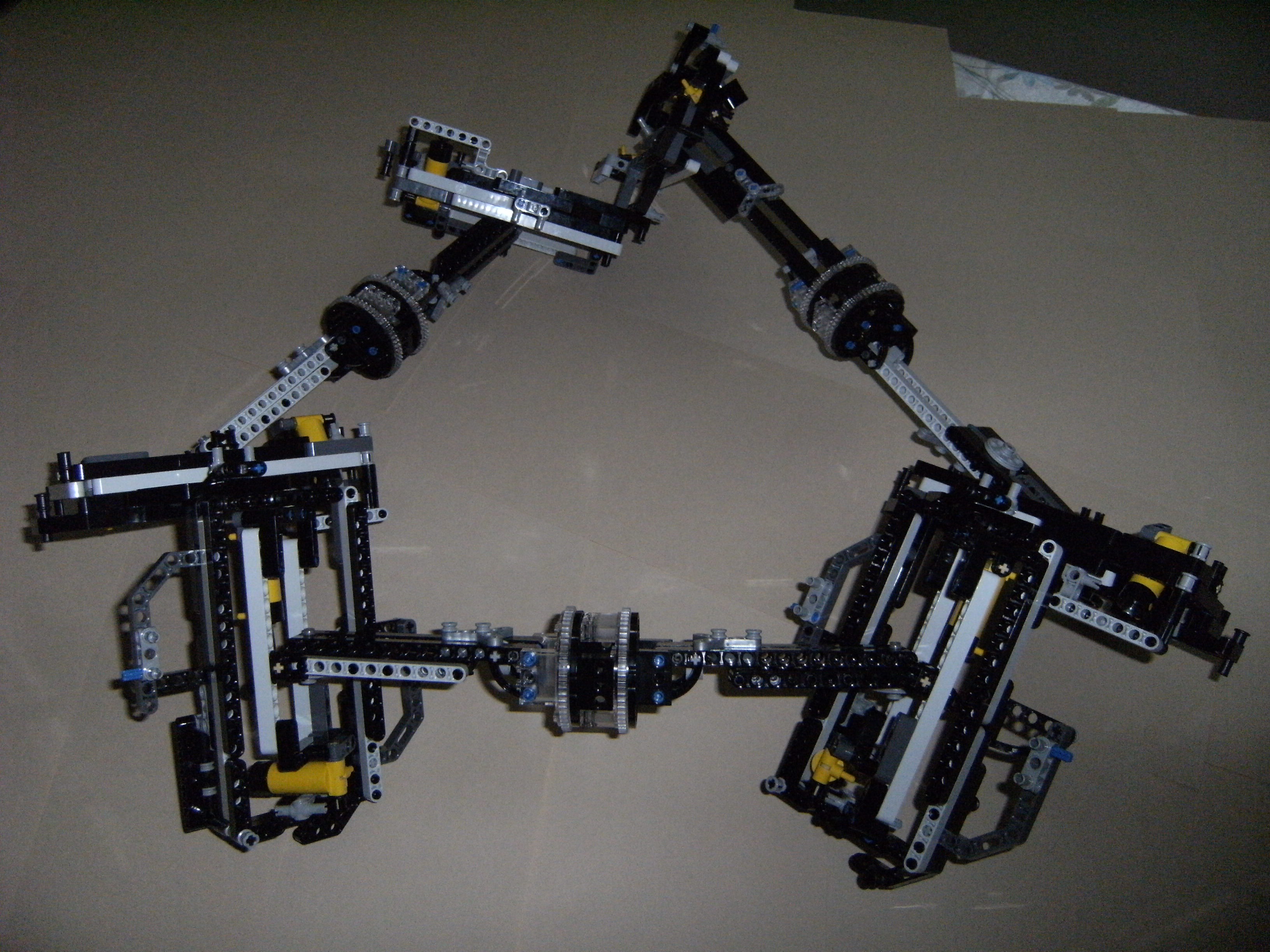 Set of six modules connected in a triangular loop pattern, with only one pair of legs fully extended.
Set of six modules connected in a triangular loop pattern, with only one pair of legs fully extended.
Figure 57. View 1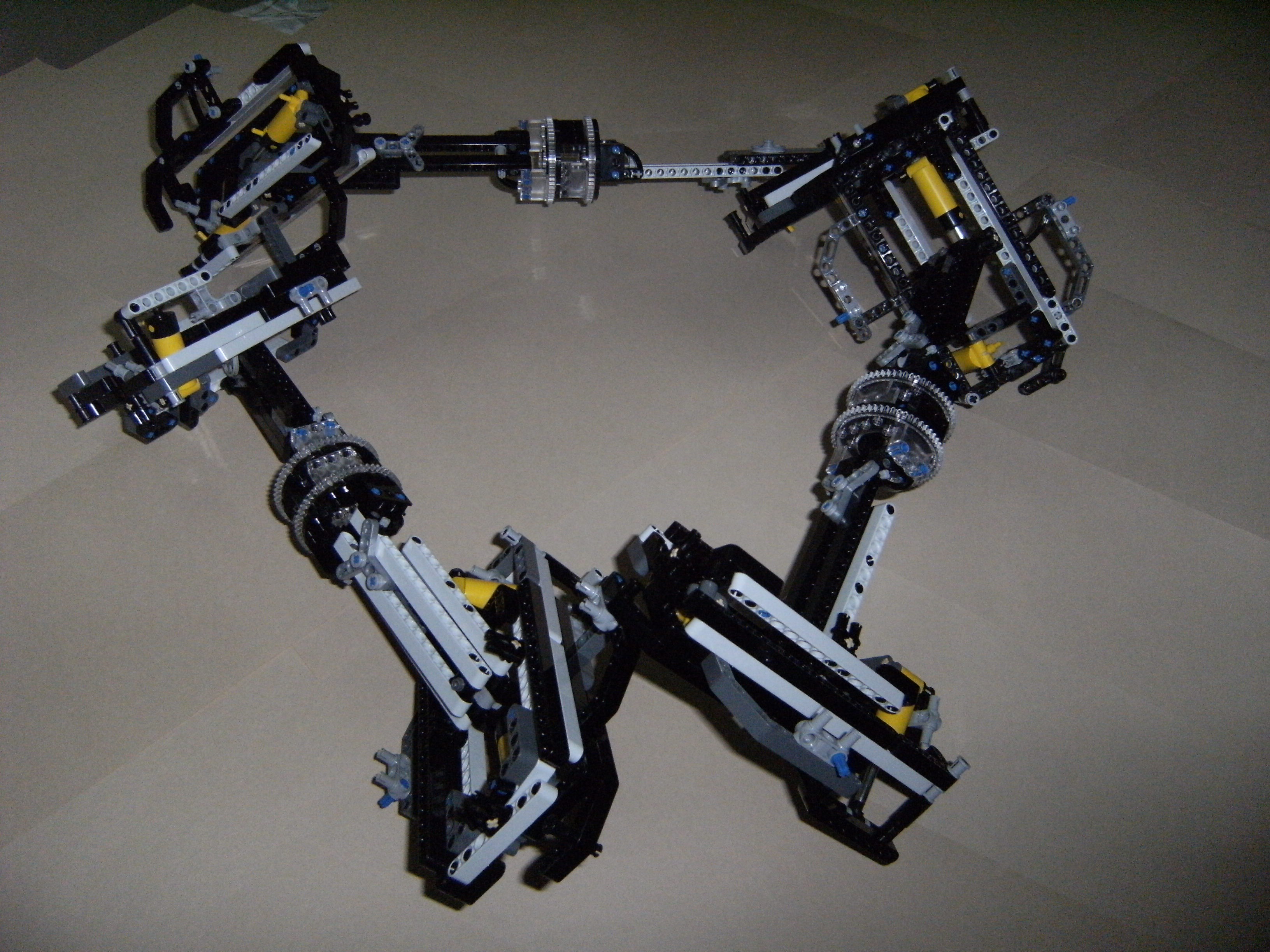 Set of six modules connected in a triangular loop pattern, with only one pair of legs fully extended.
Set of six modules connected in a triangular loop pattern, with only one pair of legs fully extended.
Figure 58. View 2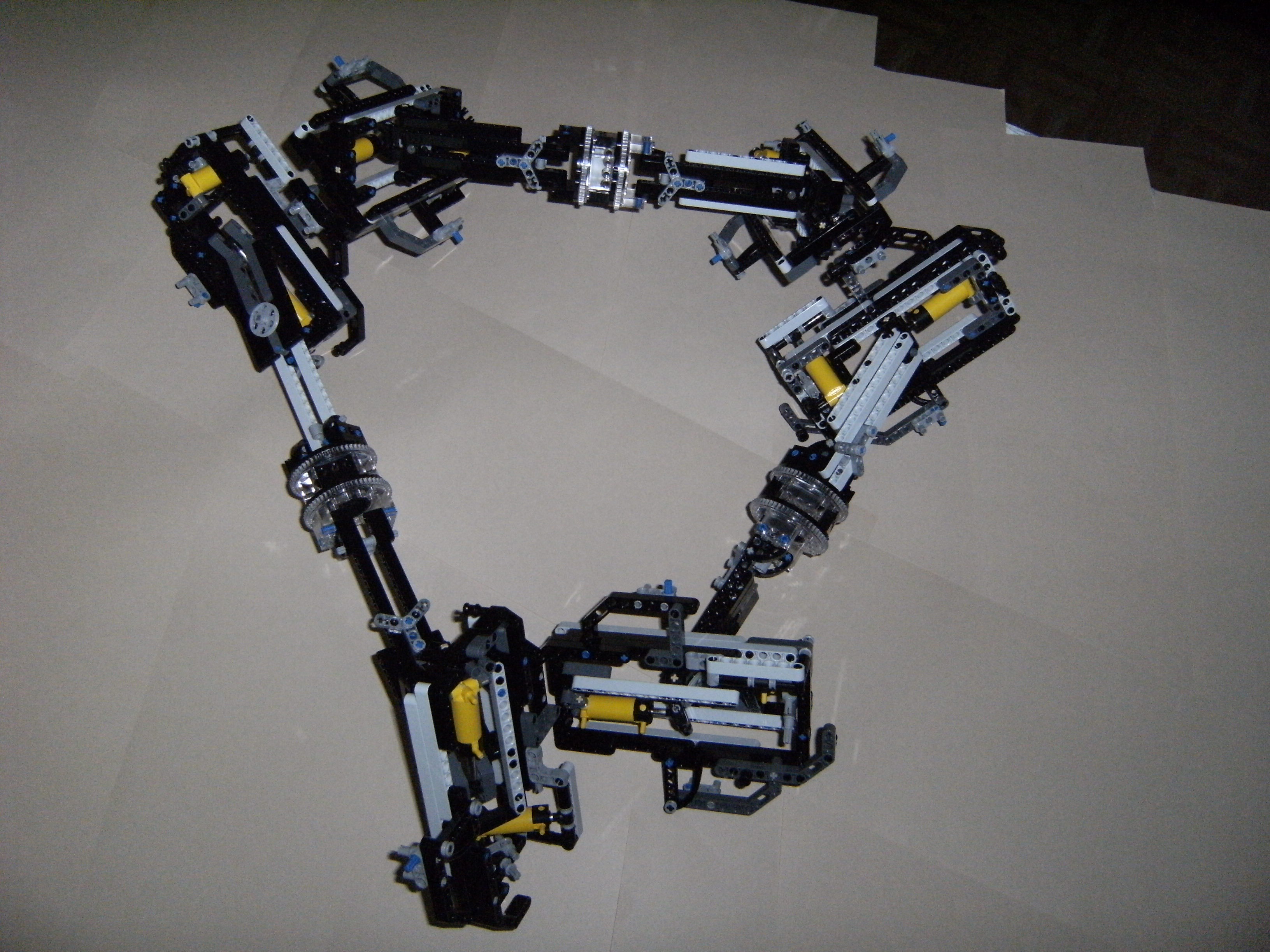 Set of six modules connected in a triangular loop pattern, with only one pair of legs fully extended.
Set of six modules connected in a triangular loop pattern, with only one pair of legs fully extended.
Figure 59. View 3 Set of six modules connected in a triangular loop pattern, with only one pair of legs fully extended.
Set of six modules connected in a triangular loop pattern, with only one pair of legs fully extended.
Figure 60. View 4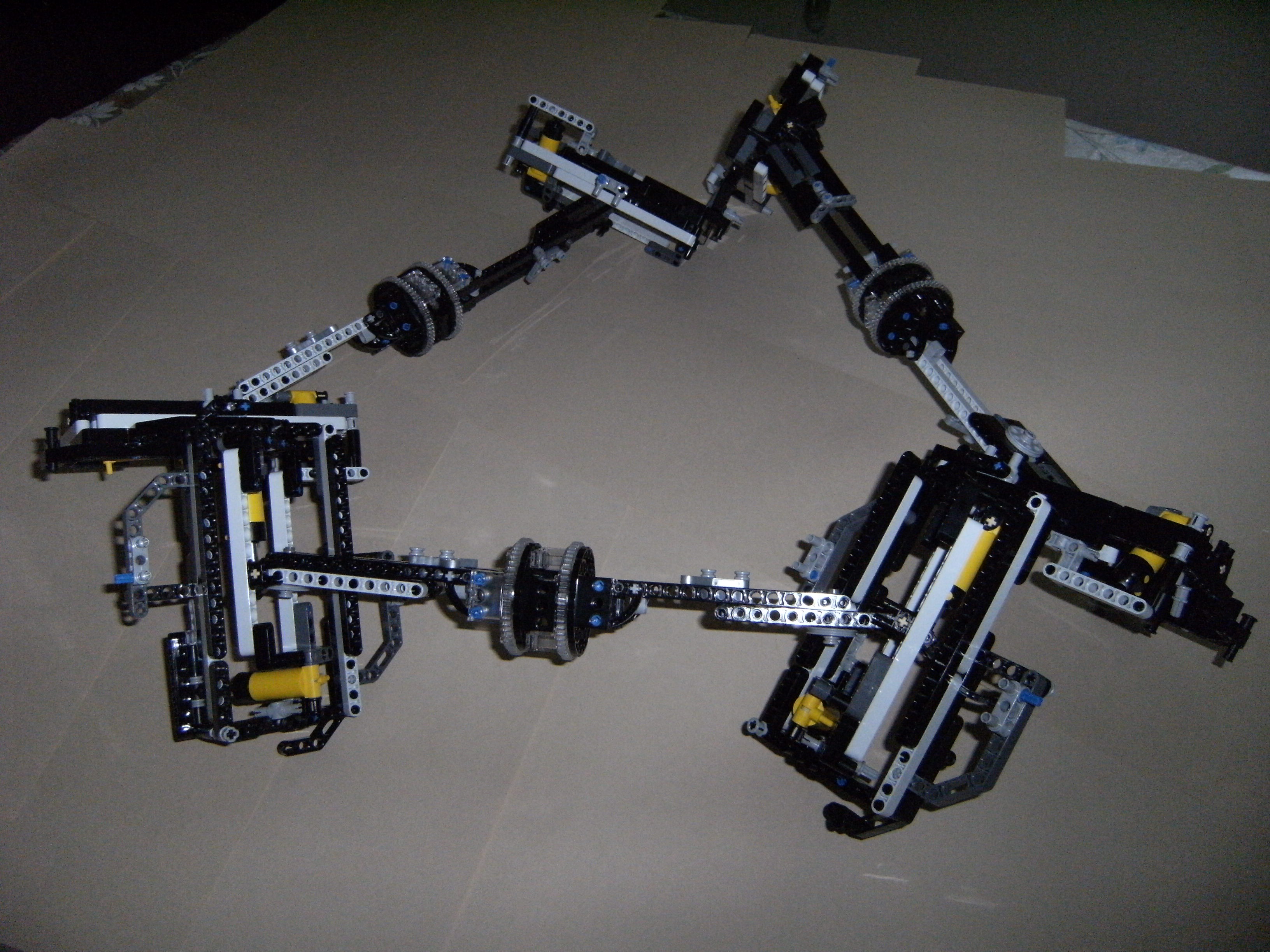 Set of six modules connected in a triangular loop pattern, with only one pair of legs fully retracted.
Set of six modules connected in a triangular loop pattern, with only one pair of legs fully retracted.
Figure 61. View 1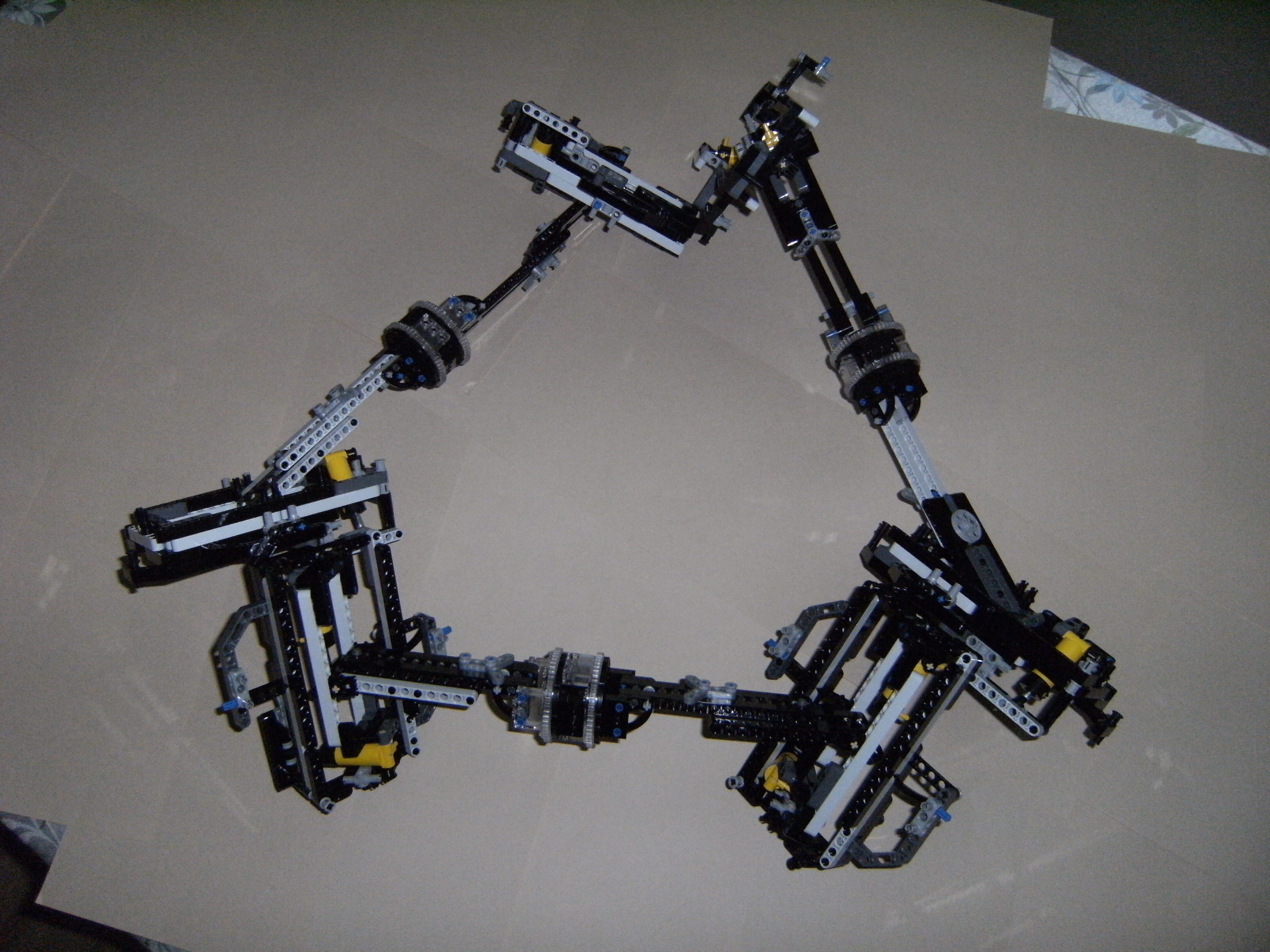 Set of six modules connected in a triangular loop pattern, with only one pair of legs fully retracted.
Set of six modules connected in a triangular loop pattern, with only one pair of legs fully retracted.
Figure 62. View 2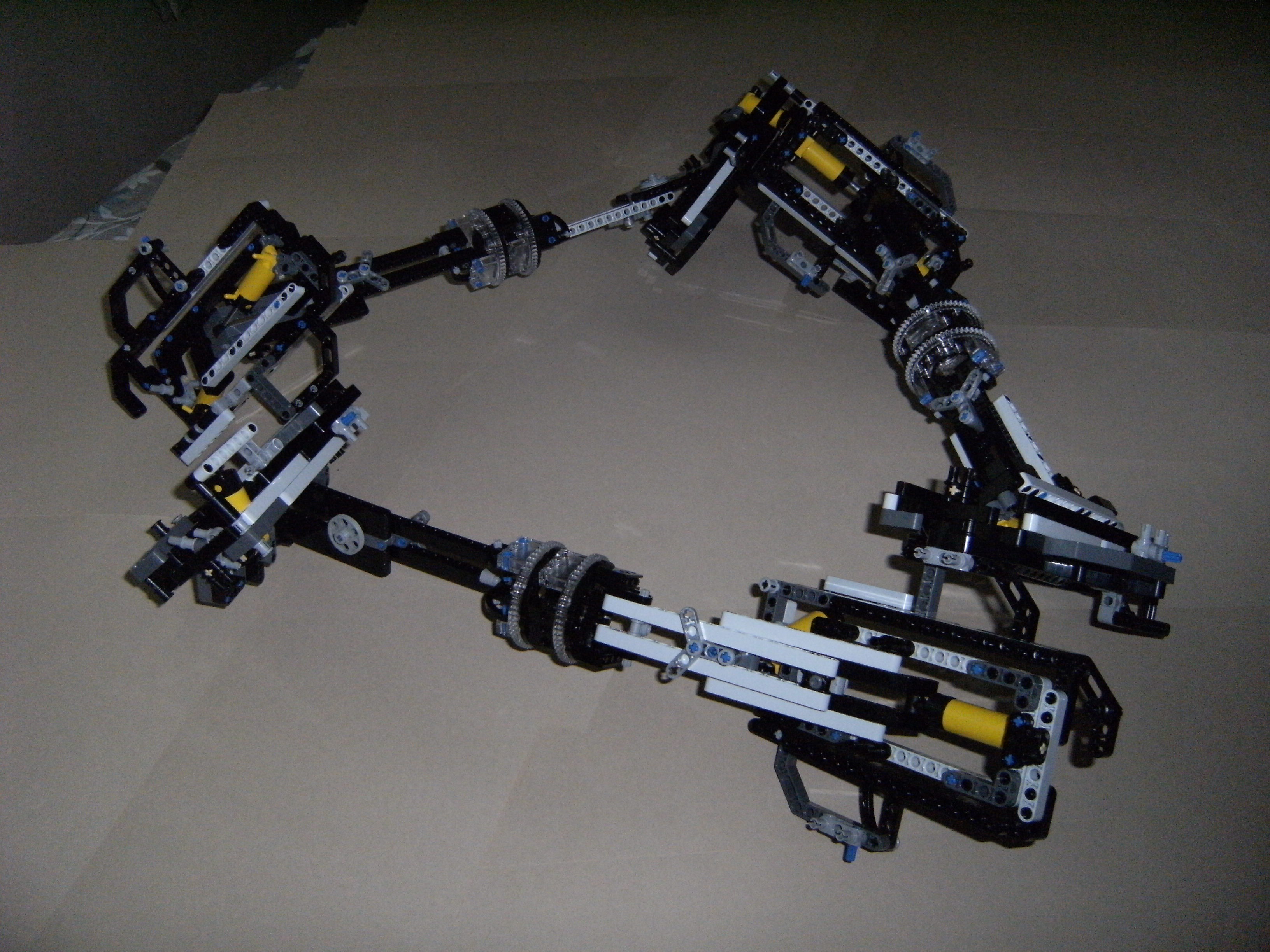 Set of six modules connected in a triangular loop pattern, with only one pair of legs fully retracted.
Set of six modules connected in a triangular loop pattern, with only one pair of legs fully retracted.
Figure 63. View 3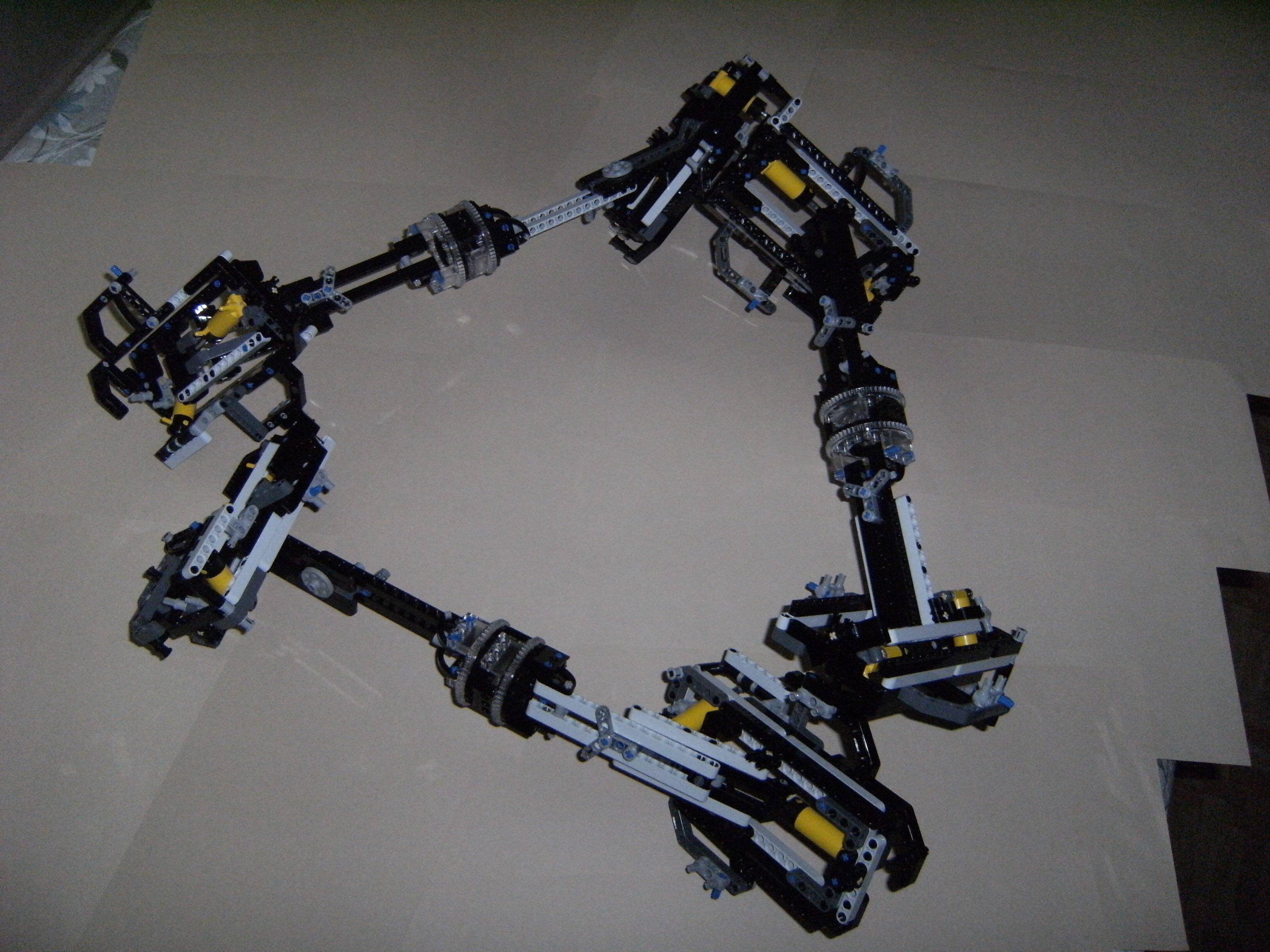 Set of six modules connected in a triangular loop pattern, with only one pair of legs fully retracted.
Set of six modules connected in a triangular loop pattern, with only one pair of legs fully retracted.
Figure 64. View 4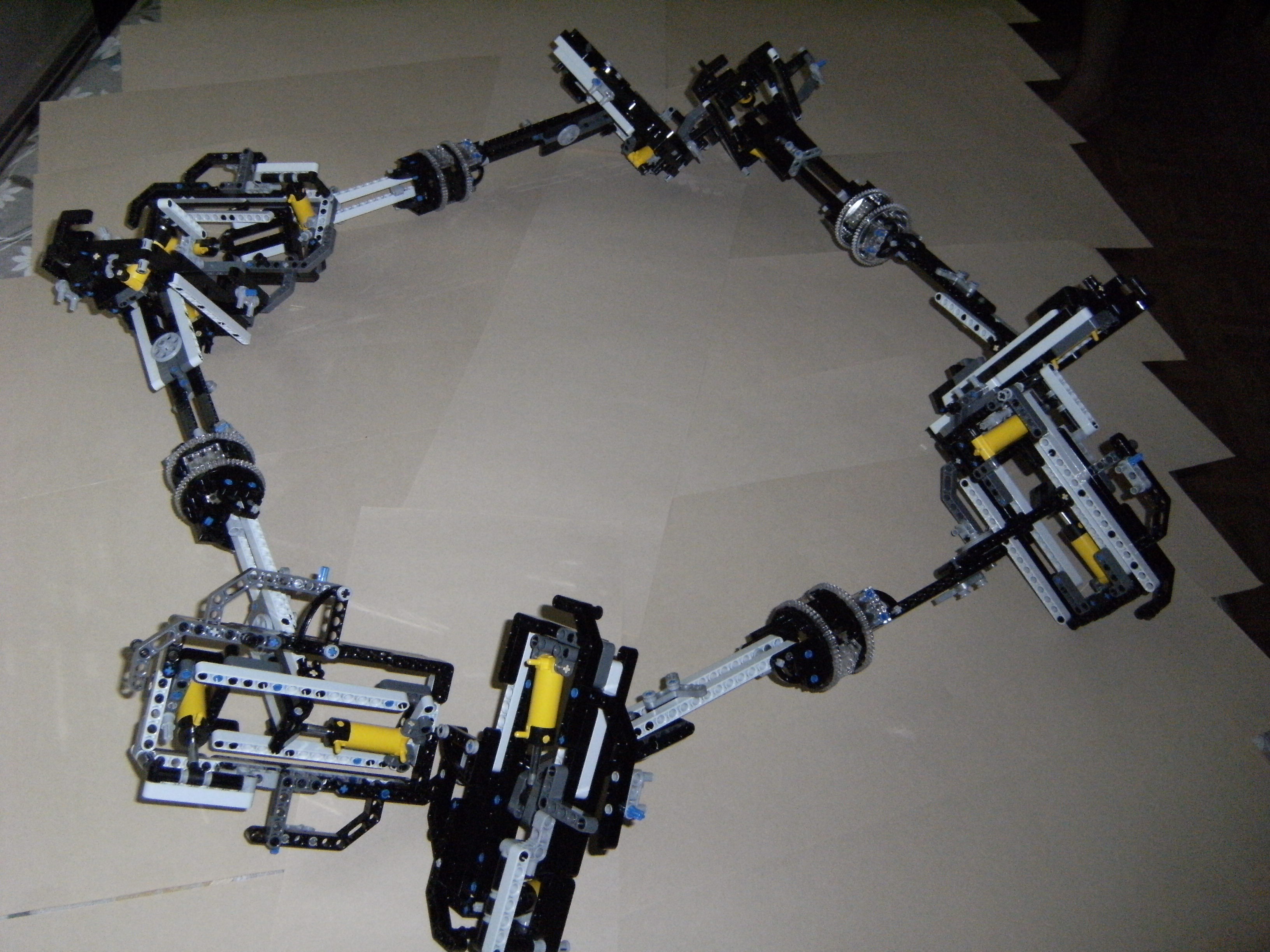 Set of eight modules connected in a rectangular loop pattern, with all legs fully retracted.
Set of eight modules connected in a rectangular loop pattern, with all legs fully retracted.
Figure 65. View 1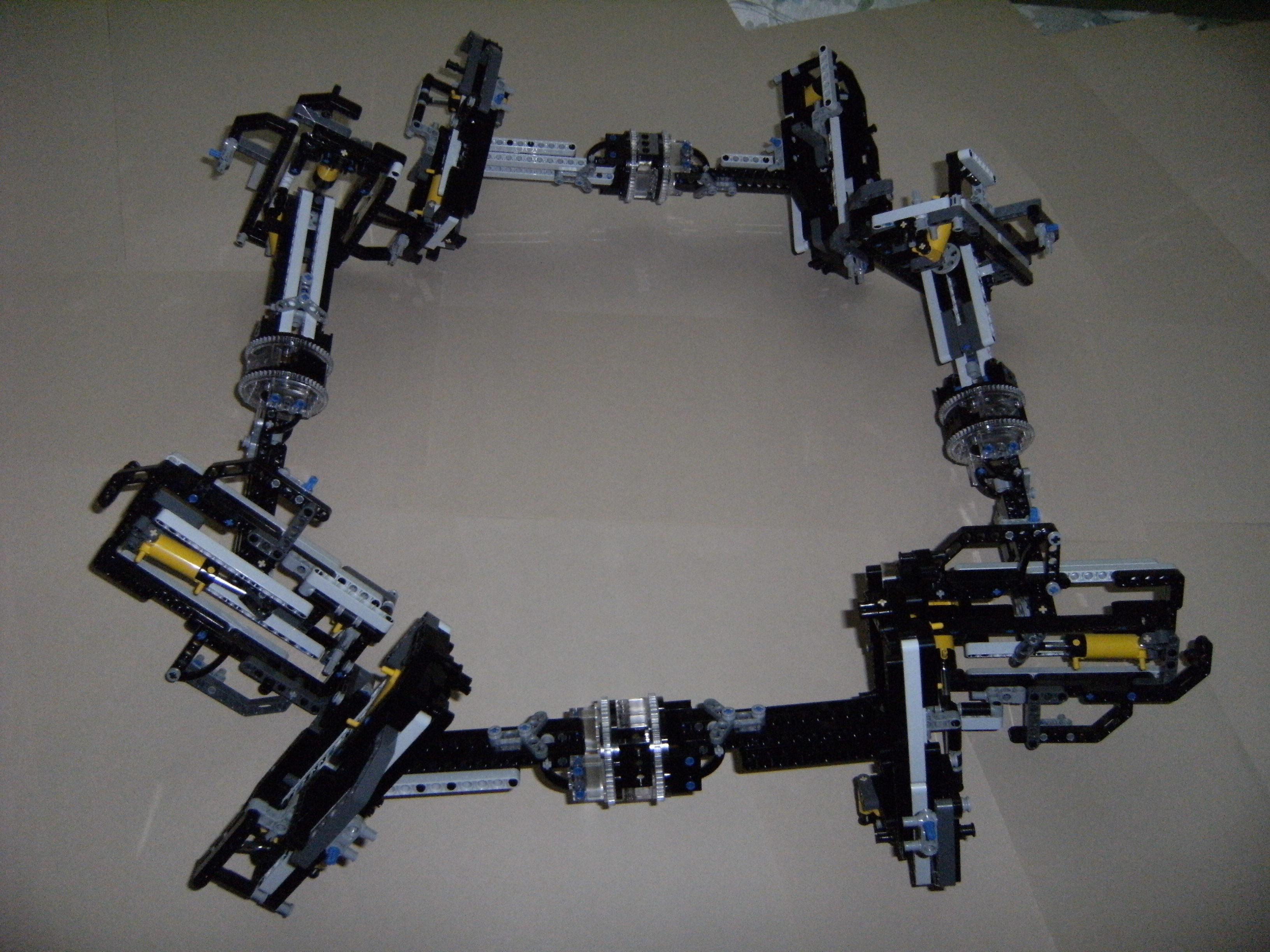 Set of eight modules connected in a rectangular loop pattern, with all legs fully retracted.
Set of eight modules connected in a rectangular loop pattern, with all legs fully retracted.
Figure 66. View 2 Set of eight modules connected in a rectangular loop pattern, with all legs fully extended.
Set of eight modules connected in a rectangular loop pattern, with all legs fully extended.
Figure 67. View 1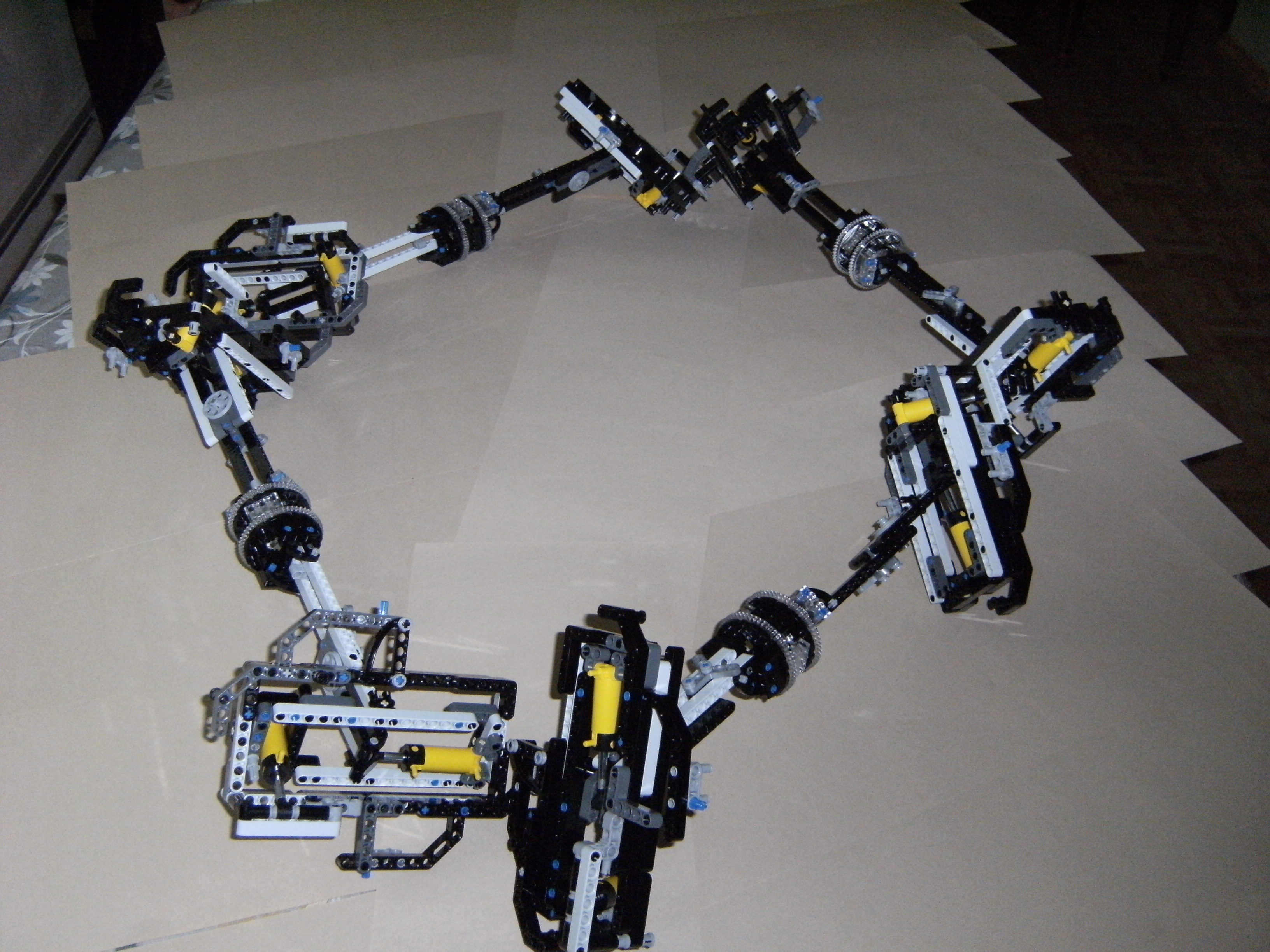 Set of eight modules connected in a rectangular loop pattern, with all legs fully extended.
Set of eight modules connected in a rectangular loop pattern, with all legs fully extended.
Figure 68. View 2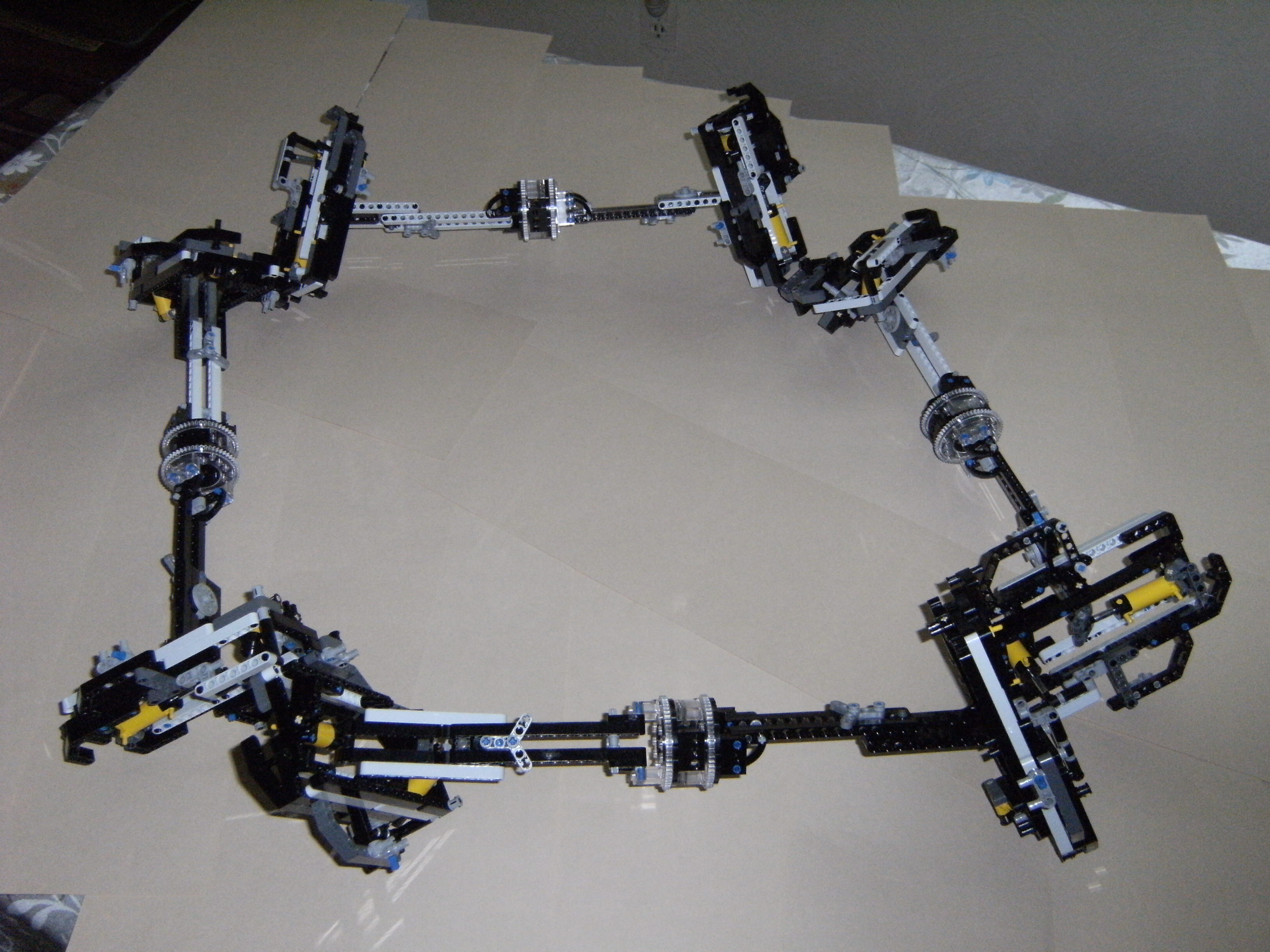 Set of eight modules connected in a rectangular loop pattern, with all legs fully extended.
Set of eight modules connected in a rectangular loop pattern, with all legs fully extended.
Figure 69. View 3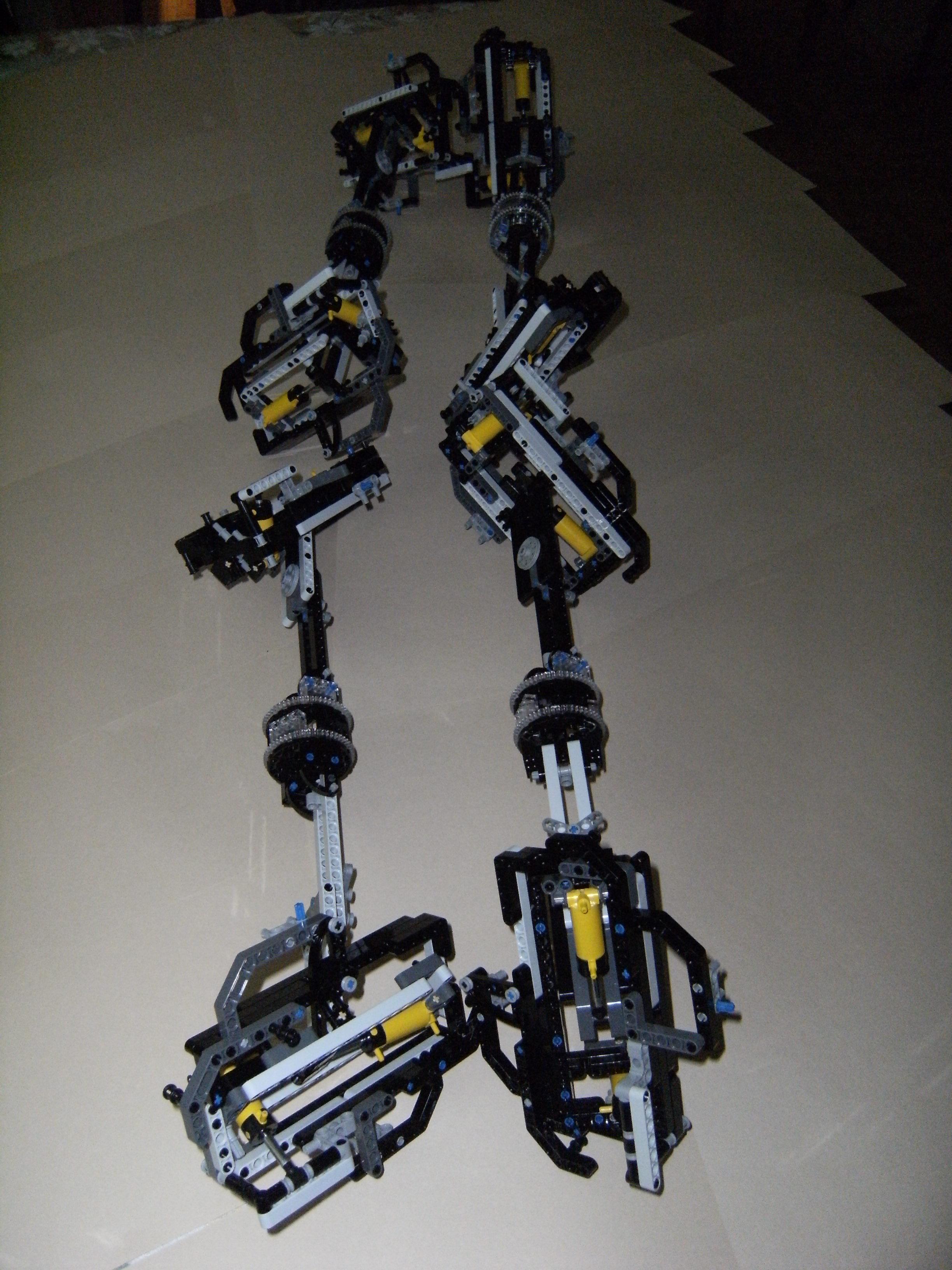 Set of eight modules connected in a stretched loop pattern.
Set of eight modules connected in a stretched loop pattern.
Figure 70. View 1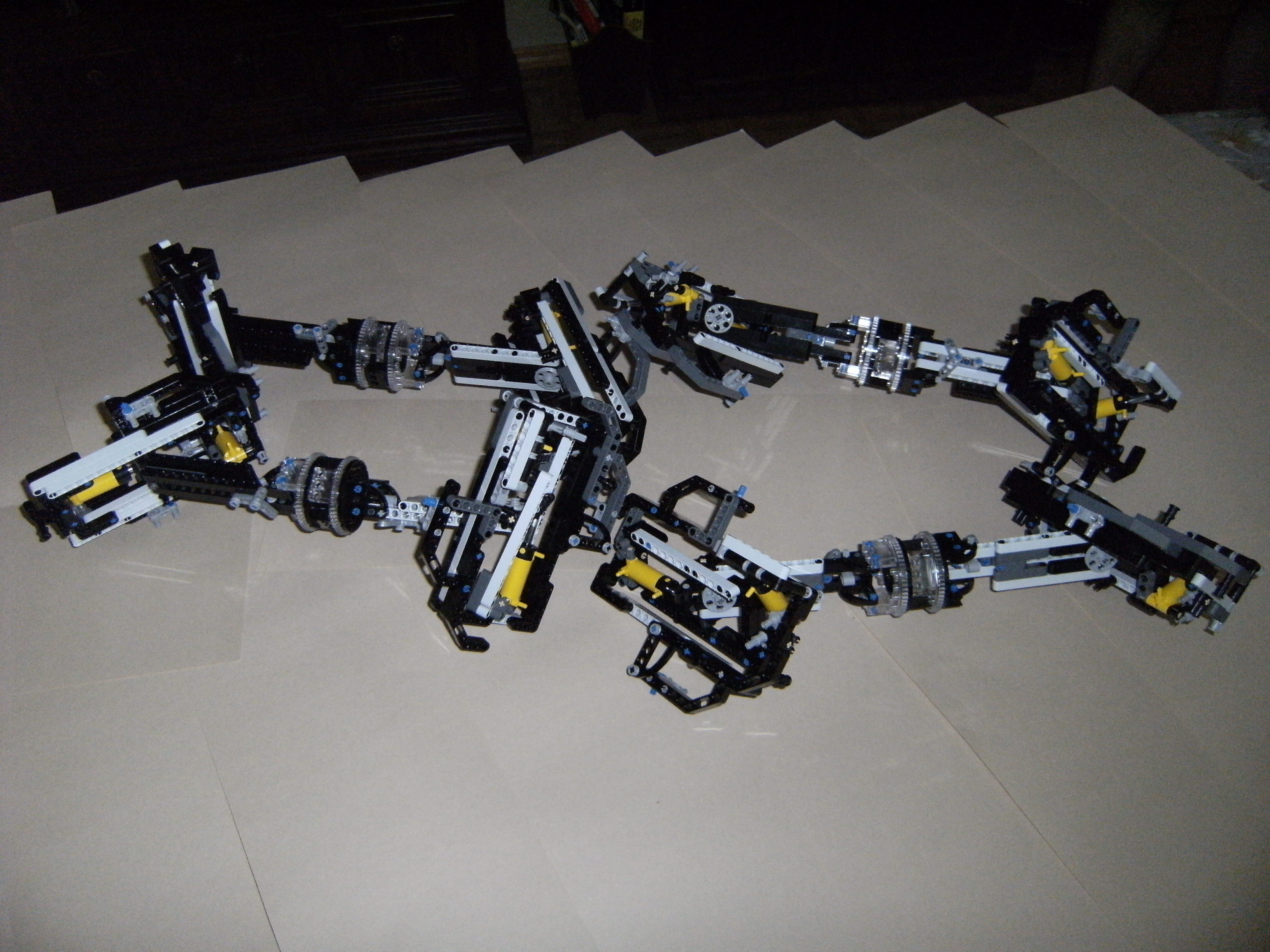 Set of eight modules connected in a stretched loop pattern.
Set of eight modules connected in a stretched loop pattern.
Figure 71. View 2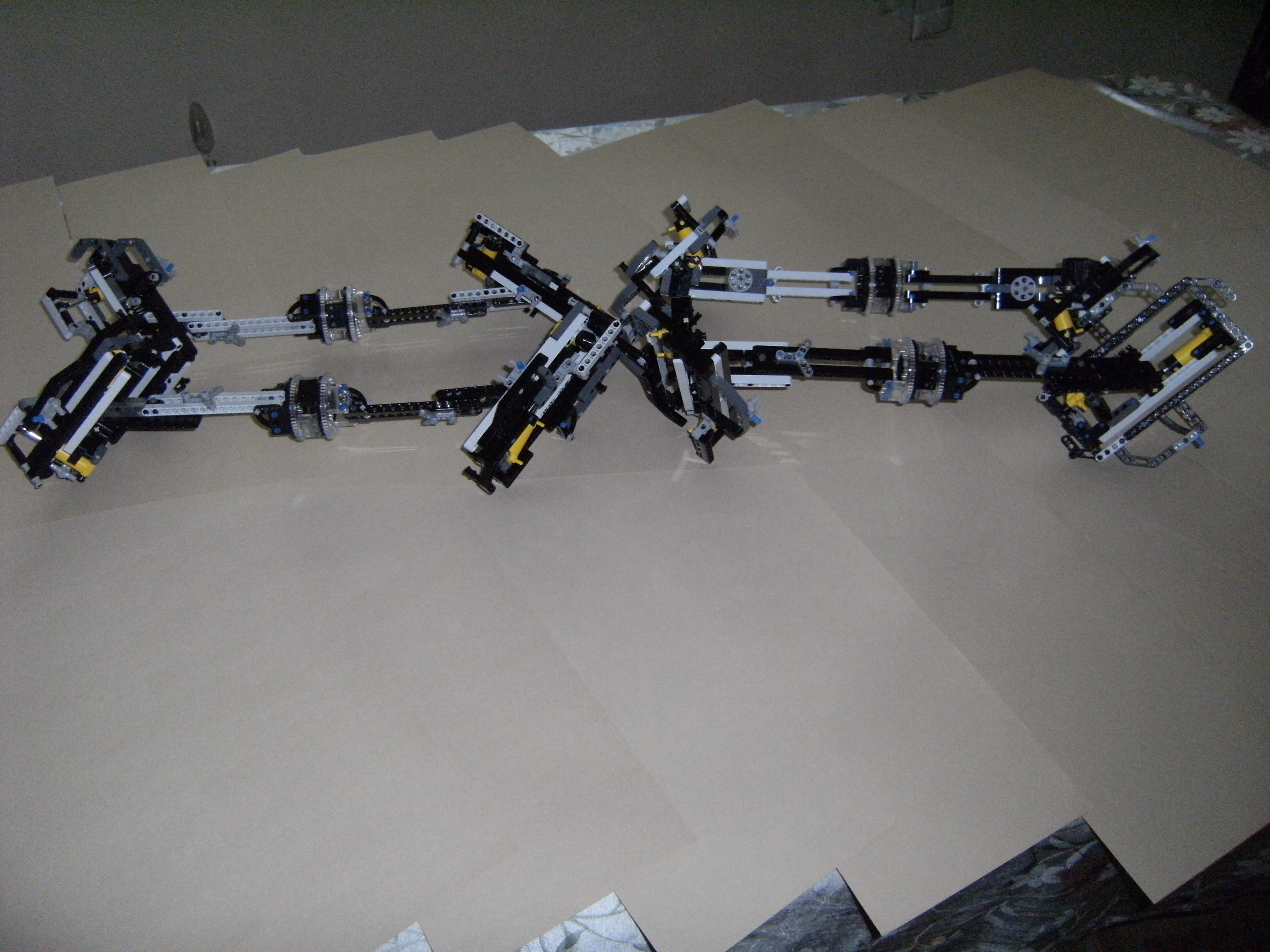 Set of eight modules connected in a stretched loop pattern.
Set of eight modules connected in a stretched loop pattern.
Figure 72. View 3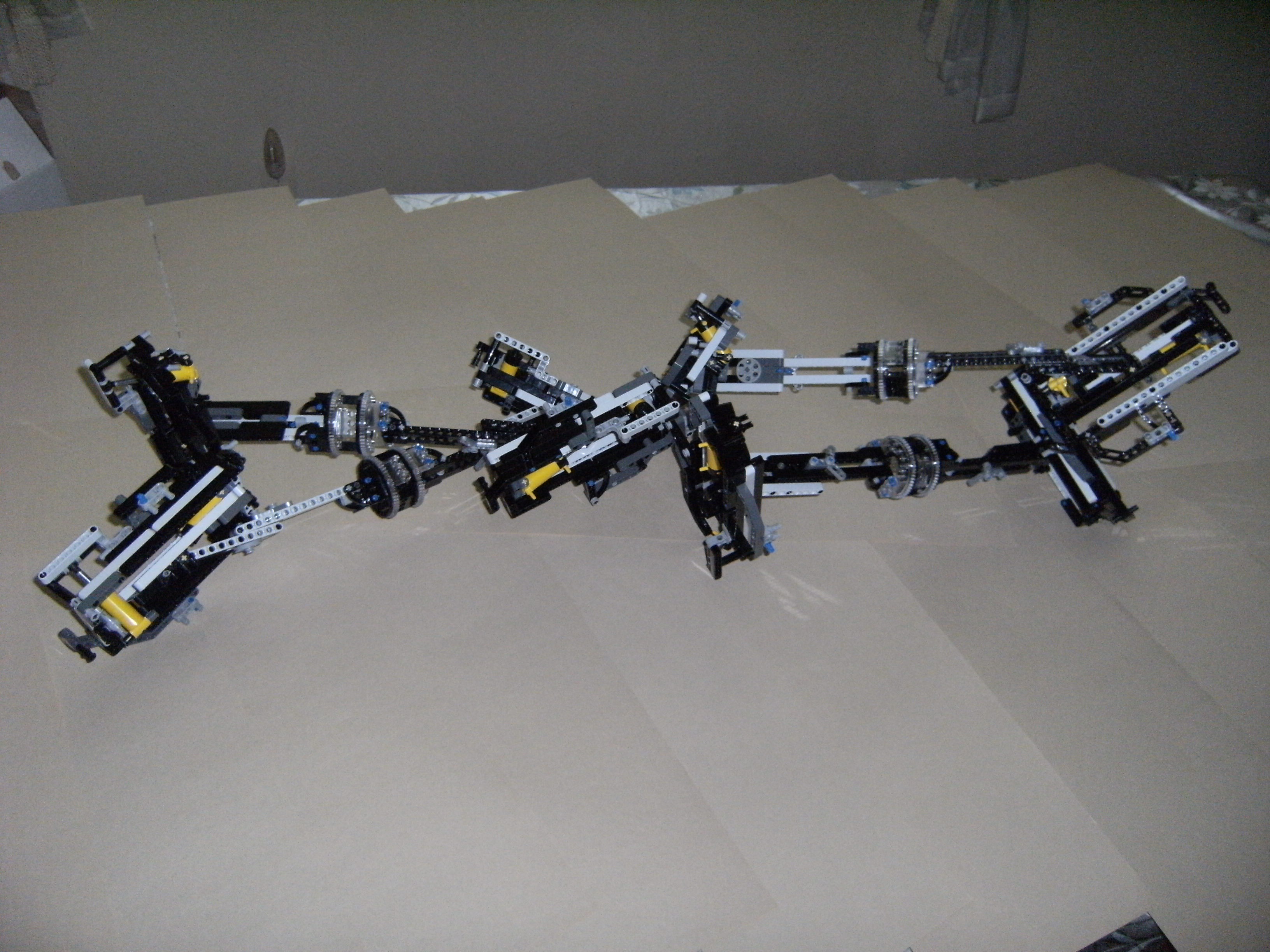 Set of eight modules connected in a stretched loop pattern.
Set of eight modules connected in a stretched loop pattern.
Figure 73. View 4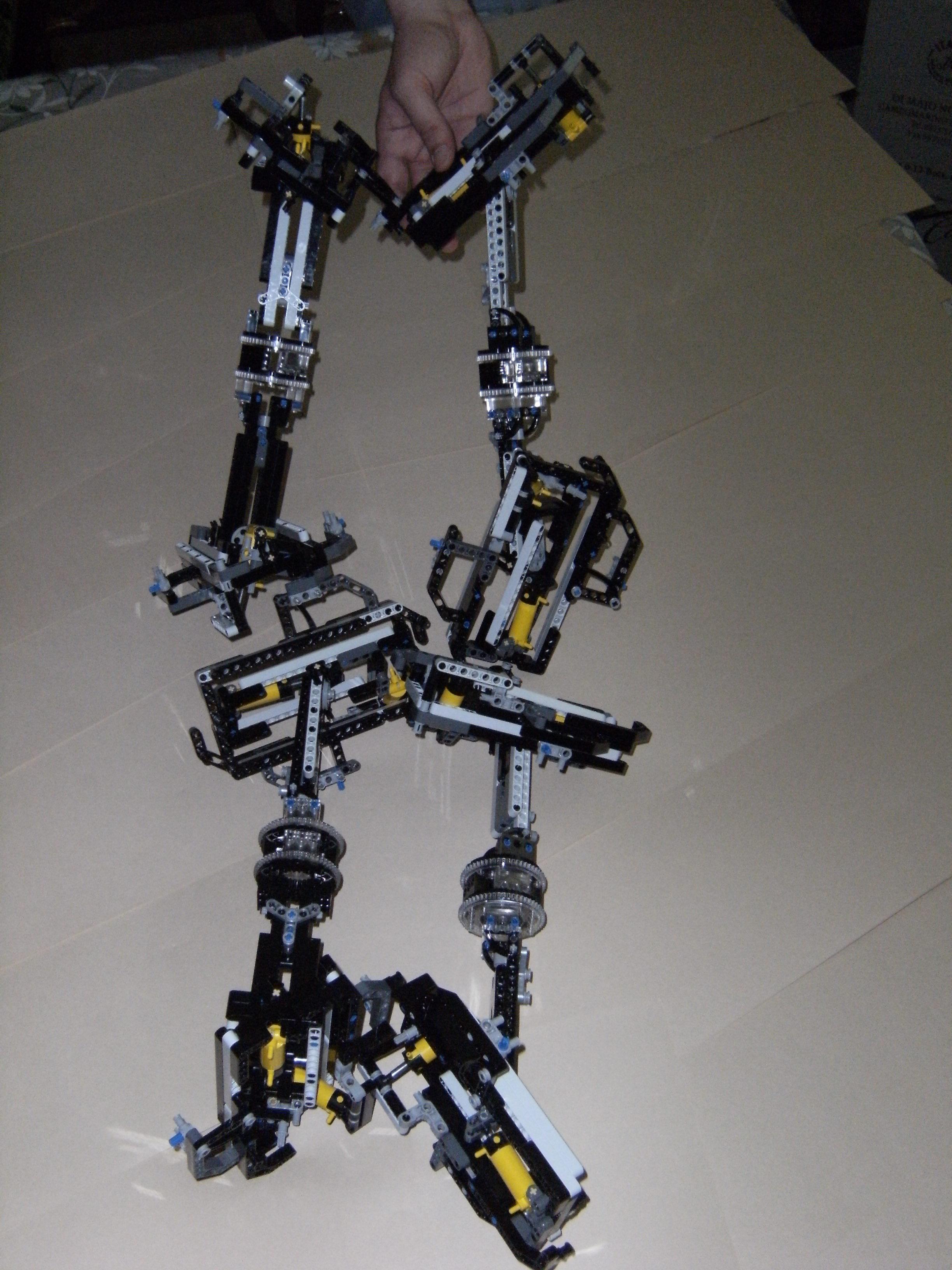 Set of eight modules connected in complex loop patterns.
Set of eight modules connected in complex loop patterns.
Figure 74. Curved pattern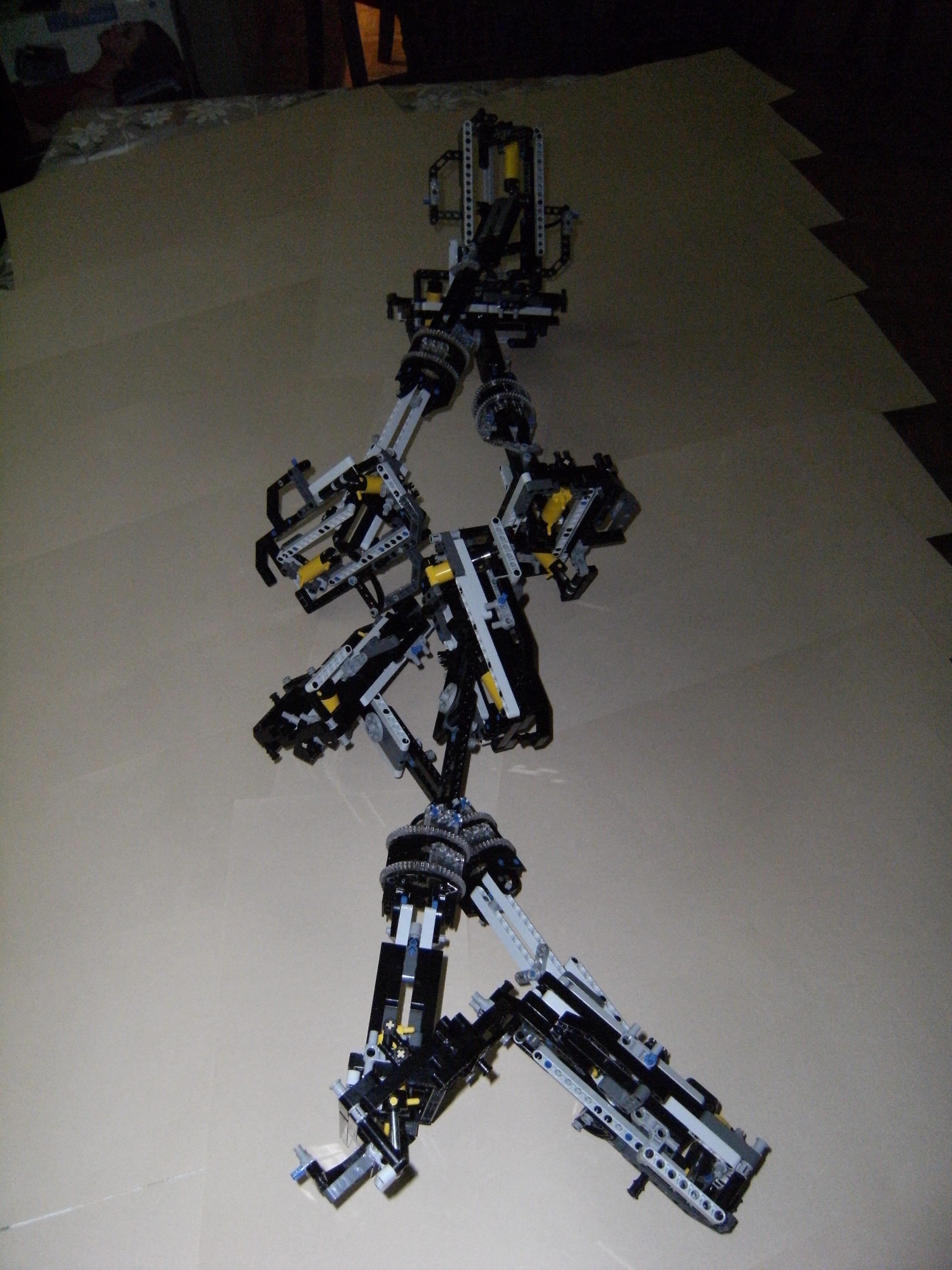 Set of eight modules connected in complex loop patterns.
Set of eight modules connected in complex loop patterns.
Figure 75. Twisted pattern

